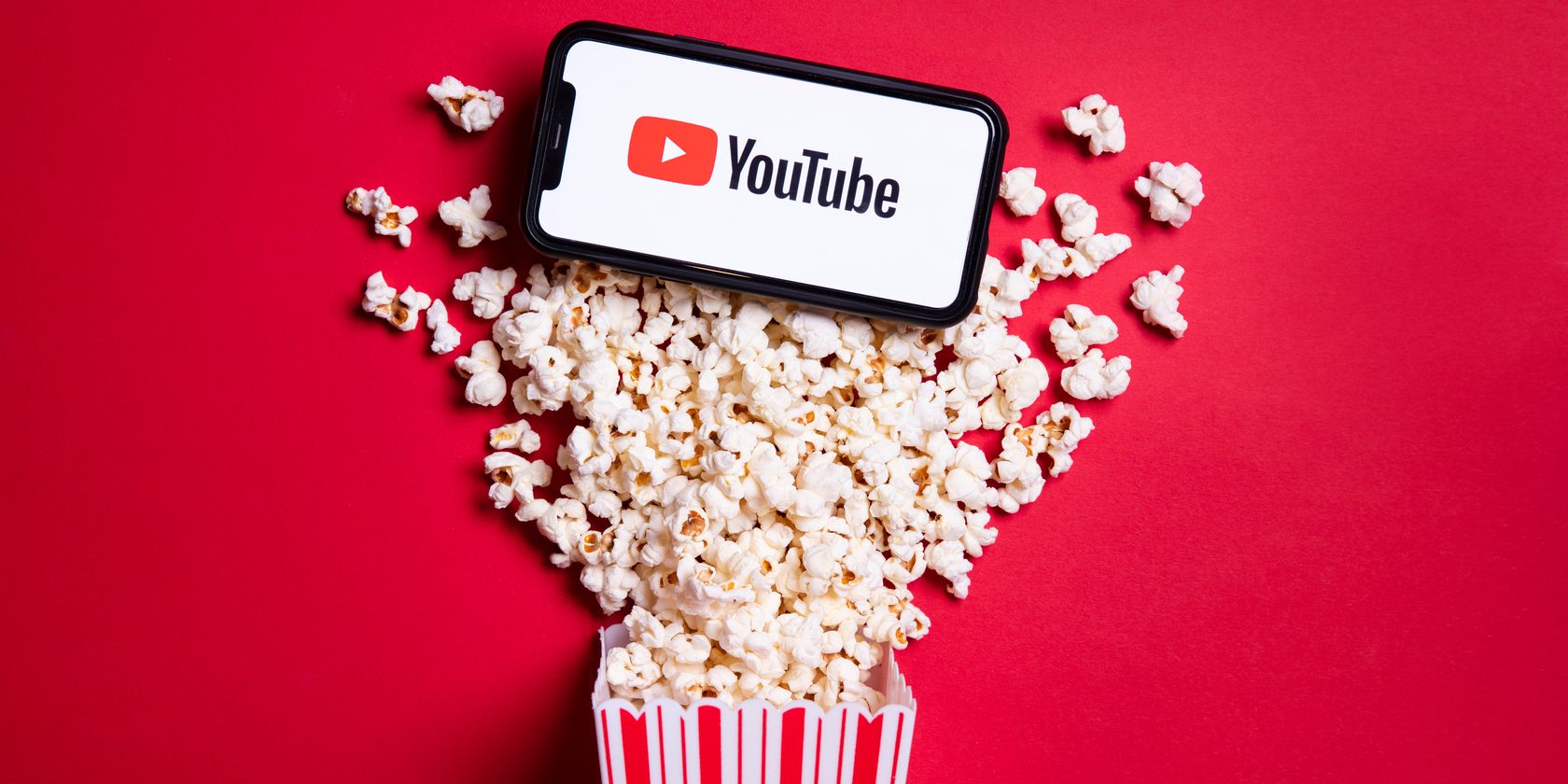Ronald.phillips
Shared posts
Historic Winter Storm Puts Huge Swath of America on Notice - CNET
The Best International Films Of 2022, Ranked
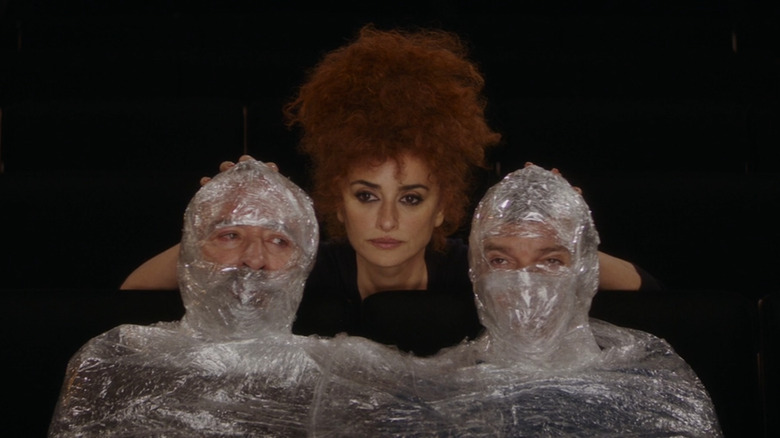
All the real cinephiles know that to find the best films in the world, one has to look beyond English-speaking cinema. "Parasite" brought some much-needed attention to non-English language cinema in America when it swept the Oscars in 2019, and the world has not stopped producing incredible films in the years since. Luckily for you, I watched dozens of the best films from around the world this year and picked out the cream of the crop so you didn't have to. I expanded my search beyond the festival circuit and found movies that excel in every genre, from action and adventure to slow-burning dramas, so there will be something in here for everyone.
The global cinema of 2022 is haunted by the pandemic. It is up close and personal and a little bit scatterbrained. It is actively commenting on the cinematic tropes of yesteryear and transforming them into a spectacle. It is pulling references and genres from throughout space and time to deliver a never-before-seen version of familiar stories. If you've never watched anything with subtitles, this list is a great place to start. The canon of must-see, globally renowned films stretches back to the dawn of cinema and expands every year. Forget what normally appeals to you. I encourage you to open your mind and step outside of your comfort zone — for the love of movies.
10. Bardo, False Chronicle Of A Handful Of Truths
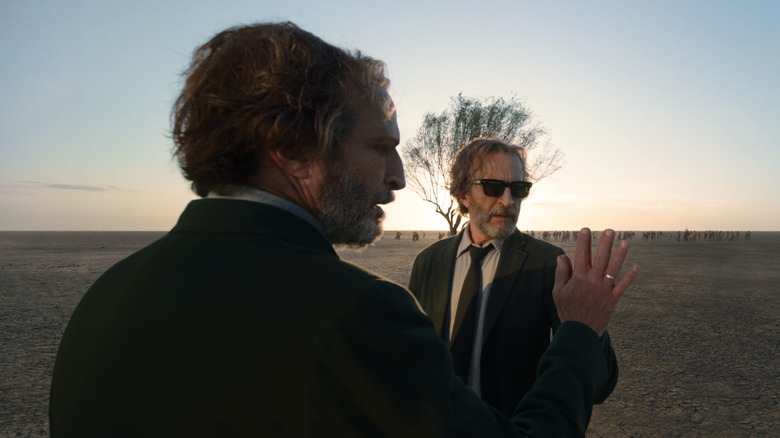
In this 2022 Netflix film, the director of "Birdman" gives his eclectic take on Federico Fellini's "8 ½." A documentary filmmaker navigates a dreamy landscape surrounding his latest work, "False Chronicle of a Handful of Truths." Filmmaking is like a materialized dream — it brings a subjective reality to life. Since the documentary medium claims objectivity, it is all the more false, which adds a totally new dimension to Fellini's original story.
Director Alejandro González Iñárritu's signature dynamic camera tracks the main character's movement in and out of scenes. This style lends itself perfectly to the film's dreamscape and illogical progression from scene to scene. We are at Gacho's whim as he navigates his unpredictable universe. The story unfolds slowly, but it does not come easily. Iñárritu trusts his audience to understand his playful approach to narrative. "Bardo" is a spiritual remake of "8 ½" to be sure, but it's fun to see the original film's maximalism and dreaminess applied to the contemporary world, an infinitely more maximalist and incomprehensible climate.
9. Corsage
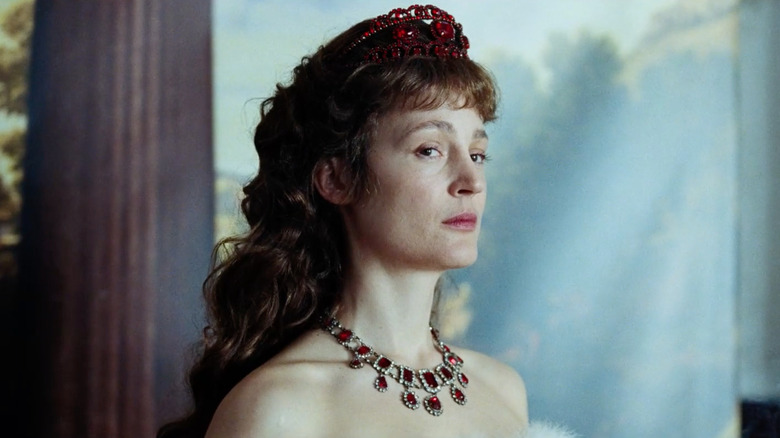
If you're a fan of lush period dramas about angsty women like "Portrait of a Lady on Fire" and "Spencer," look no further. "Corsage," directed by Austrian director Marie Kreutzer, features an unforgettable lead performance from Vicky Krieps as the Austrian empress Elizabeth. As her country clings to their monarchy, the empress clings to her youth while she moves into middle age — and pisses just about everyone off in the process. She embarasses her children and her husband by throwing social convention to the wind, but she seems to be the only one to recognize that this social convention is dying and giving way to a new order. What makes this antihero most interesting is that she's not always sympathetic, but she remains compelling till the very end. No need to take my word for it — the actress also earned the distinction of Un Certain Regard at Cannes Film Festival.
"Corsage" was one of the more beautiful period pieces I've seen in years, which is perhaps the main reason why it earned a spot on this list. No detail was spared, from the distinctive hairstyles of the Austrian aristocrats to the expensive palace interiors to the cartoonishly appetizing pastries. Nothing stood out as cheap or phoned in, so there was nothing to pull me out of 1800s Austria — I was locked in from beginning to end.
8. EO
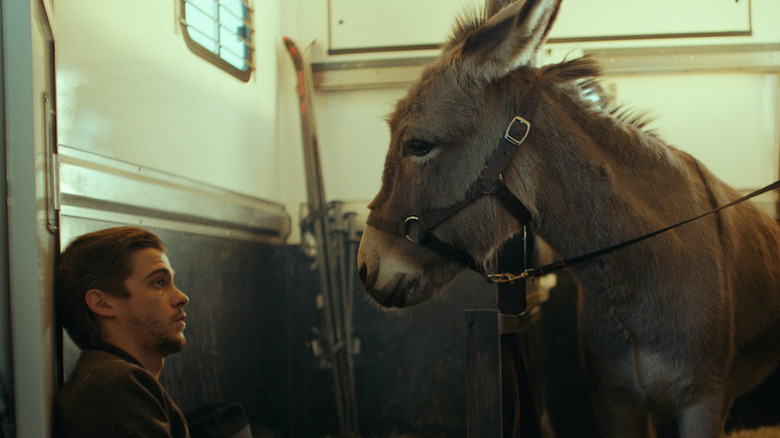
The main character of "EO" might be an adorable little donkey, but he does not get the Disney treatment. EO isn't ascribed human characteristics, like "Babe." We sympathize with EO because he is an animal, not in spite of it. He is helpless as people project their own image onto him, one that subjects him to violence and spectacle. The film was full of beautiful landscapes and sweeping wide shots, but even more intriguing were its close-ups of the protagonist. One part of me wanted to ascribe emotion behind his eyes, to feel the animal's pain as my own. Another part of me saw the unthinking and unfeeling way of nature — much like how Werner Herzog describes the bears' gaze in "Grizzly Man."
We see the darker instincts of humanity play out in "EO." Much like in Robert Bresson's classic film, "Au Hasard Balthazar," the cruelty of human nature is crystalized through the eyes of an innocent creature. At times we are even brought into the emotional world of the donkey through POV shots from EO's height or impressionistic lighting so red it feels like the scene has been soaked in blood. Jerzy Skolimowski's award-winning film isn't action-packed, and yet there is never a dull moment — a testament to its subdued power.
7. In Front Of Your Face

The director Hong Sang-soo is known for simple and touching dramas like "On the Beach at Night Alone," and he is at his best in "In Front of Your Face," a contemplative slow-burning narrative about a woman visiting her sister in Korea after moving to America many years earlier. The stakes of the meeting feel high, as if their time apart has made them realize that each meeting could be their last.
"In Front of Your Face" is comprised mostly of very long wide shots, the director's signature style. Scenes unfold like a play before the viewer. The static camera creates few visual changes within a scene, so the slightest adjustment in tone or posture holds a lot of weight. That, which would usually bore me, felt exciting and full of tension, like the subtle flirtations of the main characters in "The Age of Innocence." Hong fits humor, drama, romance, and music into just a few shots.
The film also appears to have been shot on an iPhone, giving it the texture of a vlog or a videogame. The grain of the phone camera made the film feel more true to life than the hyper-realistic detail of the digital camera. I wanted to immerse myself in the world of this film and take a long, peaceful stroll.
6. The Worst Person In The World
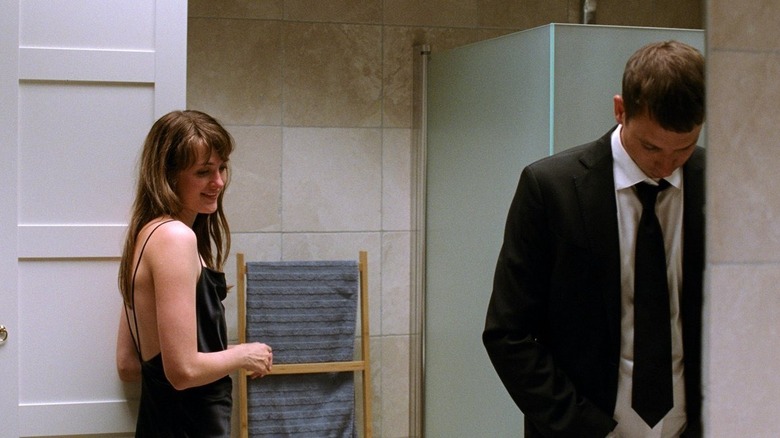
"The Worst Person in the World" can be viewed from two completely different perspectives. On the surface, it reads as a modern young woman's triumph of self-discovery. Lots of people loved this movie because this message appealed to them, but this simplistic thesis repelled me. Why would I want to see a male director try to illustrate an innately feminine experience, especially when a female director could accomplish the very same?
When I finally sat down to watch this film, I found something much more cynical than I expected. Every scene made my stomach churn in some entirely new way, an effect that may have been unintentional but was nonetheless incredibly powerful. The B-plot about the subversive comic Bobcat, however, made me question the director Joachim Trier's true stance on contemporary feminist messages.
Julie's path paralleled the protagonist of Eric Rohmer's "The Green Ray," as if Julie was the blob girl millennial answer to Rohmer's Delphine. Does Trier execute this portrait of a modern woman's hysteria more successfully than existing work like Lena Dunham's "Girls?" Maybe not. However, I do feel that "Worst Person" is similarly misunderstood, which is why I felt compelled to include it here.
5. Decision To Leave
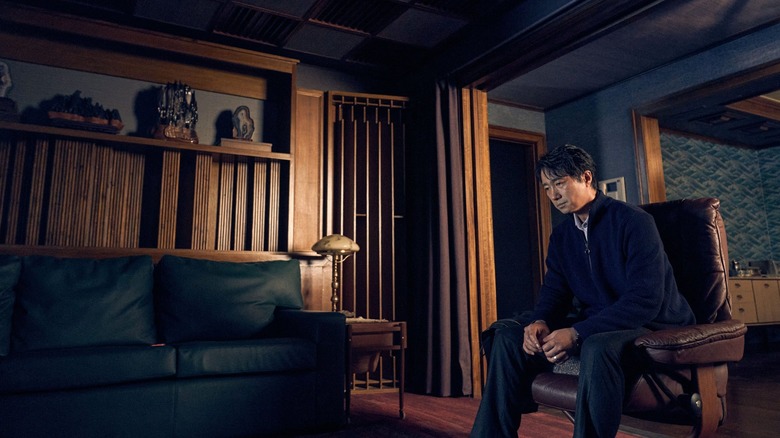
What begins as a fast-paced murder mystery devolves into something even more mysterious — the pursuit of a single woman. As a fan of the director Park Chan-wook's films like "Oldboy" and "The Handmaiden," I knew I was in for a twist or two that I wouldn't see coming. What I truly didn't expect was for Park to delve even further into the feminine psyche, as he had begun to do in "The Handmaiden."
"Decision to Leave" felt more like a turn-of-the-century novel written by a woman than a film made by Park Chan-wook. The film still has Park's touch, so his fans will not be disappointed, but the director strays further into the realm of ambiguity than ever before. The narrative spins itself into a furled-up mystery that is perhaps even more impossible to untangle than any of Park's previous work. Rather than tying itself up with a bow, this neo-noir is more comparable to "The Big Sleep" than "Double Indemnity."
This Korean crime film pulls at your heartstrings, so watch at your own risk. My friend and I watched this together and we both cried during the screening ... and a little bit after.
4. RRR
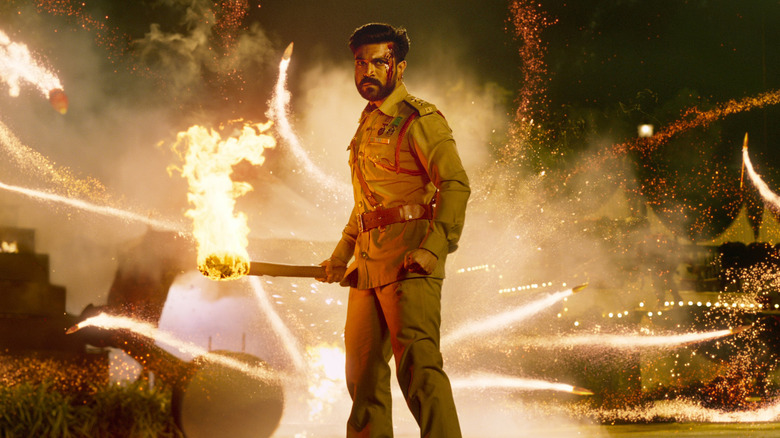
Every moment of action in "RRR" was totally hyperreal. One man mows through a crowd of hundreds. People fly through the air and shoot rifles mid-jump, landing perfect bulls-eye shots. War is made into a choreographed dance, and choreographed dances are pure ecstatic joy. The two main characters, Rama and Bheem, are both insanely epic and compelling. They've got moves on the battlefield and on the dance floor, and the ladies love them — even the British ones.
The story is a perfect cat-and-mouse narrative, with the main characters acting as both foils and mirrors of one another. Their friendship is full of upbeat, heartfelt, and complicated moments. Despite the long runtime, the plot unfolds at a perfect pace and reveals happen at all the right moments. I'd highly recommend this movie if fast-paced fun with over-the-top action is at all appealing to you — think "Train to Busan," but with tigers.
Old Hollywood musicals like "Singin' in the Rain" fit their musical moments in with awkwardly crafted scenarios, while contemporary examples like "In the Heights" move the plot along through the lyrics. In "RRR," music is a poetic punctuation of an emotional moment. If you're watching the English dub, I'd recommend turning on the subtitles for full lyrical impact, but the Telugu-language version is, of course, the best method of viewing.
3. Saloum
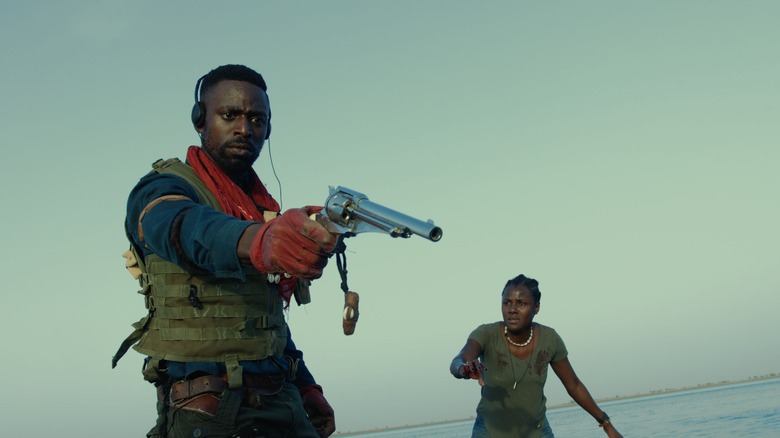
I signed on for a fast-paced crime thriller a la Quentin Tarantino, but what I got was a horror game with beautiful graphics, a haunting score, and a moving plot about war and spirituality in Africa. I laughed, I cried, and I jumped out of my seat. I'm not usually a fan of primary color palettes, but "Saloum" manages to mute everything on screen into a dusky texture that feels gothic and digitally rendered.
The playful tone, gritty subject, and quirky title cards reminded me of "The Hateful Eight" at first, while the landscape and costuming reminded me of "Fallout New Vegas." The score and the growing tension were reminiscent of my favorite anime, "Cowboy Bebop," and the horror elements reminded me of the mystical Thai film, "Uncle Boonmee Who Can Recall His Past Lives."
"Saloum" is eclectic, with moments of meditation and thrilling action sequences. The plot was full of surprises and didn't lull for a single moment. Once it started, I couldn't look away once — every moment of the 90-minute runtime is utilized to the fullest. I would recommend this film to just about anyone, from action movie buffs to video-game nerds to fans of stylistic horror like "Sucker Punch" and "Crimson Peak." If you love movies at all — and maybe even if you don't — you will find something to love about "Saloum."
2. Official Competition
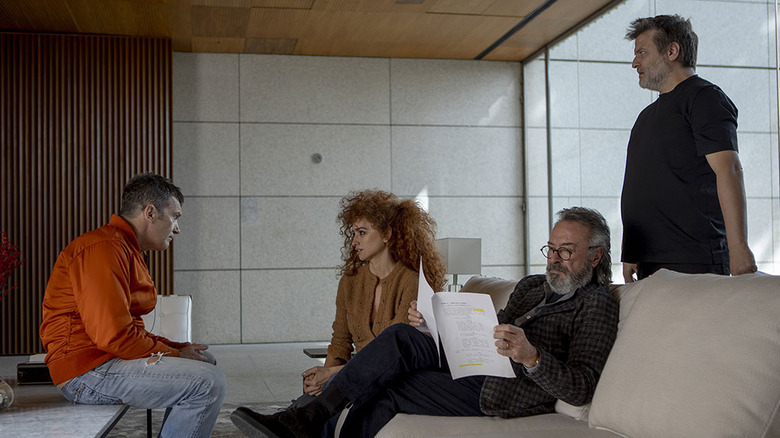
This is the ultimate meta film for everyone that's exhausted — or shamelessly thrilled — by the tropes of the festival circuit. "Official Competition" is brimming with foils, fabrications, and duplicates. It follows the rehearsals for a film within the film directed by an internationally acclaimed eccentric filmmaker played by Penelope Cruz. The narrative follows two brothers trapped in an intense sibling rivalry. The older and more successful brother is played by an actor with a more serious and intellectual career, portrayed by Argentine actor Oscar Martínez. The younger and more submissive brother is played by a flashy and world-famous actor, who is played by Antonio Banderas.
The two actors are natural antagonists, but we quickly learn that they are much more alike than they seem. "Official Competition" explores how each of the actors is doubled within themselves. They perform their identity as much as they perform their character's identity, and sometimes their true self is closer to a fictional character than who they claim to be. As soon as the character they play must assume a pretend identity or emotion, this performance of self is doubled over yet again. When a film is about a film it is a reflection of itself. The two main characters are reflections of one another, and the actors are reflections of their characters and each other. By this logic, "Official Competition" is a hall of mirrors.
It's rare that such an expertly crafted narrative also lends itself to moments of pure humanity, but "Official Competition" manages to accomplish both feats at once. This film was nothing short of a masterpiece, and I'm declaring it an absolute must-see.
1. Vortex
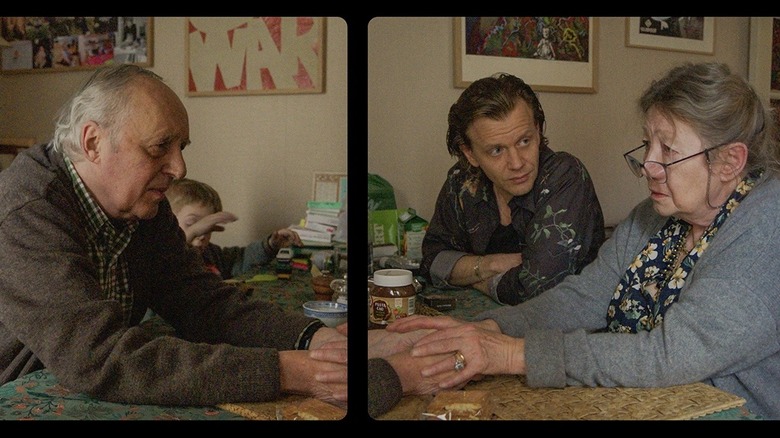
Gaspar Noe is known for creating gut-wrenching, visceral work, experimenting with perspective in his camera work, and editing. His most recent film, "Vortex," follows an elderly couple in the split-screen format as one slips into dementia and their son battles heroin addiction.
"Vortex" naturally bears comparison to Darren Aronofsky's "Requiem for a Dream." Both leave the viewer with strong feelings of nausea and hopelessness, and both of them made me sob uncontrollably. They each have a strong and distinctive visual sensibility that includes packing multiple pictures within a single frame for maximum impact. Noe employs the split-screen not just to overwhelm the viewer, but to tell two stories simultaneously. Seeing the camera steadily focus on both subjects at once has a kind of meditative power that gets lost in cross-cuts.
I'm a fan of Noe's previous work, but he often relied on extremes to create a connection between his characters and the audience, like the POV shots in "Enter the Void," or the unsimulated sex in "Love" or the prolonged shots of extreme violence in "Irreversible." "Vortex" is the first film of his where I have not felt emotionally alienated from the characters, which made the viewing experience all the more impactful. This shift can also be accredited to outstanding lead performances from Dario Argento and Françoise Lebrun that I won't soon forget.
Read this next: The Best Movies Of 2022 So Far
The post The Best International Films of 2022, Ranked appeared first on /Film.
2022 was an incredible year for handheld gaming
The past year was stellar for handheld gaming, no matter the size of your actual hands. Between the Steam Deck, Playdate and an explosion of retro consoles, we received an embarrassing amount of mobile gaming goodness in 2022, and cloud play is only encouraging more innovation. Even though Sony still hasn’t revived the Vita, it feels like the handheld market is in the throes of a renaissance — so let’s celebrate the milestones of the year right here.
December is a historic month for handheld gaming. Sony released the PlayStation Portable in Japan on December 12th, 2004, and then debuted the Vita in Japan on December 17th, 2011. Both of these consoles were hits with players, critics and developers, but a disorganized marketing scheme and failed cloud ambitions kept Sony from investing in handheld gaming after the Vita. RIP, etc. Basically, for the past decade we’ve been waiting (very patiently, mind you) for a breakthrough mobile device to finally make this industry viable again.
Finally in 2022, the handheld market is flush. The Switch paved the way for mobile play over the past few years, and massive corporations like Valve are finally getting in on the action. Cloud gaming has found its foothold, and the market for portable Android and Linux devices is buzzing, with major names like Razer getting involved. Meanwhile, more underground companies like Analogue, Ayaneo and Panic are quietly churning out high-quality handhelds for retro, PC and indie gaming.
But of course, Valve’s Steam Deck dominated the portable conversation in 2022. The Steam Deck is big, it’s heavy, it doesn’t have a great battery life – and it’s everything PC players have been waiting for, apparently. Valve started rolling out the Steam Deck in February, and by October it had shipped more than 1 million of these beasts across the western world, with plans to expand into additional regions. Steam Deck comes in three flavors ranging from $400 to $650, which makes it more affordable than existing handheld PC devices from companies like Ayaneo. It comes with Steam pre-installed, but it’ll also run Windows if you really want to spend an afternoon screaming why? at the machine in your lap.
Imperfect though it may be, Steam Deck proved there’s heat in the handheld PC market in 2022. It’s a relatively accessible way to play PC games on a portable screen, and it successfully combines the Steam software with decades of hardware research at Valve. The Steam Deck is a great start from a company that’s known to lose focus easily, so hopefully it doesn’t all end here.
Even if Valve gets too distracted to make a Steam Deck 2.0, plenty of other companies are eager to pick up the thread in the mobile PC space. The most prominent name is Ayaneo, a brand that took off in 2021 thanks to an Indiegogo campaign that raised more than $2 million. Today, Ayaneo is continuing to iterate on its original PC device with sleek, Switch-sized machines capable of running titles from Steam, the Epic Games Store, Game Pass and other hubs. The Ayaneo Air Pro starts at $700 and can technically handle high-fidelity games, though you’ll likely have to lower your framerate, resolution and expectations. The beefiest Ayaneo, the Next Pro, starts at $1,500 and it’ll run anything a Steam Deck can, but without the extra bulk.
Ayaneo makes extremely cute gadgets and the company is emerging as Valve’s main competitor for portable PC glory. The Ayaneo 2 is poised to pack even more power into a sleek package, though it’ll have a price tag of $1,000, at least. The exciting thing here is that there’s actual competition in the handheld space – companies are investing in mobile hardware more than ever, and not just when it comes to PC play. Recent upgrades in mobile processors are powering a ton of new devices built specifically for retro and cloud gaming.
At the end of 2022, the market for retro handhelds is lush, covering every era from NES to GameCube at relatively affordable prices. On the NES to PSP side of things, this year we got the Miyoo Mini and Retroid Pocket 3: The Miyoo Mini costs about $60 and has a modern dual-core processor that can handle even some PS1 games, while the Pocket 3 is an Android-powered handheld that costs $120. For more modern emulation experiences, there’s the Odin by Ayn, which can run PS2 and GameCube titles at 1080p on a 5.9-inch screen. The Odin costs between $200 and $290, depending on the model. For retro handhelds, the general rule is the hardware gets more expensive as the era progresses.
In the honorable mention section, we have the Analogue Pocket, which plays actual physical cartridges from the Game Boy, Game Boy Color and Game Boy Advance, and is unsurprisingly about the size of a classic Game Boy. Analogue started shipping the Pocket at the end of 2021 and it enjoyed a sold-out year, with more orders and accessories due in 2023. Pocket is a special little handheld that breathes new life into classic cartridge libraries, and it comes with a price tag of $220 – which is just about what a Game Boy would cost in today’s coin.
OK, that’s enough about the past. If 2022 has proven anything, it’s that portable gaming has a strong future, and this is going to include cloud and phone play. Cloud technology has finally become reliable enough that even Sony figured it out this year, and Microsoft has continued to grow its enormous cloud network, which is intrinsically tied to Game Pass. Our slowly encroaching subscription-based future has created a rich environment for Android- and Linux-based handhelds that don’t need a ton of on-board processing power, as the Steam Deck does. Logitech recently dropped the G Cloud Gaming Handheld, which costs $350, while the Razer Edge is an Android-based handheld starting at $400 and expected to start shipping in January.
This year Razer also released the Kishi V2, which is a $100 gamepad that essentially turns your smartphone into a cloud gaming device. Backbone makes a similar product for iPhone and Android players, and this year the company rolled out an officially licensed PlayStation gamepad just for iPhone. As mobile processors continue to evolve and cloud technology further stabilizes, smartphone gaming is only going to grow as an industry, and already mainstream entertainment companies like Netflix are joining the fray. Netflix specifically has ushered acclaimed games like Kentucky Route Zero, Into the Breach and Spiritfarer onto mobile devices this year, and it’s introduced gems like Poinpy and Hello Kitty Happiness Parade.
Finally, I’d like to take a moment to honor Playdate. This brilliant business-card-sized indie gaming machine came out in April; it costs $180, it has a crank, and it doesn’t fit into any existing video game category. Playdate exemplifies innovation. It’s an open-source, crank-powered piece of magic offering some of the most unique experiences the video game industry has to offer, distilled on a miniscule, monochromatic screen. Playdate is pure joy in a tiny yellow package, and for me, it’s the standout handheld of 2022.
And that’s a wrap. Here’s to you, handheld gaming. Thank you for a fantastic year, and may the momentum of 2022 continue to generate creative ideas in this space. To the years and games ahead, cheers.
Are University Courses Helpful for a Career in Cybersecurity?
Many people who aim for a career in cybersecurity put in a lot of thought when choosing a university course while they are still at the beginning of the road. It's not easy to chart a new career path, to shape your future and be successful in the job you love. So do you really need a university education to go into cybersecurity? What can you learn that'll come in handy for the future?
The Best Musical Movie Moments Of 2022
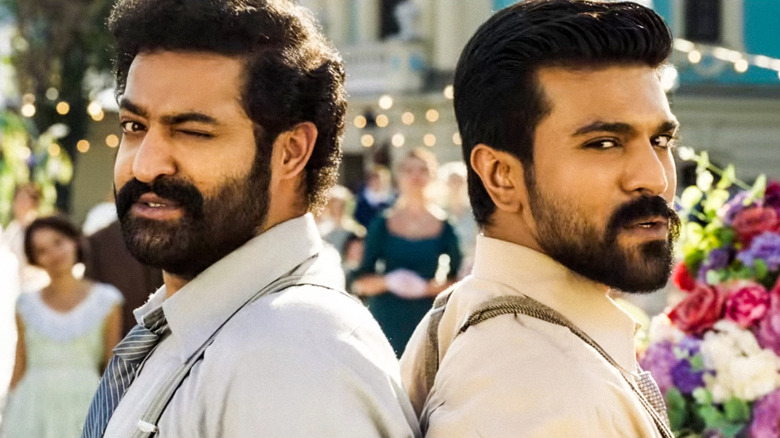
Even in the early days of silent film, movies had music. Live performers or recordings would fill the air during those early motion pictures, and when synchronized dialogue finally came to the movies, the music came with it. Movies could supply their own soundtracks, and filmmakers began injecting their films with dance numbers, popular songs, and unforgettable new compositions to underscore the drama, play up the comedy, or make the audience leap out of their seats in terror.
While there aren't as many musical movies in theaters as there used to be, everybody still loves a great musical number. The films of 2022 featured incredible music and dance numbers that made us laugh and cry, that inspired us, made us pensive, or just plain made us sad.
These are the musical numbers that will stick with us long after the calendar year is over, whether they were in a musical or not.
Turning Red
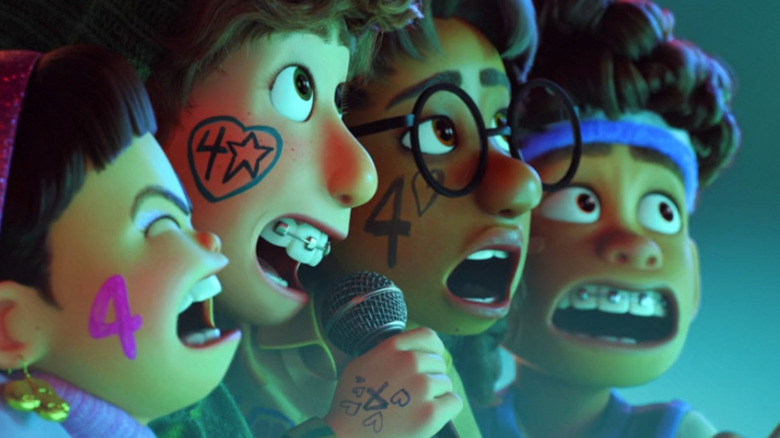
It's been a rather good year for feature film animation, and "Turning Red" is one of the highlights. A delightful coming of age story, the film stars Rosalie Chiang as Mei, a young teenager with an overbearing mother, voiced by Sandra Oh. Also, Mei transforms into a giant red panda whenever she gets emotional, and since she's an adolescent, it happens a lot.
The way Domee Shi's film illustrates the foibles of puberty via a literal, magical transformation is pretty fun, but even beyond its allegory the film is impressively specific about Mei's inner world and outside interests. One of those interests is a boy band called 4*Town, who put on a pretty great climactic show in "Turning Red," only to have their act interrupted by Mei's mother tearing apart the arena, having turned into a giant red panda herself.
The film's loving homage to turn of the century boy bands, and the use of the fictional band's signature song, "Nobody Like U," as an anthem for all the characters to rally together at the end, is both a little dorky and totally awesome.
Doctor Strange In The Multiverse Of Madness
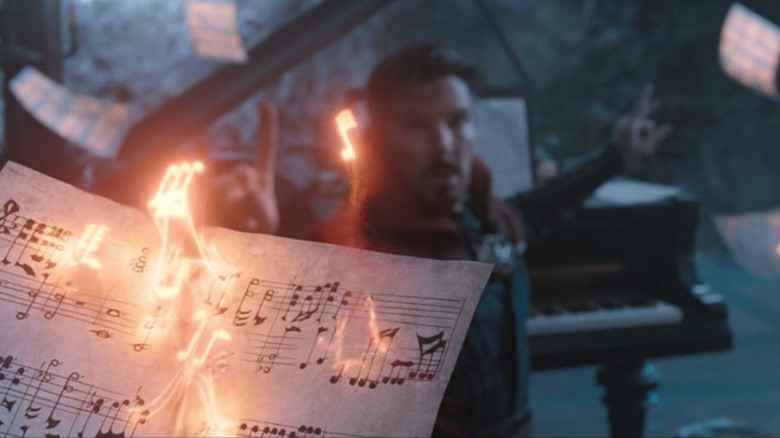
It's been an odd transitional year for Marvel Studios, as its films attempted to expand the boundaries of the lucrative fictional universe while also exploring their characters' unsettling inner turmoil. Mileage certainly does seem to vary on whether "Doctor Strange in the Multiverse of Madness" is an ambitious and emotional story or an underdeveloped and unconvincing one, but at least it's directed by Sam Raimi, who gives it some directorial panache and no small amount of weirdness.
In one of the film's most imaginative moments, Doctor Strange (Benedict Cumberbatch) confronts an alternate reality version of himself who has taken a much darker path. And while the audience has probably seen plenty of "wizard duels" in their day, in films like "The Lord of the Rings: The Fellowship of the Ring" and most of the "Wizarding World" movies, we've never seen one nearly as musical as we get in "Multiverse of Madness."
Doctor Strange, attacked by this villainous version of himself, is evenly matched and has to get creative. Knocked into a piano and sending sheet music flying, Strange plucks the very notes off of the scattered pages and blasts his opponent with the physical manifestation of music, which the evil Strange recomposes into something more ominous. For once, magic in the Marvel Cinematic Universe seems genuinely odd and hard to comprehend, and it's all the more magical a place for it.
Guillermo Del Toro's Pinocchio
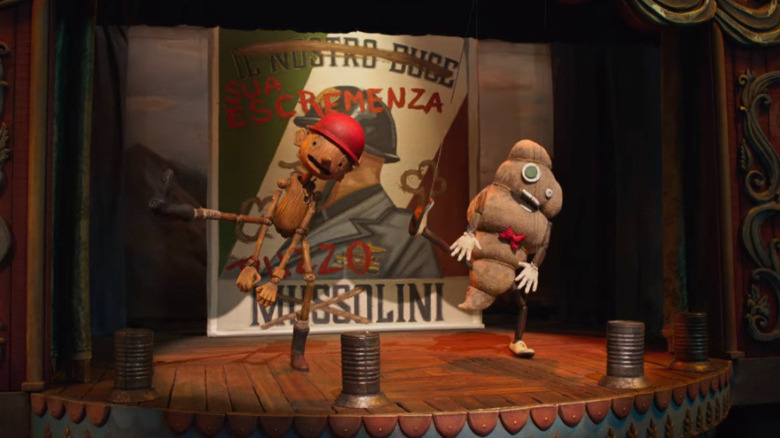
The film we call "Guillermo del Toro's Pinocchio" is far and away the best "Pinocchio" movie of 2022, and there have been rather a lot of them. Directed by the Oscar-winning filmmaker behind "Pan's Labyrinth" and "Pacific Rim," and co-directed by veteran animator Mark Gustafson (whose name should really be in the title too, if you think about it), "Guillermo del Toro's Pinocchio" takes the familiar tale of a wooden boy trying to become human in different directions than audiences are probably used to. Reconnecting with the social commentary of the original "Pinocchio" stories, and without the saccharine platitudes of the Disney version(s), this stop-motion animated film is a much darker story on many levels -- not the least of which is the way del Toro and Gustafson's "Pinocchio" incorporates Italian fascism directly into its narrative.
In a subplot reminiscent of "Puppet Master III: Toulon's Revenge," the hero of Pinocchio decides to use his celebrity and stage time to make a political statement, or at least infuriate his manipulative boss. Instead of performing a patriotic and uplifting puppet show for their powerful guest, Benito Mussolini, Pinocchio opts to perform a satirical routine about poop. He mimes pooping in a helmet, and even though he had almost no prep time for this bit of improv, he also dances with a full-size anthropomorphic poop puppet.
An unexpectedly absurd yet meaningful act of rebellion. Hurray for poop!
After Yang
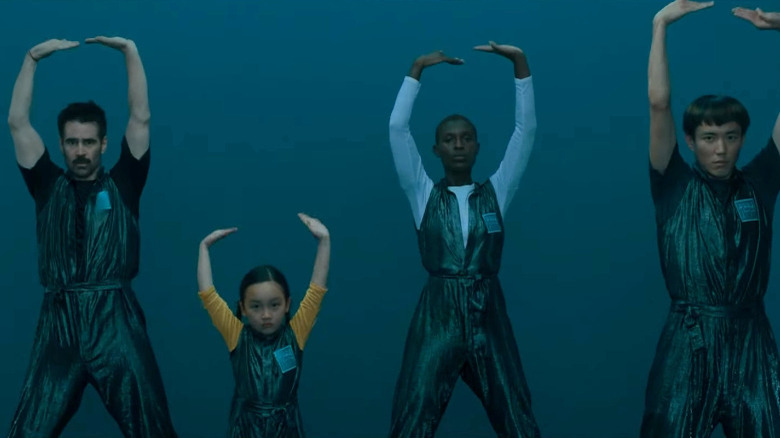
Kogonada's contemplative sci-fi drama "After Yang" tells the story of a family whose son, a sophisticated robot named Yang (Justin H. Min), breaks down. Repairing Yang is trickier than Jake (Colin Farrell) thought, and soon he finds himself in possession of recordings Yang took of his experiences, a library of memories he chose to keep for himself, and realizing that his "son" was more real than anyone realized.
But before all the heady conversations about memory and self-aware artificial intelligences, "After Yang" has to introduce the family at the core of the story. And the film does that with a synchronized dancing competition. In the near future it turns out one of the most popular pastimes is an online game where tens of thousands of families all over the world compete, and we watch our protagonists perform wonderfully choreographed dance routines -- to visualize their close dynamic, sure, but also because it's really, weirdly fun, and something we might actually like to do in real life.
The Bob's Burgers Movie
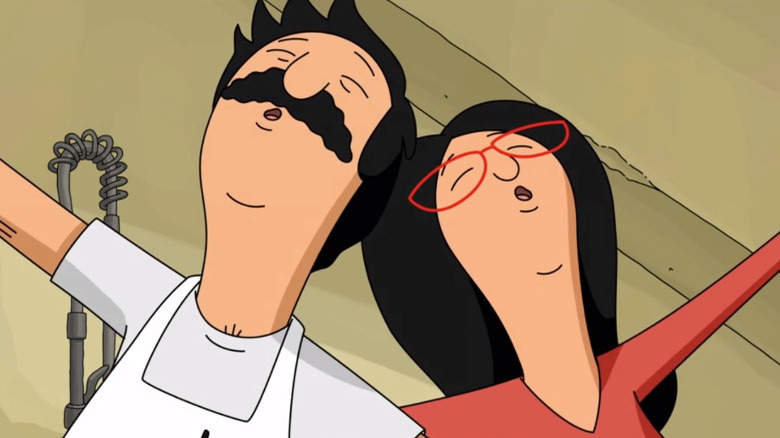
Fans of the "Bob's Burgers" TV series know that one of the show's many strengths is its clever, catchy, and unexpectedly emotional original songs. And while this year's "The Bob's Burgers Movie" isn't as much as a musical as a comedy with a few musical numbers in it, they're all very memorable ditties.
But the biggest showstopper of them all is, ironically, the very first. A sprawling musical feast that introduces the characters and their subplots, while rallying around a wholesome generalized belief that their lives are getting better, the song "Sunny Side Up Summer" is a blast of catchy positivity that is then immediately exploded when everything goes wrong. The dreams of getting a new loan for the restaurant are dashed, a sinkhole opens up outside the front doors, and every single member of the Belcher family has to re-examine their life and plans for the future.
Inu-Oh
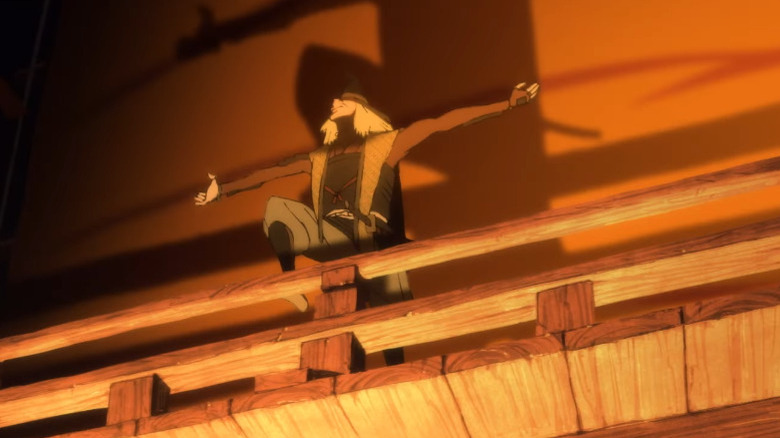
What do you get when you stick a historical epic, a serial killer movie, a hair metal rock opera, a supernatural fable into a blender? You'd get "Inu-Oh," a remarkably distinctive and exciting anime film from director Masaaki Yuasa ("Keep Your Hands Off Eizouken!") about a blind musician who teams up with a dancer suffering from a demonic curse, and form a new form of rock music that tells stories that were forbidden by decree after a civil war.
Their performances are increasingly elaborate, and although they culminate in an incredible display of physical and spiritual transcendence, the best number is the performance of a song about war and a whale (there sure were a lot of whale-centric movies this year, weren't there?). Using imaginative stagecraft to create modern visual effects using techniques available to the characters at this stage in history, the song "The Whale" is an absolute rocker, with a spectacular wail from the singer and percussion to die for.
Chip 'N Dale: Rescue Rangers
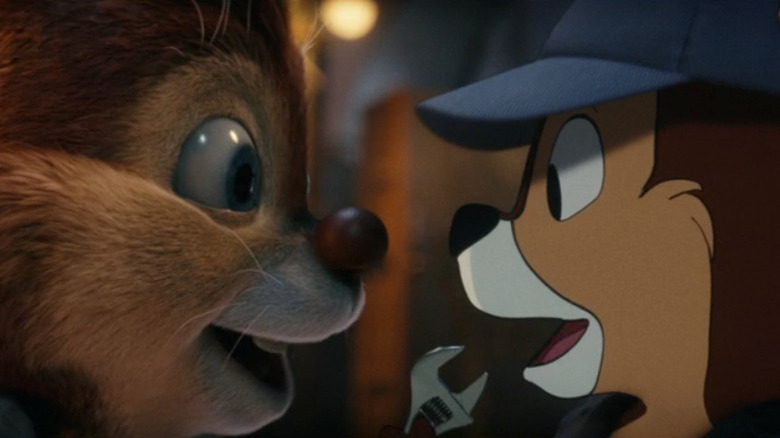
In this extremely clever contemporary riff on "Who Framed Roger Rabbit," Chip and Dale -- the stars of Disney's popular "Rescue Rangers" TV series -- are real people who just happen to be animated. Their hit show now years behind them, they struggle to move on with their lives: Chip, by abandoning the entertainment industry, and Dale, by embracing his persona as a famous has-been.
When their old pal Monterey Jack gets kidnapped, an apparent pawn in a conspiracy to kidnap cartoons and force them to star in cheap knock-off movies, Chip (John Mulaney) and Dale (Andy Samberg) are forced to assume the roles they played in their show and investigate the mystery. And in the film's funniest scene this means they are forced to improvise a rap song, just like cartoon characters sometimes do in movies. They just happen to be really bad at it, and they soon get stuck rapping about eating whales, for reasons that baffle even the two of them.
Elvis
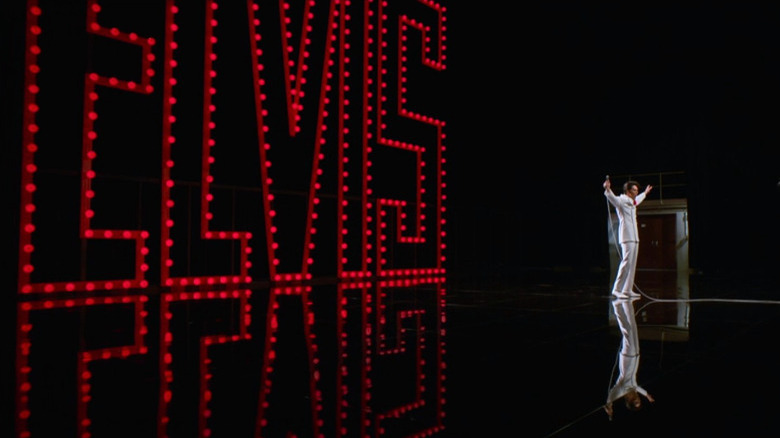
Baz Luhrmann's "Elvis" is a spectacular musical epic, one that portrays Elvis Presley's life as a gigantic tragedy as well as an endless pageant. The financial abuse he suffers from his lifelong manager, Colonel Tom Parker (played by Tom Hanks) runs counter to the anarchic spirit of Presley (Austin Butler).
In a moment that probably didn't seem so portentous at the time, in the middle of a televised Christmas special, Elvis Presley decides to eschew the cornball sentimentality the Colonel thinks will bring him financial security, and instead do what an honest to goodness rock star would do. Presley takes the opportunity to totally belt out an impassioned protest song, reminding his audience about his cultural relevance and pissing off the show's sponsors, who just wanted something wholesome and light.
Austin Butler gives a great performance as Elvis Presley, but the quickened pace of Luhrmann's biopic rarely gives him a sequence to make into a proper meal. This is one of the scenes where Butler gets to completely devour the movie and prove he has the chops to play the King.
Weird: The Al Yankovic Story
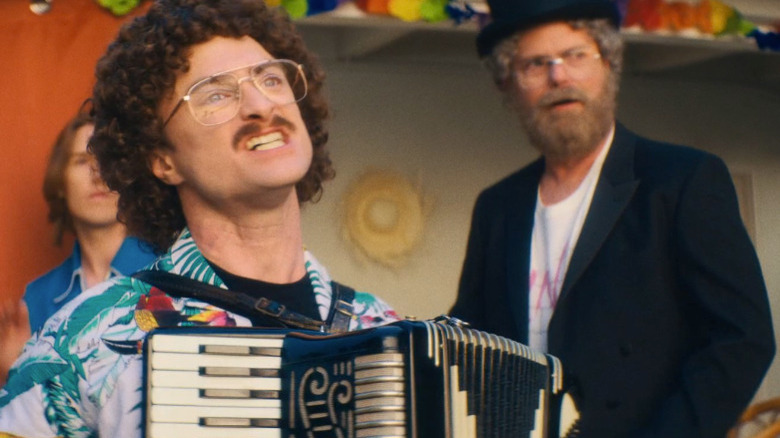
According to the musical comedy "Weird: The Al Yankovic Story," there was no greater musician in all of history than (checks notes) "Weird" Al Yankovic. Daniel Radcliffe stars as the best-selling parody songwriter in "Weird," which tells a familiar rags to riches rock-and-roll biopic story and gets a lot of mileage out of how historically inaccurate and melodramatic it is because — in case you hadn't noticed — this is "Weird" Al we're talking about.
In the film's most memorable scene, Al has been invited to a pool party right out of the movie "Boogie Nights," except instead of a soiree full of porn stars, it's a birthday party with quirky outsider acts like Tiny Tim, Gallagher, and Elvira, Mistress of the Dark. Al Yankovic is young and starry-eyed, but legend of his talent is growing, which leads legendary DJ Wolfman Jack (Jack Black) to challenge the prodigy to concoct a clever parody of Queen's "Another One Bites the Dust" on the spot! And it just so happens that Queen bassist John Deacon is there too, played by David Dastmalchian.
At first ... get this ... it looks like "Weird" Al can't do it! It's too much to ask of any musician to amusingly alter the lyrics of a song off the top of their head! But then ... get this ... he does it! Holy cow, he turned "Another One Bites the Dust" into "Another One Rides the Bus!" He truly is the greatest musician who ever lived.
Pearl
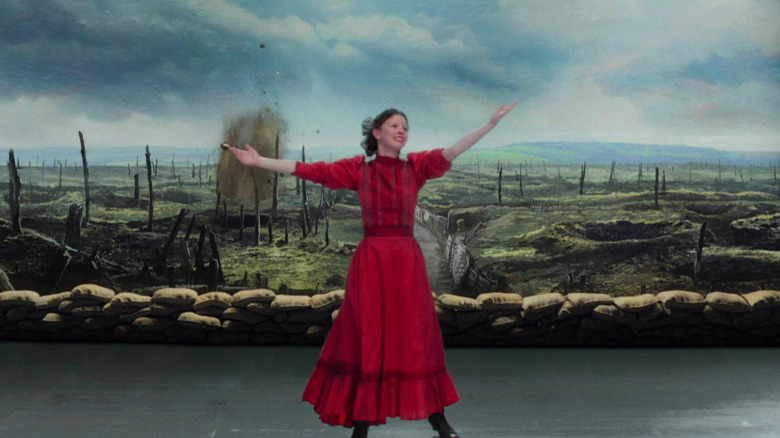
Ti West made a big splash at the beginning of 2022 with the throwback slasher "X," about a 1970s adult film crew running afoul of a homicidal elderly woman named Pearl when they try to film at her farmhouse. The film starred Mia Goth as the sex worker Maxine Minx and also as Pearl herself, under significant makeup. In the film's biggest surprise we discovered after the credits that a prequel had already been filmed, and was coming out later this same year.
"Pearl" once again stars Goth, who in the 1910s dreams of leaving her repressive home life and becoming a star. Starved for attention in all its forms, she fantasizes about an opportunity to audition for a traveling troupe that needs new dancers, and after doing everything in her power to take her own life into her hands — terrifying and homicidal things — she finally gets her chance to perform for the judges. And the danged thing is, she's pretty great.
It turns out that Pearl, who fantasizes that her performance is comically elaborate, has some talent and genuine charisma, and the judges seem to recognize it. They just happen to be looking for someone blonde instead. Poor Pearl. Er, kinda.
Tár
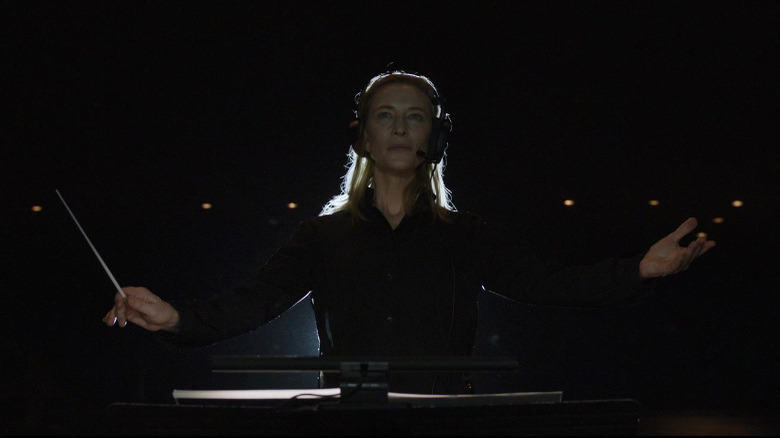
Cate Blanchett gives a virtuosic performance as the title character in Todd Field's epic character drama, as a world-renowned conductor whose sins are gradually coming back to haunt her. She's a larger-than-life person because she thinks she's larger than life, and that just about any behavior can be overlooked if she's talented enough.
"Tár" features a symphony of memorable musical moments, whether it's her subtle way of corrupting auditions when she's supposed to remain as objective as possible, or her emotional breakdown with an accordion, belting angry music as her way of giving the middle finger to her landlords.
But the best moment of all is the very conclusion of the film, and we don't want to give it completely away. Suffice it to say that after everything she's been through, Lydia Tár has one more performance to give, and what it is speaks volumes about how her character defects have affected her career after all.
RRR
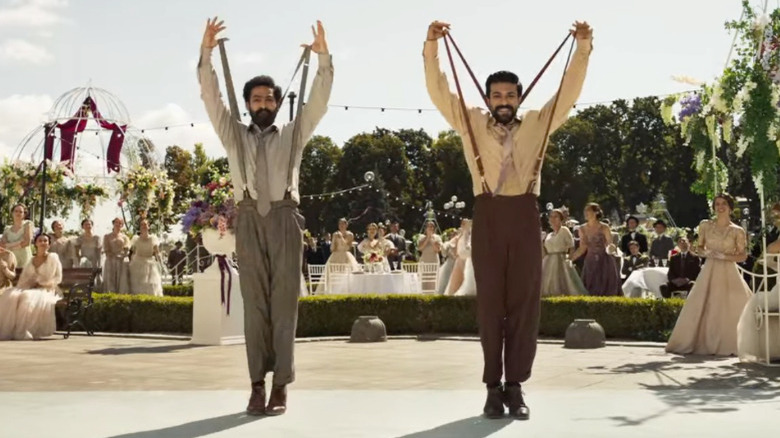
One of the great cinematic entertainments of 2022, S. S. Rajamouli's "RRR" stars N. T. Rama Rao Jr. as Komaram Bheem and Ram Charan as Alluri Sitarama Raju, two real-life revolutionaries who were not — in real life — best friends who danced at weddings together and fought epic battles because of melodramatic misunderstandings. But in this movie they are, and it's awesome.
"RRR" has plenty of musical moments but none are as absolutely joyous as "Naatu Naatu," the number they perform at a wedding, to the chagrin of condescending colonialists and to the elation of everyone else. With elaborate choreography that will make everyone want to run out and buy some suspenders, they win over the crowd and finally turn on each other in a dancing endurance test which ends in a heartwarming sacrifice.
Catchy, impressive, exciting, "Naatu Naatu" manages to stop the show while pushing the characters forward. It couldn't be beat in 2022.
Read this next: The Best Movies Of 2022 So Far
The post The Best Musical Movie Moments of 2022 appeared first on /Film.
The Actors Who Defined 2022

This piece contains spoilers for "Glass Onion: A Knives Out Mystery."
It's far too early to define the social and cultural significance of 2022. We're still reckoning with this year's most seismic events: the overturning of Roe v. Wade, Russia's invasion of Ukraine, and another spate of mass shootings targeting the most vulnerable among us. What artists will make of these developments — and how we will, in the long term, push back against or further acclimate to them — is, for now, a mystery. We're just now starting to get films and television shows dealing with the impact of #MeToo, Donald Trump's presidency, and the previous years' torrent of mass shootings.
The films of 2022 struggled with our rapidly shifting reality in surprising ways. Whatever you were expecting from Jordan Peele's "Nope," I'm going to guess that he left you reeling. Many of this year's films knocked me sideways, and the best of the bunch were led by performances that challenged my hopes and worries about where we're headed. Writers and directors tackle our troubling new world behind the scenes, but actors are the tip of the spear. They're the ones who draw blood. Here are ten performances that left scars.
Cate Blanchett - Tár
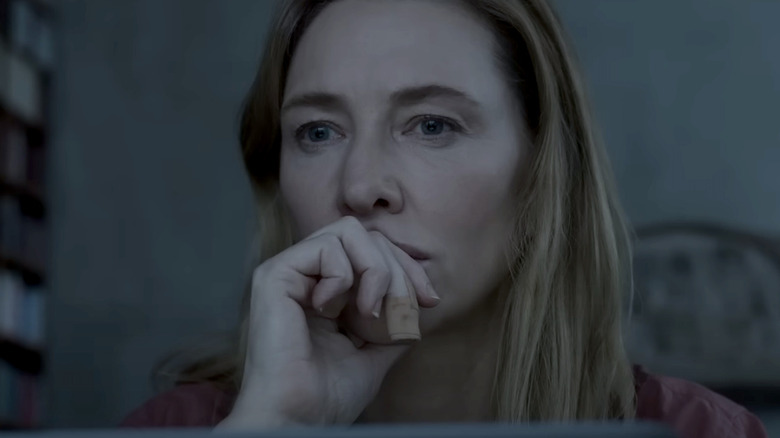
Oscar number three is deservedly en route to Cate Blanchett for her bravura turn as problematically brilliant composer/conductor Lydia Tár in Todd Field's finely nuanced character study that asks the audience to consider societal cancelation from the viewpoint of the cancelee. Field issues no judgment on Tár's behavior — which allows Blanchett to both enthrall and disgust us with her character's creative genius and personal transgressions. Watching Tár fine-tune her orchestra down to the minutest of details is every bit as exhilarating as her brazen manipulation of a soloist audition, based solely on her attraction to one of the cellists, is galling. She's out of line, and, as the walls close in due to past grooming efforts (a former protege has died by suicide), increasingly out of her mind.
"Tár" is a wheelhouse role for Blanchett, and she connects flush in scene after scene. We're dazzled by the character's insights into classical music, and get a kick out of her rhetorical grandstanding. She is an invaluable resource of knowledge, and, judging from what we learn about her from others, legitimately revered in her field. She is a force to be reckoned with, and, ultimately, hastens her own downfall by being the unapologetically obdurate genius she's apparently been since childhood. What do we do with uncompromising, undeniably gifted jerks like Tár? Field has no answers to that question, and, thankfully, he knows better than to undercut Blanchett's career-best performance with a clumsy, moralistic finale. The character may not deserve better, but the actor certainly does.
Michelle Williams - The Fabelmans
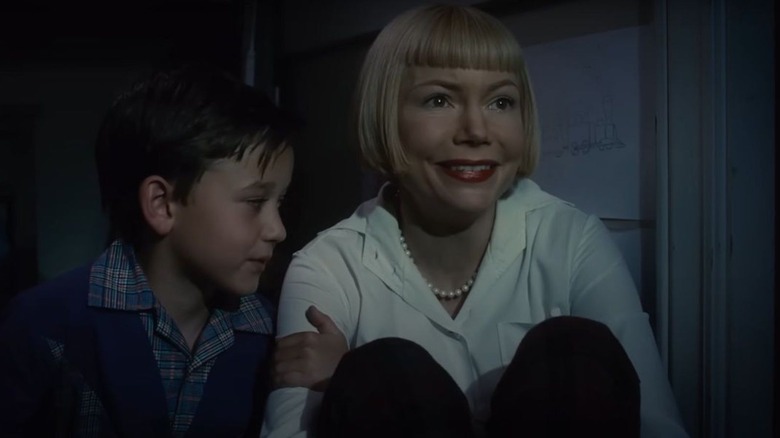
Even the most casual viewer of Steven Spielberg's films has probably sensed that the father of the modern blockbuster has daddy issues. Some of his characters have strained or nonexistent relationships with the ol' paterfamilias, which, as we've read time and again, reflects the filmmaker's resentment of his dad for splitting with his mother. So you might expect Spielberg's semi-autobiographical film about his childhood to make a dramatic meal out of his surrogate's interactions with his father.
But "The Fabelmans" is not that movie, at least, not exclusively. The film belongs in large part to Michelle Williams, whose portrayal of the eccentric, wonderstruck Mitzi Fabelman digs into Spielberg's complicated feelings about motherhood. Williams has been a must-watch performer for a while now. Her collaborations with director Kelly Reichardt have shown off her remarkable range, while her supporting turn in Kenneth Lonergan's "Manchester by the Sea" is one of the most brutally wrenching expressions of parental grief I've ever seen. In "The Fabelmans," she captivates and flusters in equal measure as a mother with an artist's heart. As the film progresses, you realize Spielberg has worked through the daddy stuff. It's his mother who really messed him up, but, strangely, in a way that was loving and encouraging and, ultimately, responsible for his dedication to a dream-weaving craft. Williams plays a woman who lives every second as fully as possible, and who loves recklessly and, at times, selfishly. "The Fabelmans" might be Spielberg's story, but it is Williams' movie.
Michelle Yeoh - Everything Everywhere All At Once
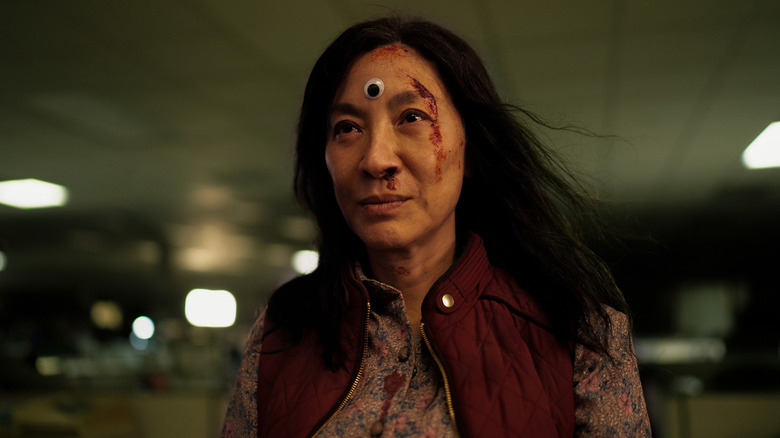
The first time I saw Michelle Yeoh on the big screen, she jumped a motorcycle onto a moving train. There was no stunt person involved. She did it. Needless to say, I was in love.
It's a rough feat for a woman who studied ballet at England's Royal Academy of Dance, but as Yeoh would prove in martial arts classics like "Police Story 3: Supercop," "Tai Chi Master," and "Wing Chun," she's not afraid of a bruise or the odd broken bone. But since Yeoh broke through to the West in 2000 as Yu Shu Lien in Ang Lee's "Crouching Tiger, Hidden Dragon," filmmakers have struggled to write roles worthy of her daring — which isn't just physical, but emotional.
Daniel Kwan and Daniel Scheinert (aka Daniels) stepped up this year in a big way with "Everything Everywhere All at Once," a rollicking, utterly surreal action film about a laundromat owner charged with saving the multiple universes from a catastrophic everything bagel. In the wrong hands, with the wrong cast, a film this brazenly bizarre could easily collapse under the weight of its own silliness. With Yeoh in the lead, you go along with all of it, including those hot-dog fingers, because her fearlessness has always been its own, glorious reward. This tour de force turn was a long time coming. May it just be the start of a brilliant second act.
Keke Palmer - Nope
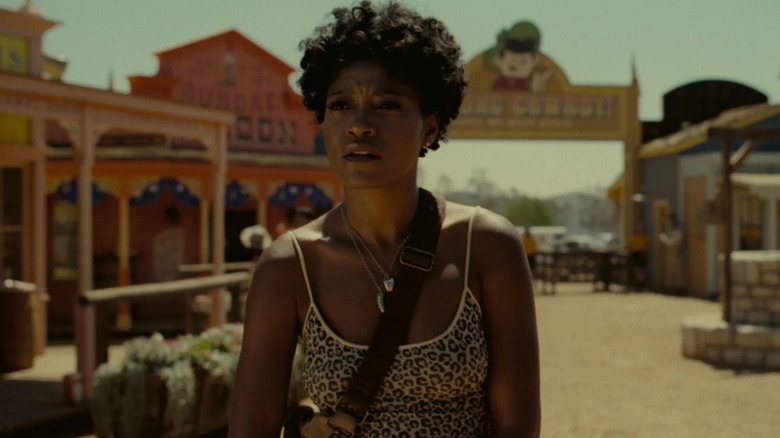
Jordan Peele's "Nope" is a sci-fi/horror epic stuffed with jarringly uncommon spectacle. It's a movie that uses an alien invasion narrative as a backdrop to a rumination about Hollywood's checkered racial history, which gets unexpectedly teased out by the specter of a sitcom tragedy that, years later, has turned into a cash cow for one of the surviving cast members. "Nope" is a bewildering experience that, thematically, refuses to shake out cleanly. It's got a lot on its mind, much of which is conflicting, but there is, at its core, an invigoratingly bold performance from Keke Palmer.
Palmer is herself a survivor of the child actor trenches, but she didn't hit my radar until her immensely entertaining portrayal of the stripper Mercedes in Lorene Scafaria's terrific "Hustlers." As Em Haywood in "Nope," she taps into that show person energy, but only because her brother, OJ (Daniel Kaluuya), is a laconic cowboy who's better with horses than humans. Palmer is a loud-and-proud business owner determined to keep the family's ranch relevant at a time when films and television are drifting away from practical (i.e. non-CG) elements. I may not have a solid read on "Nope" after two viewings, but I do know that Palmer, as magnetic and inventive a performer as I've encountered in the 21st century, is going to own the next decade.
Janelle Monáe - Glass Onion
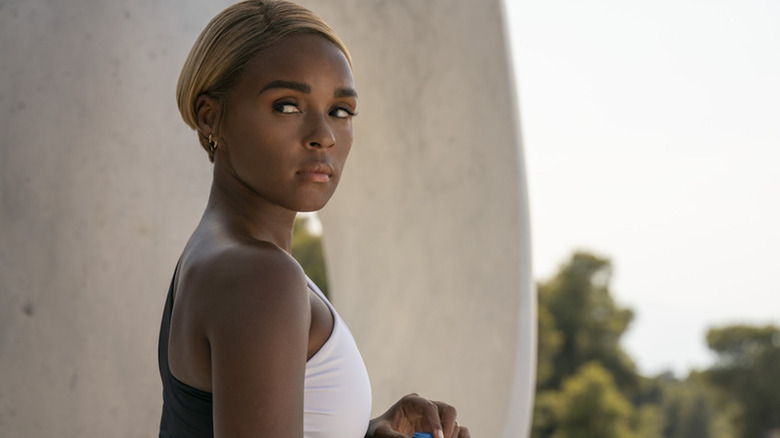
This slide contains spoilers for "Glass Onion: A Knives Out Mystery."
At the midpoint of "Glass Onion: A Knives Out Mystery," you might find yourself wondering why an artist of Janelle Monáe's global fame and boundless talent took on a role that, by all appearances, has reached an unceremonious terminus. As the ostracized, seemingly principled member of a group of uber-ambitious young professionals, Monáe's Andi Brand apparently possesses the knowledge that will burn Edward Norton's tech billionaire Miles Bron and her one-time friends straight down to the ground. Well ... she does. But she's not Andi Brand. She's Andi's sister Helen. And she's in cahoots with Daniel Craig's super sleuth Benoit Blanc. And she's not dead.
Thank god. Every performance is on point in Rian Johnson's sequel to his surprise 2019 hit, but Monáe plays the only character with literal skin in the game. As Johnson walks us through the Southern-accented Helen's game planning with Blanc, we acquire a massive rooting interest and an extra dollop of contempt for Bron and his bootlicking buddies. Monáe's got a right to be hostile, and she catches fire in the film's final act when Bron seems guaranteed of a clean getaway. Johnson somehow topped the masterfully constructed "Knives Out" by accessing his ire for the state of our plutocratic planet, and Monáe gives us the conflagration we dearly desire.
Austin Butler - Elvis
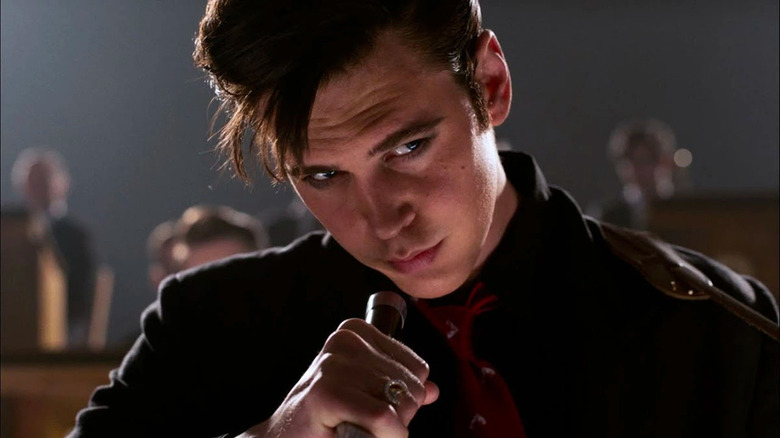
Baz Luhrmann's biopic of the so-called King of Rock 'n' Roll had so very much going against it. In an age where the act of cultural appropriation is a crime punishable by cancellation, Elvis Presley is more of a devil than he's ever been. He built his career in part by recording great songs by Black performers like Big Mama Thornton and infused his rockabilly tracks with the swagger of rhythm and blues. He also fell in love with his eventual wife, Priscilla Beaulieu, when she was 14 years old. Elvis wasn't made for these times.
Luhrmann's movie doesn't refute Presley's problematic qualities, but it does get across — with the kind of go-for-broke verve the filmmaker hasn't exhibited consistently, confidently over the course of a feature since "Moulin Rouge!" — how Elvis changed the world. And if the old showbiz saw that directing is 90-percent casting, this is the most masterfully directed picture of Luhrmann's career. There have been very good portrayals of Elvis in the past (most notably Kurt Russell in John Carpenter's TV movie "Elvis"), but Austin Butler accomplishes the impossible. He summons the pelvis-thrusting, taboo-shattering appeal of the King, while, deep in the whirlwind of Luhrmann's visual histrionics, locating the Southern kid who did not survive what wound up being a prolonged childhood.
Colin Farrell - The Batman, After Yang, The Banshees Of Inershin
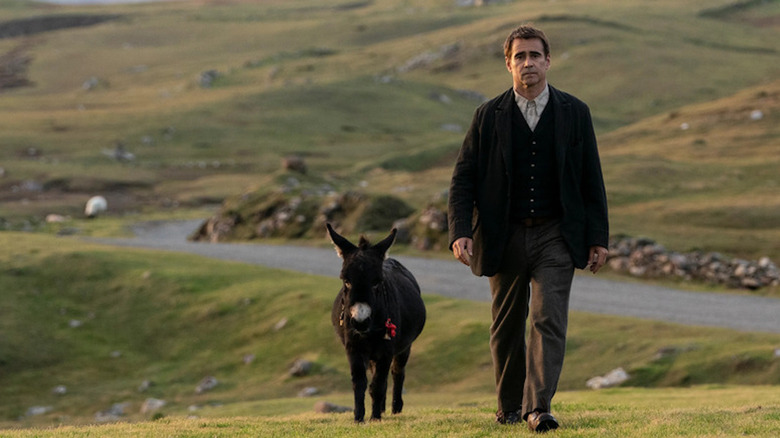
We've been here before. After skyrocketing to fame at the age of 24 in Joel Schumacher's "Tigerland," and plunging headlong into a career-imperiling addiction to drugs and alcohol, Colin Farrell has been clean and sober and due an awards coronation. He was wonderful in "In Bruges," "The Lobster," and "The Killing of a Sacred Deer," but the Academy of Motion Picture Arts and Science has yet to nominate him for a solitary Oscar. It's a baffling state of affairs, and this year, he's competing against himself in a way he never has before.
Farrell was almost unrecognizable as The Penguin in Matt Reeves' engrossing, if overlong, "The Batman." In Hollywood, that's the kind of stunt performance that might get you over the Oscar hump, but Farrell had to go and give two beautifully nuanced portrayals in Koganda's melancholy sci-fi drama "After Yang" and Martin McDonagh's darkly comedic "The Banshees of Inisherin." The latter, which reunites him with his "In Bruges" director, is a powerful showcase for Farrell. The Irish actor plays against type as an intellectually incurious man who cannot understand why his best friend (Brendan Gleeson) has up and shunned him. We sympathize with him, but we also understand Gleeson's assessment of his one-time buddy. Watching Farrell grapple with this strange state of affairs was one of this year's greatest pleasures.
Ke Huy Quan - Everything Everywhere All At Once
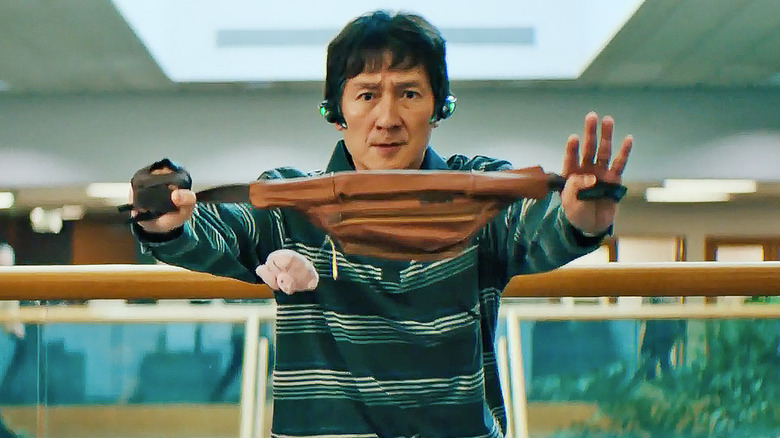
The year's most unexpectedly satisfying comeback. Ke Huy Quan occupies a special place in the memories of certain Gen X film fans. He made his big-screen debut as the plucky, fast-talking, and plenty-capable Short Round in "Indiana Jones and the Temple of Doom," then quickly followed that up as the plucky, fast-talking, and plenty-capable Data in "The Goonies." As a pre-teen at the time, Quan seemed to have won a ticket to the chocolate factory. He saved Indy and saved himself via his "pinchers of power." His career was off to an amazing start ... and then he disappeared.
Quan's return as Waymond Wang, the timid husband of Michelle Yeoh's Evelyn Wang in Daniels' liberatingly exuberant "Everything Everywhere All at Once," arrives 37 years after "The Goonies." He wasn't preserved in amber. He's now 51 and loaded with life experiences, but our affection for him hasn't diminished a whit, and getting to see him spring to life in this gift of a movie brought me to tears. Please hang out for a while, Mr. Quan. We missed you, and we don't want you to go away again.
Edward Norton - Glass Onion
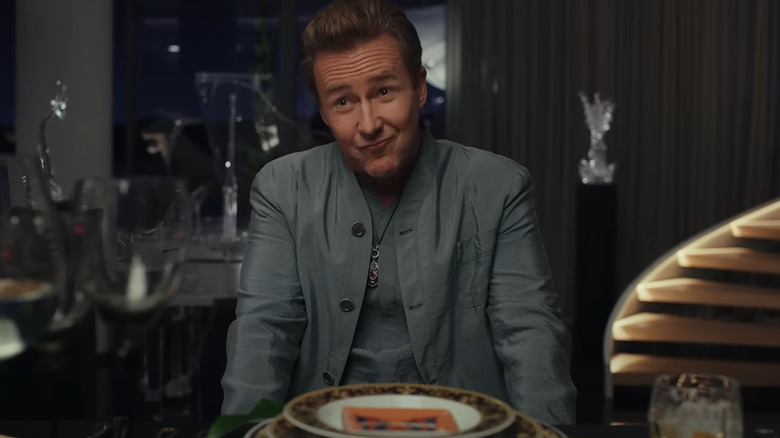
Ah, symmetry! Edward Norton broke through in Gregory Hoblit's "Primal Fear," where he plays a shy, stammering altar boy accused of killing the beloved Archbishop of a Chicago diocese. We sympathize tremendously with Norton's character until, in the final scene, after he's been cleared of murder, he drops his victim act and reveals that he's a cunning, cold-hearted psychopath.
In Rian Johnson's "Glass Onion," Norton comes on as an obnoxiously brilliant tech billionaire who can break down the future of the planet in one seemingly extemporaneous speech one second, and pick out the bridge to Paul McCartney's "Blackbird" on an acoustic guitar the next. He's convinced everyone in his orbit that he's got it all figured out. As portrayed by Norton, we buy it. But the breadcrumbs leading to the revelation of his slippery imbecility have been strewn about the narrative leading into the third act, and when Daniel Craig's Benoit Blanc breaks him down, we gasp at the effectiveness of the con job Norton has, once again, run on us. And it stings because a sadly significant chunk of the populace is still grappling with the idiocy of the character on which Bron was so clearly based.
Johnny Knoxville - Jackass Forever
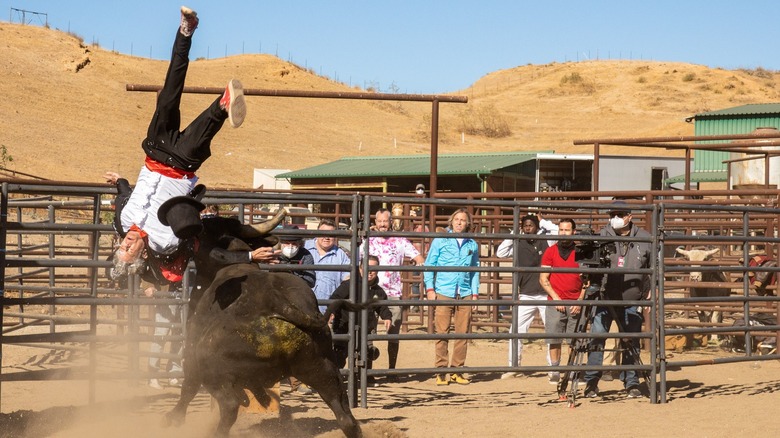
Johnny Knoxville has survived a scary crash on a golf cart, getting flipped in the air (on rollerskates, because why) by a charging bull and, perhaps most miraculously, taking the worst of a fistic exchange (in a department store, because why not?) with doughy knockout artist, Butterbean.
Knoxville is 51 years old, and while he may not consider himself precious cargo, I do. He brought his band of masochistic clowns back to the big screen this year with "Jackass Forever," and took another gnarly shot from a bull. Knoxville typically pulls himself together and plays off the pain, walking off with a quip ("Is Butterbean okay?") and a smile. This time, the medical crew stabilizes his neck and lugs him out of the pen. He asks his director and longtime co-conspirator, Jeff Tremaine if they got the take. They did. There's been talk of further "Jackass" adventures, and they've certainly laid the groundwork by bringing on younger, equally reckless cast members. I'm game. But when it comes to inviting bodily harm, I hope Knoxville has subjected himself to his last rodeo. No one has made me laugh until I hurt like Johnny. Retire with what's left of your health, buddy.
Read this next: The Best Movies Of 2022 So Far
The post The Actors Who Defined 2022 appeared first on /Film.
Can’t Beat Reality
This week’s post will be a little on the shorter side, I’m recovering from the flu and Christmas is in just a couple of days. The observant of you will notice that means I’m writing this the same day it goes up, to which I say; snitches get stitches.
Jokes aside, I don’t usually write so late. The issue is, this week has been a shit storm. It was last week when we noticed our ceiling in the dining room was a bit…slack?
.jpg)
Come to find out that our property company just had every single maintenance man quit at the same time.[1] This means we have to wait for an external company to come to check it out, which is fine, I guess. The ceiling sags more and more, but like, we did what we could in reporting the issue, I don’t own the place, so, whatever.
Well, by the time they show up I am in the full swing of a case of the flu. My phone has been updating unsuccessfully for two days so I don’t get the call they are on their way. And I feel like crap.
Fine, at least it’ll get fixed.
They go upstairs to over top of where the damage is and do the same song and dance we did when we first noticed the issue; poke the floor. Is it wet? No? Huh, weird.
They determine they need to cut a hole in the ceiling to find the problem, which I expected, but like…Oh man, goody! All I wanted for Christmas was a view of support beams! Yay!
Whatever, let’s do this. We move our shelves and books out of the way to make room, and they get to work.

They slice out this sizable gash with a box cutter, which immediately begins spewing water all over the floor. The insulation is wet, the floor is wet, the table beneath it is wet, it’s a mess. I am half-asleep in my recliner at this point, but I am brought fully to the realm of the living by both the maintenance man and my husband saying “What…the fuck?”. Now, Elliot curses, but he is a fully born-and-raised west Texas boy, so he doesn’t typically or really ever do so in front of company.
This brings me to my favorite thing about this. No matter how clever or realistic I’m being in my little Sims build, I will never beat reality. No matter how much human nature I think up, no matter how many little quirks I give the place, there is no accounting for full human stupidity.
What was in my ceiling? Fully sealed up there behind a full previous repair and fresh plaster?
A dog bowl. A dog bowl full of water.
Evidently, our air conditioner has been leaking for years, and rather than repair it, some maintenance man of old decided to seal in a dog bowl to catch the leak.
Happy holidays, don’t forget to drip your faucets and check your ceilings for dog bowls.
What Is the Stella Vita and Why Is It the Most Innovative Campervan in the World?
There is no stopping the world's progress toward cleaner ways to travel. In recent history, we've seen the evolution of hybrid, fully electric, fuel-cell, and now solar-powered vehicles. Although slow, the transition is happening right before our eyes.
The Lastpass hack was worse than the company first reported
After being hacked for the second time in as many years this August, password manager app Lastpass announced on Thursday the most recent intrusion was much more damaging than initially reported with the attackers having made off with users' password vaults in some cases. That means the thieves have people's entire collections of encrypted personal data, if not the immediate method to unlock them.
"No customer data was accessed during the August 2022 incident," LastPass CEO Karim Toubba, explained. However, some of the app's source code was lifted and then used to spearphish a Lastpass employee into giving up their access credentials, then used those keys to decrypt and copy off, "some storage volumes within the cloud-based storage service."
Among the encrypted data obtained by the hackers included basic customer account information like company names, billing, email and IP addresses; and telephone numbers, Toubba continued. "These encrypted fields remain secured with 256-bit AES encryption and can only be decrypted with a unique encryption key derived from each user’s master password using our Zero Knowledge architecture," Toubba said. "As a reminder, the master password is never known to LastPass and is not stored or maintained by LastPass."
Still, you're going to take the company's word for it? I'm not. It'll be a pain but swapping out all of your various existing site passwords for new ones — as well as picking a new master password — might ultimately prove necessary to regain your online security. Or you could just tell Lastpass to go kick rocks and switch over to 1Password or Bitwarden.
Destructoid’s award for Best Overall Game of 2022 goes to…
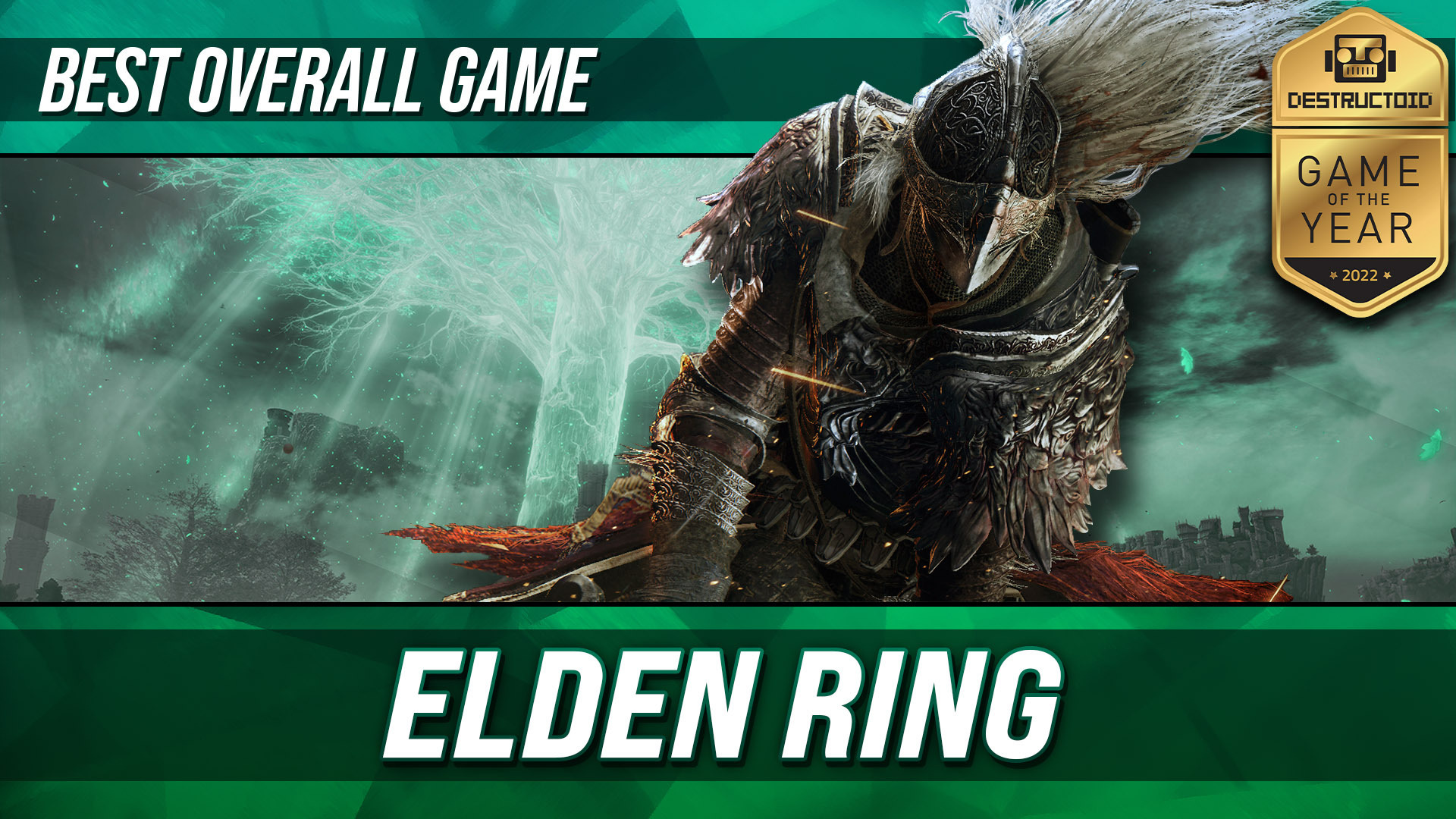
Elden Ring
Every so often, a game comes around and becomes a phenomenon overnight. Although the Elden Ring beta showed me that future was possible, few could predict just how ubiquitous the From Software juggernaut would become.
After launch, I looked around and basically everyone I knew was playing it. My wife, who only plays action adventure games once every few years, was — and still is — into it. All of her office co-workers were playing it, and several folks who had never Platinumed anything in their lives were going for a full clear. People I hadn't spoke to in a while were texting me for tips. It managed to break through like no other From Software game in recent memory: far more than the Bloodborne craze that you couldn't escape from for roughly a full year and change.
Sight unseen with no tips or guides, it also led to some of my most nerve-wracking review sessions in my nearly 15 year career: right up there with a few Sekiro bosses (From strikes again!). Although there are light streaks nudging you on where to go next, there were a few portions of the game that really had me sweating: and I don't feel like that often! It was a complete rush, and unlike almost anything else released this year, or the past several years.
All of the groundwork that From Software had been putting down since Demon's Souls in 2009 had led to this. All of the shared experiences, the blood stains, the high-variance stories of boss battles and conquests: it felt like it all came to a head with Elden Ring's massive open world, and the opportunity for emergent storytelling.
Having played From Software games all my life, it's been a blast to see all of this unfold in real time. I grew up with King's Field and Armored Core, and quietly enjoyed Eternal Ring when no one I knew was playing it. But I never thought this studio would grow to become a mainstream staple like this: clawing their way up from Ninja Blade to Demon's Souls, from Bloodborne to Elden Ring. It's been a blast to literally grow up with them, and after this most recent award winner, all eyes are on From Software to see how they're going to follow up their Souls-like legacy. Next stop: Armored Core VI.
Destructoid’s previous Game of the Year winners:
2021 - Chicory: A Colorful Tale
2020 – Hades
2019 – The Outer Worlds
2018 – God of War
2017 – The Legend of Zelda: Breath of the Wild
2016 – Overwatch
2015 – Bloodborne
2014 – Bayonetta 2
2013 – The Last of Us
2012 – Telltale’s The Walking Dead
2011 – Portal 2
2010 – Super Mario Galaxy 2
2009 – Uncharted 2: Among Thieves
2008 – Left 4 Dead
2007 – BioShock
The post Destructoid’s award for Best Overall Game of 2022 goes to… appeared first on Destructoid.
10 Books To Read If You Love The Matrix
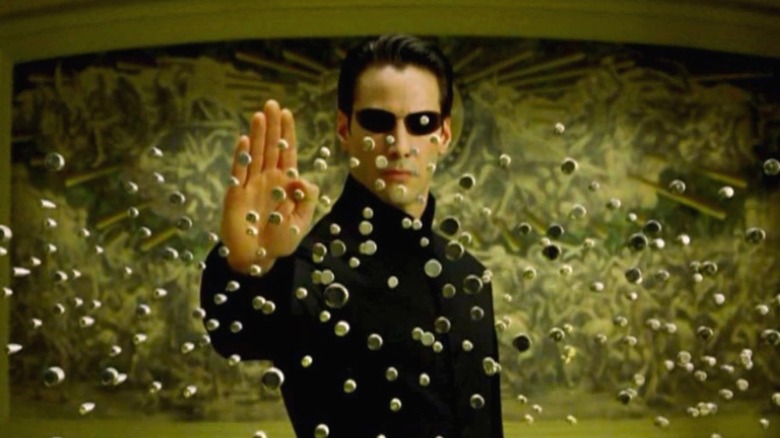
"The Matrix," like all great stories, was built on some great inspirations. Its basal foundations can be daunting, involving some deep dives into Buddhist theology, philosophy, and the development of AI. The Wachowski sisters drew from three non-fiction grimoires, if you'll pardon the term, to build their world of machine and man. "Out of Control," by Kevin Kelly, is a look at the potential of mechanical evolution. "Introducing Evolutionary Psychology" by Dylan Evans shaped the id of Neo's life. And "Simulacra and Simulation" by Jean Baudrillard is a well-known philosophical treatise that birthed Morpheus' "desert of the real."
These are tough books, but they provide terrific insight into the thought process behind the Matrix itself. Readers who would prefer to take the blue pill instead and jaunt through imaginary worlds in search of a similar fix to Neo's journey through ones and zeros toward his personal nirvana will find plenty of science fiction to enjoy, too. We're going to offer you a complimentary buffet that will explore similar concepts, such as the harsh lives of Chosen Ones, and the ramifications of AI gone rampant.
Neuromancer By William Gibson
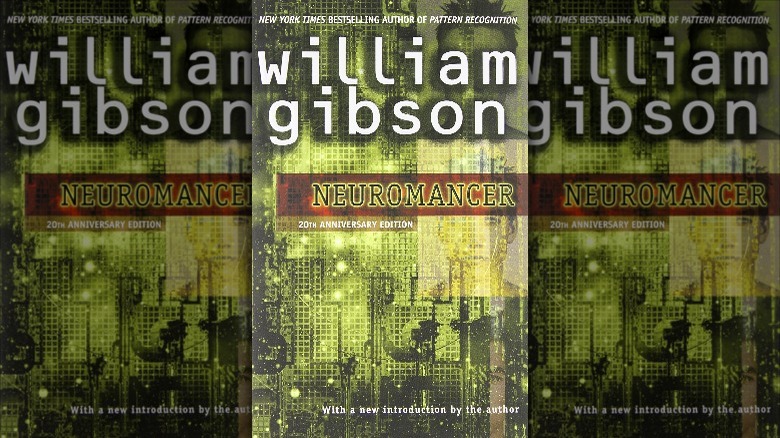
If one book is a necessity on any "Matrix"-style recommendation list, it's got to be "Neuromancer." It's the book that codified our modern ideas of cyberpunk, using relatable cultural touchstones to launch readers into the then-fledgling world of true, sentient AI, blending it with noir filth.
The plot begins with a riff on John Carpenter and features an antihero forced into one last job for people he doesn't even like. But Case's similarities to Snake Plissken dry up fast. Case is a cutting-edge but screwed-up hacker who has his access to the matrix — yep, that's where the Wachowskis' term for a VR reality came from — restored in order to help out a high-stakes heist. Instead, Case comes face to face with some of the most famous fictional AI characters this side of SHODAN from "System Shock." Wintermute and the Neuromancer itself are waiting to meet you. If you've never tried out the work that spawned decades of a great new genre fare and inspired the heart of "The Matrix," why? It's not even 300 pages long, it's never out of print, and it reads like a restored Mustang 289.
Ancillary Justice By Ann Leckie
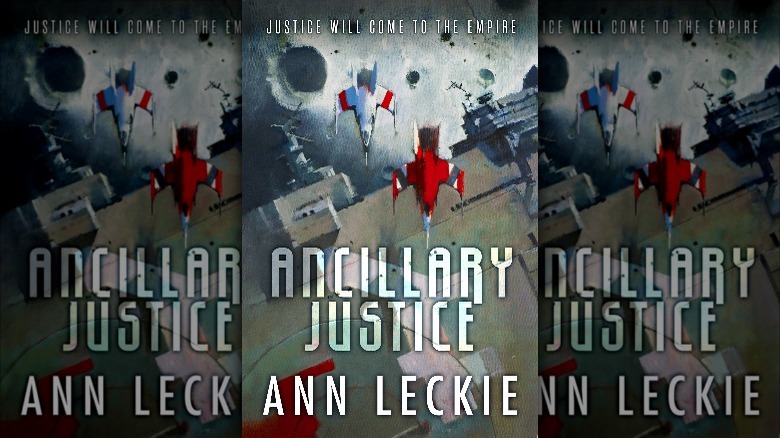
Space opera series are epics about sprawling galaxies with tumultuous politics and worlds at war. "The Matrix" runs on a smaller scale than most of that genre, with its events taking place solely on Earth. But "Ancillary Justice," the start of the "Space Radch" saga by Ann Leckie, is a terrific entry point that overlaps cyberpunk and space opera in ways Neo fans would love.
Our protagonist is Breq, an AI trapped in a human body — the "ancillary" of the title, a cold word meaning a person or subordinate that's part of a support structure — after the destruction of her core personality shell, the starship Justice of Toren. With a future that borrows a little of the grim mortality of "Warhammer 40,000," which is about to become a Henry Cavill series, we find ourselves rooting for the AI over what the galaxy's conquerors, the Radch, have become. Machines have evolved in Leckie's crunchy metal universe, but does that mean they've replaced the need for humanity? The same questions "Matrix" fans might want to investigate come up here, with a protagonist even more dedicated to their furious cause than Agent Smith.
Ghost In The Shell By Masamune Shirow

It's well-known that director Mamoru Oshii's "Ghost in the Shell" is the classic anime adaptation that inspired the cinematography and spirit of "The Matrix." But the original source, Masamune Shirow's manga, is equally worth our time. Blending early digital art with a watercolor-style palette, the initial "Ghost in the Shell" is both lighter in tone and more detailed in its exploration of its cybernetic future.
Though this seminal story begins with AI and human intelligence still at odds, the full saga, which includes two volumes of additional stories, "Man-Machine Interface" and "Human-Error Processor," explores Motoko's evolution as a being that has successfully bridged the two worlds. With her journey comes a riotous, violent, and sometimes sexy world of enhanced humanity, and all new kinds of cybercrime to investigate. There's no Matrix to jack into in this neon-lit city. But a clever enemy can hack into a person's mind and body entirely, and only a handful of trained experts know what to do in that situation. Their success, however, is not guaranteed.
Altered Carbon By Richard K. Morgan
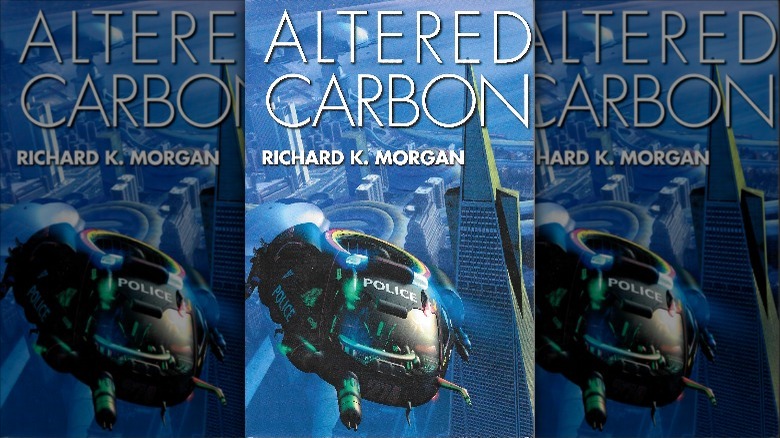
In "The Matrix," the machines were getting all of those battery bodies from somewhere. Further, "Resurrections" showed it was possible to upload a saved consciousness into a new fleshy shell. Neither of these details are new to science fiction, but "Altered Carbon" is a great novel that explores these two concepts together. It was a Netflix cyberpunk TV show, too, for a little while. Pick up the book instead.
In this slightly noir-flavored cyberpunk world, people can protect their consciousness beyond death by using "stacks," a spinal storage device that can be installed into a new human "sleeve" after the body fails. But there's a lot to unpack about privilege and power in this future, with the rich, naturally, benefiting from better upload service and stack protections far beyond the reach of most. It's one of these privileged folks, Laurens Bancroft, who asks Takeshi Kovacs to investigate his own murder. Bancroft's last memories have been meddled with, and as the dominos fall, so too does a sprawling conspiracy to prevent a crucial United Nations resolution from becoming law. It's classic cyberpunk stuff, and like "The Matrix," it asks how important our individual consciousness is in a world where flesh is an afterthought.
Lord Of Light By Roger Zelazny
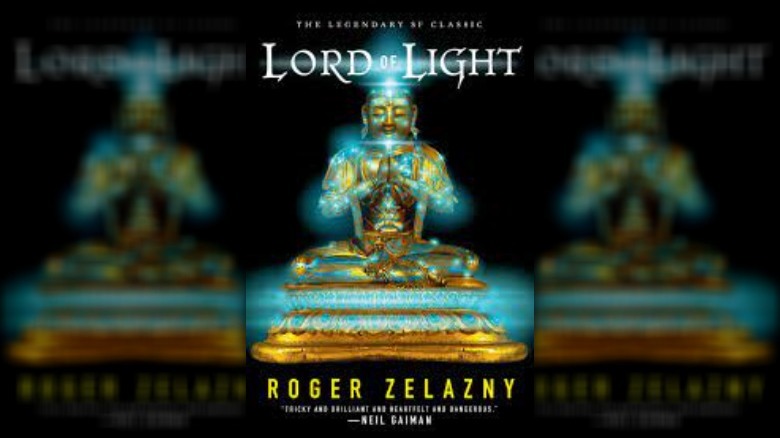
Stepping away from its cyberpunk themes, "The Matrix" also contains some heady commentary about the life of a messiah, as seen through the Buddhist cycle of karma. It's not the first story to do that, however, and those intrigued by Neo's entrapment in a cycle that wasn't ever meant to end might fall in love with Sam, the reluctant Hindu god at the heart of "Lord of Light."
Sam is his shortened name, from Mahasatmatman. That's one of the first clues that this world of Hindu myth isn't quite right. That's no name from the epics, nor is it quite right for what Sam actually is. But Sam could definitely have a drink with Neo. It's up to both of them to navigate a world unhappily forced into a rigid cycle of karma and caste and to break the chains of the "gods" with a revolt that begins in faith. Yes, "Lord of Light" is classic science fiction; these "gods" are evolved humans, using the weapons of their ancient faith to repress alien worlds. And just like the Hindu Yuga cycles, so too will history repeat. Sam must become Buddha (or Samma Sambuddho, for the Samming of it all), and free a world via enlightenment.
A Canticle For Leibowitz By Walter M. Miller Jr.
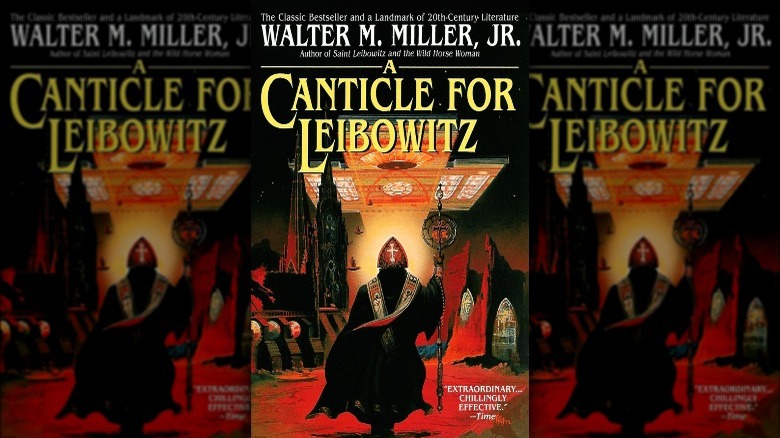
"The Matrix" dealt with the recurrent cycle of apocalypses, iterations of a synthetic world bent on destroying itself because the machines perceived humanity to prefer that over utopia. There are plenty of science fiction parables to back the machines up in their assumptions, and the most well-known is, arguably, "A Canticle for Leibowitz."
Like "The Matrix," and also rather like the classic Ingmar Bergman film, "The Seventh Seal," you get more out of "Canticle" the more you try to understand its theological underpinnings. But "Canticle" hides black comedy in its priceless relics of the world before it was scourged by nuclear fire, and even darker revelations about humanity itself. Both hopeful and bleak, this book makes no bones about our failures to learn from our own history. It's also quietly, constantly asking its readers to question God's place in all of this. On a brighter note, if you've ever heard a lit nerd make a joke about surviving the end of the world with only a grocery list to guide your morality, this is where it came from. Pastrami, sauerkraut, and bagels. The memory of these foods will last beyond the end of the world, and into the start of the next one.
Dune By Frank Herbert
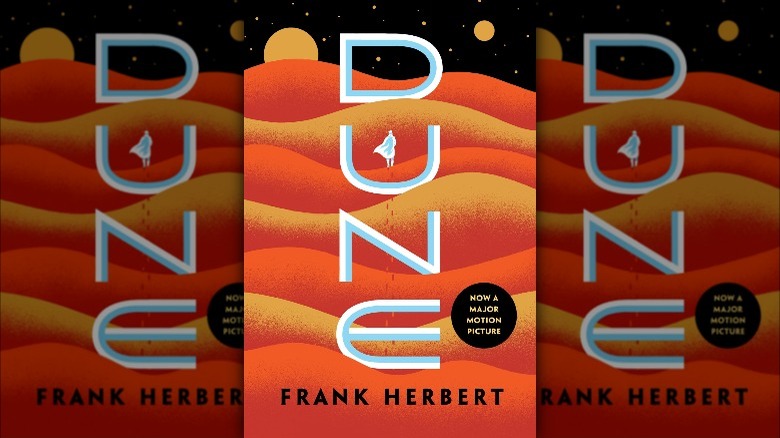
Odds are, a "Matrix" fan will have at least tried to pick up the dense and heady "Dune," especially after Denis Villeneuve's sensational movie. But keep plugging away. After a first section that throws you into the deep end of a galaxy with all new words and social rules, the saga of "Dune" unveils at least one simpler plot thread to follow: Being the messiah to the thronging masses is an ungodly headache.
Neo fans already understand how heavy that burden can be, and just how much forging along towards your destiny can cost you. Like Neo, Paul Atreides keeps receiving vague snippets of his future, shaped by prophecies and genetic programs set up by others. Sometimes it doesn't feel like he has any free will of his own. The greater "Dune" saga, from the original up through "God Emperor of Dune," delves into that question. The Golden Path is the fervent hope of all the messiahs to spring from the Atreides line. It's an achievement of pure free will, a timeline that can't be predicted, much less controlled. It's a world that would drive the machines of "The Matrix" mad ... but creating it will incur a heavy toll on humanity.
Blame! By Tsutomu Nihei
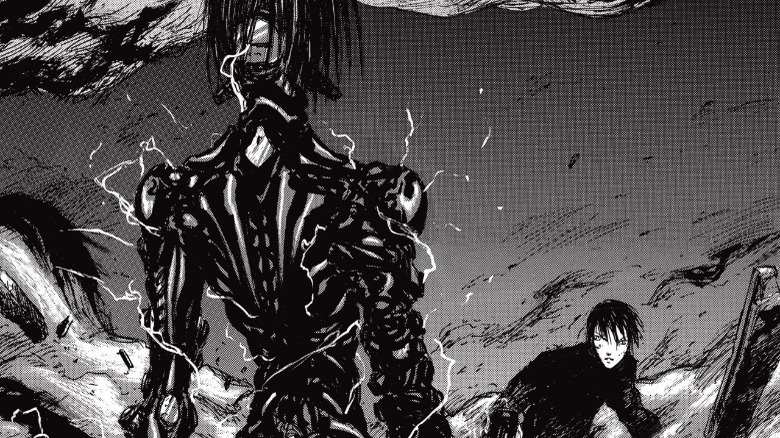
Often terse and featuring a lusciously detailed nightmare world of machines gone mad, Tsutomu Nihei's "Blame!" didn't reach Western shelves until almost a decade after it began serialization. That caused a little confusion for manga fans at the time, who wondered if Nihei had been inspired by the Wachowskis, when, in fact, the story of Killy's nigh-endless search for a way to stop the machine overgrowth preceded "The Matrix" by almost a decade.
Killy is a laconic fellow armed with a lot of guns. He's not a sympathetic character, and he can't afford to be. He's also no messiah, but he is on the lookout for one. Sort of. This world of AI has gone into rampancy, and it's created a Singularity-style "city" of machinery that's subsumed most of our solar system. Killy's searching for a potentially extinct human genetic code, the only thing that can log back into the system and shut the overgrowth down. Complete at 10 volumes, you'll get some answers as Killy cuts down hateful machines and faces off with the vestiges of humankind. But they might not be the ones you were looking for.
Heir To The Empire, The Original Thrawn Trilogy By Timothy Zahn
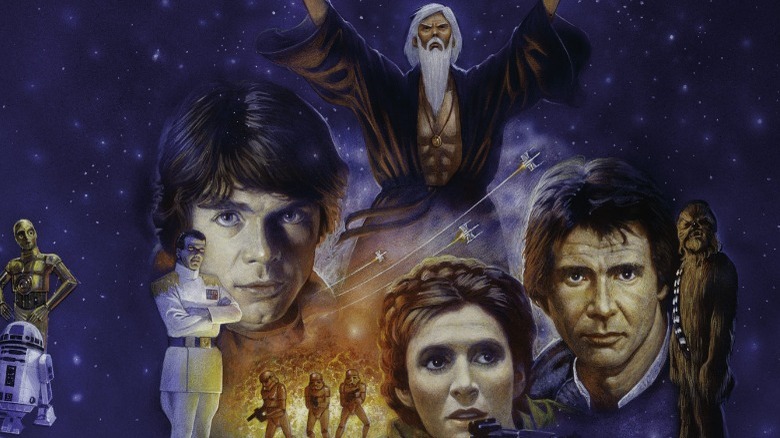
Going from "The Matrix" to "Star Wars" may feel like a weird jump, but Timothy Zahn's three-book introduction to what's now the Legends continuity stands the test of in-depth science fiction. It deals with the ethics of cloning, delves into corrupted underworlds, and introduces a mind so thorough that he — Grand Admiral Thrawn, in his first incarnation — might as well be a machine.
But most thematically relevant here is the rise of Luke Skywalker as the galaxy's successful chosen one. It's all up to him, from the reformation of the Jedi to personally having to handle major threats to the reborn Republic. To pull it off, he must face the darkest side of himself. Literally, in this case, courtesy of the dead Emperor's secret scientific facilities and a rogue clone that's so powerful and terrifyingly deranged that even Thrawn can't control him. It may be "Star Wars," but it's good stuff, with all the space-opera highlights and terrible days of the Chosen One a fan could want.
Valis By Philip K. Dick
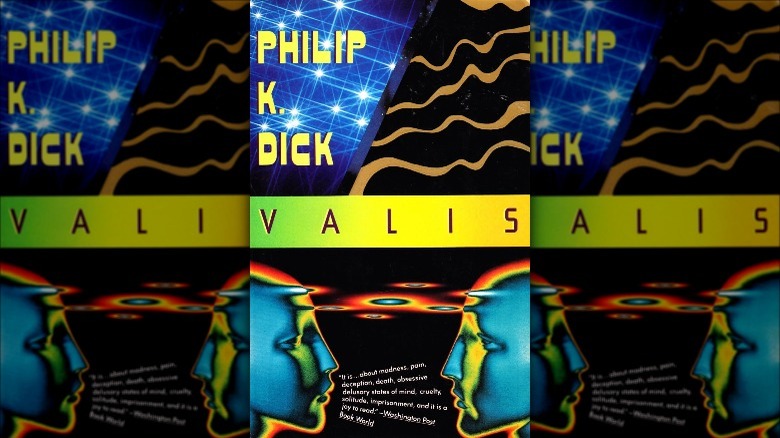
At least one PKD story should be required for any "Matrix" fan, and many of them are great contenders. "Do Androids Dream of Electric Sheep?" is already a cyberpunk baseline, introducing social controls and robotic creatures, but it might be hard to read it and not think, naturally, of "Blade Runner." So let's suggest one that launches beyond the sky, into techno-religion and gnostic symbolism.
"Valis" wasn't pure fiction to its author, as it shaped his lifetime of unreality into something he could step back from and assess. Even PKD admitted that his tale of meeting his alien-influence god might've been a result of drugs or mental illness. Yet, now more than ever, there's something compelling in his sprawling, mind-warping tale of unreality layered over a comforting fiction. The black iron prison PKD briefly describes is the ultimate form of social control, a prison that contains all, though none are aware. What did he see? Reality? The idea of the Matrix, back in 1981? Simulation theory? Decide for yourself, but have some migraine medication on hand. This book's a tricky one to navigate, and by the end, you might have a few new questions about your own reality. When in doubt, follow the white rabbit.
Read this next: Sci-Fi Movies That Accurately Predicted The Future
The post 10 books to read if you love The Matrix appeared first on /Film.
The Best Documentaries Of 2022, Ranked
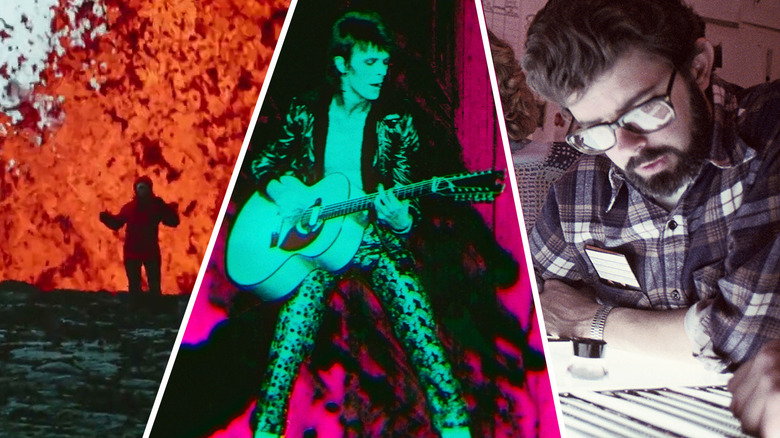
The documentaries released in 2022 are a versatile mix. Sure, the year saw the expected Netflix true-crime series (including the return of the hit "Unsolved Mysteries" reboot) and celebrations of trailblazers ("Say Hey, Willie Mays!"), but we also got the light-hearted, high-spirited stories of unbelievable fraudsters ("The Tinder Swindler"), deeply disturbing stories of human evil ("Our Father"), and scandalous stories of corporate evil ("White Hot: The Rise & Fall of Abercrombie & Fitch").
The genre is in undergoing a bit of a boom. For lovers of non-fiction filmmaking, it feels like we have more options now than ever. Last year's critical hit "Flee" redefined what a documentary film looks like, paving the way for the critically acclaimed Canadian animated documentary, "Eternal Spring (長春)." Apple TV+ released a speculative nature documentary series depicting an imagined cretaceous period with "Prehistoric Planet." Neon's trippy indie hit "Moonage Daydream" celebrates David Bowie in a manner wholly unique and fitting for the experimental pop star. Sure, we got some of the expected, good-old-fashioned documentaries in 2022 — but we also got a slew of films and TV series pushing the limits of what the genre looks and feels like.
The best documentaries of 2022 are the ones that balance factual content with exceptional execution. I personally feel that one should walk away from the viewing experience with a newfound understanding or appreciation for a subject. It's not enough to just tell an interesting story — it needs to be told particularly well. There are lots of great documentaries that are released each year, but it takes something special to be the best.
Light & Magic
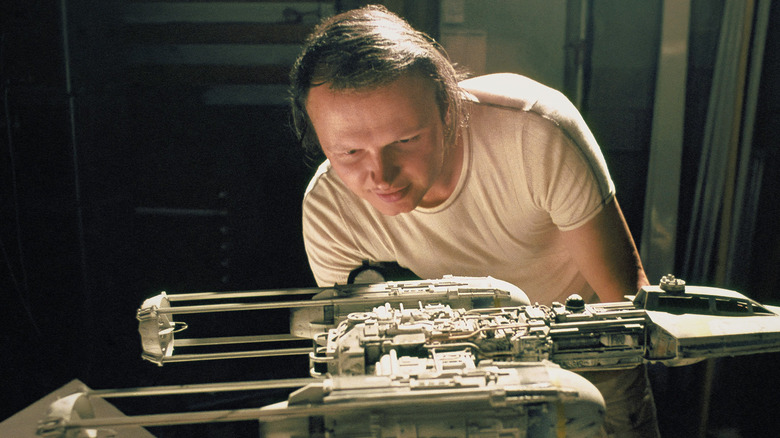
The Disney+ docuseries "Light & Magic" is essential viewing for film nerds history buffs like myself. The six-series tells the story of one of (if not the) most influential special effects studios in the world: Industrial Light & Magic. ILM revolutionized the movie-making industry with the visuals it created for "Star Wars: A New Hope" in 1977 (then just titled "Star Wars"), and continued to up the ante with groundbreaking, mind-melting set pieces in films like "Raiders of the Lost Arc" (Nazi face melting!), "Poltergeist" (a house implodes!), and "Jurassic Park" (realistic dinos!) — all accomplished with cutting-edge techniques.
"Light & Magic" covers the history of ILM, from George Lucas' founding of the studio to the present-day innovations. The documentary uses a combination of talking head segments, archival footage, and old photos to celebrate the men and women who put ILM on the map. Big names like Steven Spielberg and James Cameron lend a level of prestige to the content, while less widely known creatives — like stop-motion specialist Phil Tippett and artist and supervisor Dennis Muren — provide fascinating, behind-the-scenes insight into some of Hollywood's most famous special effects sequences.
There's a reason why "Light & Magic" is at the bottom of this list: as interesting as the documentary is, it often feels biased. The series struggles to obfuscate the fact that the ILM's glory days are past; sure, the special effects studio still produces great work, but they aren't untouchable industry leaders anymore. Disney owns Lucasfilm, which in turn owns ILM — making the objectivity and motives behind this Disney+ original "a bit sus" (as the kids say). It reads as slightly dishonest, putting a bit of a bitter aftertaste on an otherwise fantastic docuseries.
Web Of Make Believe: Death, Lies & The Internet
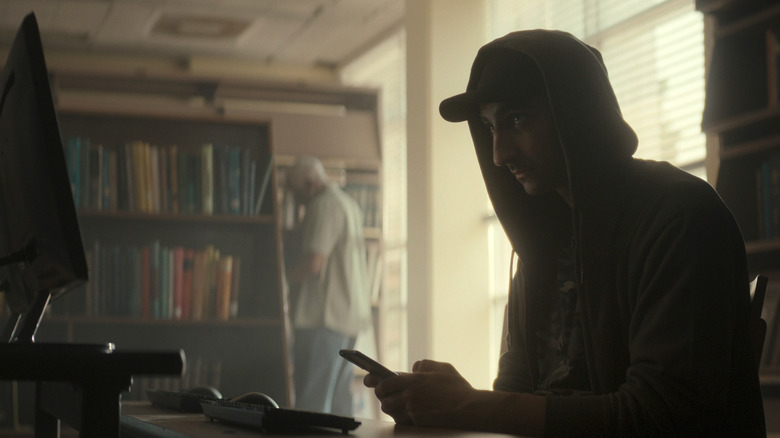
Netflix does true crime well — but with "Web of Make Believe: Death, Lies & the Internet," the streaming giant offers something a little different. The docuseries is a horrifying exploration of the "dark" side of internet culture (but not too dark! At least not yet), looking at everything from virtual sex crimes to the rise of white nationalist groups. The first episode offers a really brutally honest look at the danger of swatting and also the kind of narcissism and immaturity that encourages and rewards that kind of behavior online. The third episode, "I'm Not a Nazi," presents an eye-opening look at the insidious ways alt-right groups operate online. The final episodes, a two-parter called "The Stingray," begins as a general story of two hackers but transforms into an investigation of the ethical problems with the tech used by law enforcement.
Netflix's "Web of Make Believe" is a strong collection of documentaries with a unique angle. Even those who live online far too much (like myself — I'll need to touch grass once the snow melts) will likely be surprised by the major reveals and twists herein. Not every episode is perfect; I personally found "A Murder in D.C." a bit boring, and the "Sextortion" episode, although interesting and tastefully done, did feel tonally inconsistent with the rest of the series. Still, though, I turned this Netflix docuseries on at random and found myself unable to pull away.
All The Beauty And The Bloodshed
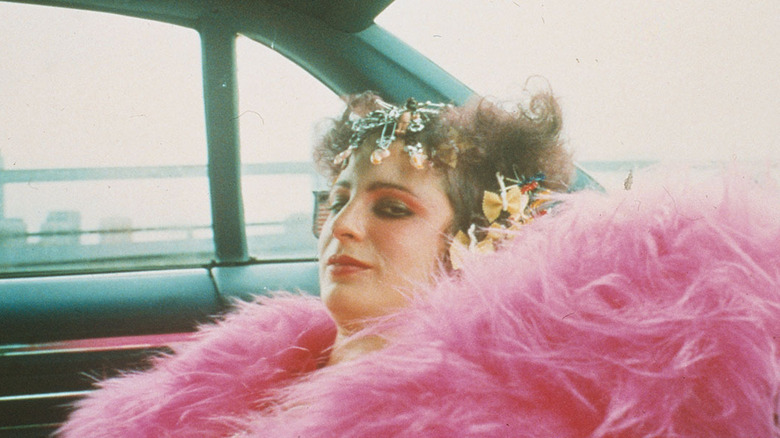
One part artist biography, one part social issues exposé, and two parts unapologetic celebration of queer subcultures, Laura Poitras' documentary "All the Beauty and the Bloodshed" is easily one of the most personal documentaries of 2022. The film centers on photographer Nan Goldin and her advocacy work challenging the Sackler family — particularly, their role in creating the opioid epidemic.
The Sacklers controlled Purdue Pharma, which produced the highly addictive painkiller OxyContin. Knowing how dangerous the drug was, the company heavily marketed it regardless, then used that money to buy public prestige in the form of large donations to cultural institutions in exchange for getting a building or scholarship named after the family (often museums). It makes sense for someone like Goldin to take them down: not only is she a reputable artist well-known in the global art community, but she a recovering opioid addict herself, thanks to OxyContin.
Like with "Casa Susanna," "All the Beauty and the Bloodshed" benefits from a high level of historic photographs. Goldin's portfolio serves as an unapologetically gritty backdrop, showing viewers the lives of gay, lesbian, and transgender New Yorkers in the early 80s, and the unique community they created — along with Nan's transition into activism during the AIDS epidemic. The film reverberates with a punk rock energy that is irresistible and inspiring.
Unfortunately, Poitras' documentary bites off a bit more than it can chew. The opening shots of the Sackler protests are dramatic and compelling, but the film struggles to keep up that momentum. What's more, not much time is spent on explaining the wrongdoing of Purdue (and by extension, the Sackler family) — so those interested in that topic will need to supplement that elsewhere.
Downfall: The Case Against Boeing

Netflix's "Downfall: The Case Against Boeing" is a chilling look at how a company's reputation can flip almost overnight. Boeing was once one of the most respected American manufacturing companies, known for its engineering excellence and commitment to best-in-class quality. However, following the merger with McDonnell Douglas in the mid-90s, the company's culture changed internally, leading to a slip in those once-leading standards. As the documentary presents, the resultant cost-cutting measures led to the tragic Boeing 737 MAX crashes in 2018 and 2019.
In October, 2018, Lion Air Flight 610, a domestic flight in Indonesia, crashed shortly after takeoff, killing everyone onboard. Then, in March 2019 — less than six months later — Ethiopian Airlines Flight 302 also crashed, just minutes after the plane became airborne. Both planes involved were the brand-new MAX 8 designs. Although the manufacturer did its best to skirt responsibility and maintain the safety of its planes, eventually, Boeing did ground its fleet of 737 MAX airliners — but not before hundreds of innocent people tragically lost their lives.
"Downfall: The Case Against Boeing" documents the company's history, from its trailblazing beginnings to its public fall from grace. For those interested in understanding why the 737s crashed, the film presents an easy-to-follow investigation into the faulty system responsible for the planes' malfunction, as well as the contributing factors — namely, some money-saving shortcuts that had disastrous repercussions. This is one of those cautionary tales about corporate greed that will make you think twice about putting faith in a brand name.
Disney Channel's Theme: A History Mystery (Defunctland)
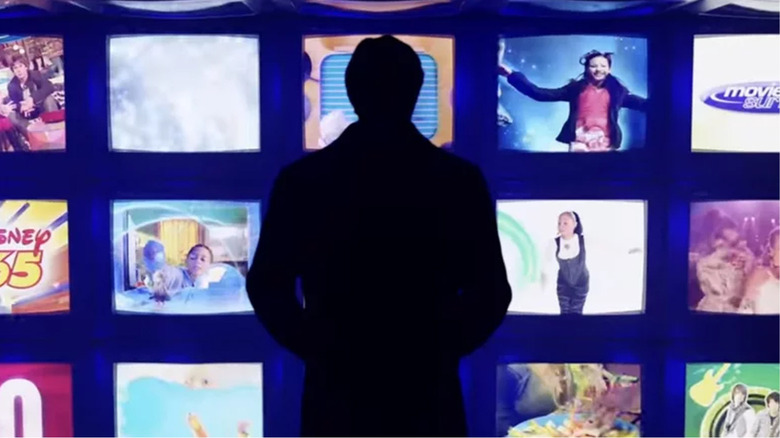
I bet you weren't expecting to see a YouTube documentary on here! Defunctland's most recent upload, "Disney Channel's Theme: A History Mystery," is a bonafide documentary, complete with archival images and interviews with people involved. As a 30-something Canadian woman who spent her teen years listening to Led Zep and learning to play Nirvana songs, I don't have much nostalgia for the Disney Channel nor its theme — but Defunctland's earnest fascination with the subject had my rapt attention.
Defunctland is a YouTube channel created by Kevin Perjurer with videos that document "defunct" amusement park rides and other related lost media (mostly old TV shows). The videos are, essentially, a fond exploration of '80s, '90s, and early aughts nostalgia, with an emphasis on history and cultural studies. Fitting with the rest of the channel, "Disney Channel's Theme" is essentially an investigation into an influential pop culture relic that went under-recognized at the time. Despite how iconic the short channel ID sequences were, the origins of Disney Channel's sound signature is unknown — or at least it was, until Defunctland busted that mystery wide open.
"Disney Channel's Theme: A History Mystery" is a really heartfelt, passionate exploration of what is admittedly a pretty niche topic. It's also just very well done. As is often the case with Perjurer's videos, the production itself is a step above most of what's on the platform. The 90-minute documentary is well-paced, using compelling visual segments to great effect. There's also a message at the end and a real, genuinely unexpected twist at the end — both great elements that make the viewing experience that much more satisfying. The video is not without flaws — it is severely limited by clear budget constraints, as well as access to "star" talent and general resources. Still though, being able to take what could easily be dismissed as an irrelevant or frivolous bit of trivia and turning it into an engaging story is impressive for any documentary, let alone something self-produced for YouTube.
The Janes

HBO's 2022 documentary "The Janes" is a brutally honest portrayal of life before Roe v. Wade. The film tells the story of "The Janes," a network of activists who defied American law to help women find safe and affordable access to abortions. It's a retrospective that serves a purpose: reminding us all what's at stake if the laws are changed. Whether you're personally pro-choice or pro-life, "The Janes" forces the viewer to confront an uncomfortable reality: when abortion access is limited, women die.
HBO is known for its documentaries, and "The Janes" lives up to the network's reputation. While nothing groundbreaking is happening here, the documentary is solid (if conventional). The subject matter isn't exactly ripe for exploration (the film isn't eye-opening like "Paradise Lost" or "Beware the Slenderman," nor is it personal and intimate like "Jane Fonda in Five Acts" or "Robin Williams: Come Inside My Mind"), but it is particularly relevant at this moment in history, especially for American audiences.
What's impressive though, is how empowering "The Janes" feels. Women have a right to bodily autonomy, and "The Janes" doesn't waste anyone's time by arguing that perspective as though there's a counterpoint — it's not up for debate. Without ever feeling preachy or needlessly provocative, the documentary simply presents the facts openly and honestly, then celebrates the women who dedicated their lives (and risked their freedom) to help people in need.
Eternal Spring (長春)
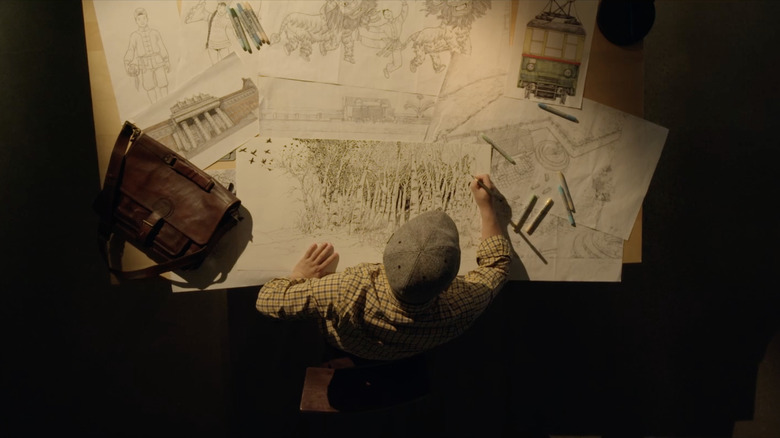
"Eternal Spring (長春)" is Canada's official entry for the 2023 Oscars — and not just in the Documentary Feature Film and Animated Feature Film categories, but also in the International Feature Film category. That, more than anything, speaks to how special this documentary is.
"Eternal Spring" tells the story of an infamous hijacking — and the subsequent fallout for those involved. In 2022, members of an outlawed spiritual practice, Falon Gong, took over the feed for a government-controlled TV broadcast in Changchun, China, using the equipment to directly contradict the government's messaging and set the record straight about their religion. For comic artist Daxiong (best known for his work on "Justice League" and "Star Wars"), this move meant he had to flee his home. For many of his fellow practitioners, the consequences were far, far worse.
Daxiong largely leads the story, using his artwork — rendered in 3D animation — to recreate the events. The style really emphasizes the hand-drawn aspect, including textures evoking the streaky, imperfect look of marker fill. The aesthetic this creates in "Eternal Spring" is really unique; I was actually reminded of the Wii game "Mad World," which I'm sure no one except me remembers (I loved it!) but essentially was like gritty illustrated action brought to life. Daxiong has a personal stake in the story, making the inclusion of his artwork additionally meaningful. The movie draws comparisons to "Flee," but here the animation has a more integral role in the story rather than just being the medium used to tell the story.
We Need To Talk About Cosby
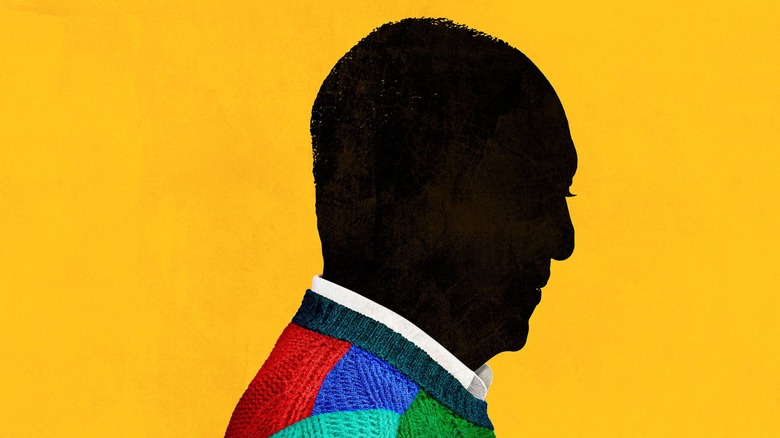
"We Need To Talk About Cosby" is by no means fun to watch — documentaries concerned with uncovering uncomfortable truths very rarely are. And, of course, Bill Cosby's shocking release from prison in 2021 only adds another layer of frustration and disgust to an already horrendous, nauseating story of abuse, exploitation, and assault. Yet, writer/director W. Kamau Bell composes his four-part docuseries with such care that this hard-to-talk-about topic becomes impossible to ignore.
Showtime's "We Need To Talk About Cosby" is what the title implies: a necessary conversation about "America's Dad." Comedian and bonafide pop culture fixture Bill Cosby was virtually untouchable for decades, and even today has supporters, despite overwhelming evidence of his misdeeds. Bell responds to this with an honest and frank discussion; rather than wallow in the horrific actions and lingering trauma (something true crime is far too often guilty of), the director presents a case for how the man became such an important role model, especially for Black communities in America. After laying the groundwork for Cosby's celebrity status and infallibility, he empowers women to tell their stories of abuse — as well as the ways in which Cosby's fame and reputation made them doubt their own experiences. These combined forces created a perfect storm for sexual predation to flourish.
We are living in a post #MeToo age, but we should not rest on our laurels. "We Need To Talk About Cosby" is essential viewing for anyone who can stomach the topic because it does such an excellent job of investigating the ways that social power and celebrity can warp critical thinking. Those who still are unable to accept that the gentle Jell-O-selling, sweater-loving father figure is a monster are not stupid or evil — they're just trapped in an ideology that was designed to trap them.
Prehistoric Planet
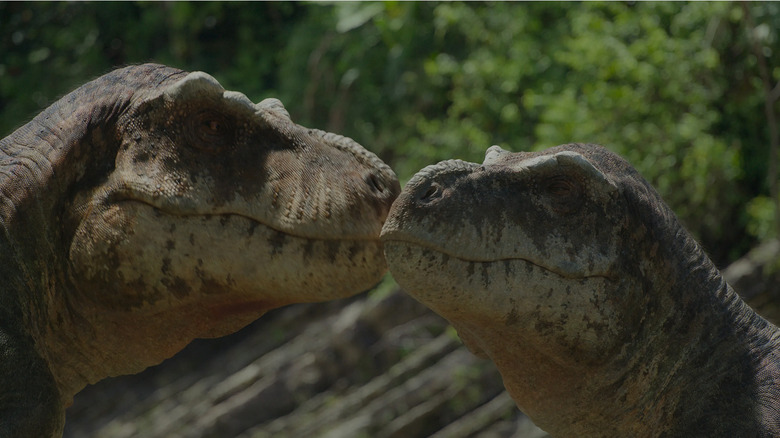
Did you know that the mighty Tyrannosaurus rex could swim? Or that the terrifying Carnotaurus — the primary antagonist in Disney's "Dinosaur" — may have used his itty-bitty forearms for an adorable mating ritual? These are just some of the theories I learned from watching Apple TV+'s "Prehistoric Planet," a five-part series produced by BBC Studios. Following in the footsteps of the BBC's landmark nature documentary "Planet Earth," "Prehistoric Planet" pushes the envelope for the subgenre: Unlike most dinosaur-based documentaries, this series uses photorealistic CGI to depict its subjects interacting with their environment, achieving a degree of realism unlike anything audiences have seen before.
With Jon Favreau as showrunner, David Attenborough as narrator, and Hans Zimmer as one of the composers, there's a ton of talent behind "Prehistoric Planet" — and it shows. Sure, dinosaurs have become more prevalent onscreen over the last few decades, thanks to the "Jurassic Park" franchise and movies like Disney's "Dinosaur," but it's still genuinely very fun and gratifying to watch these giants stomp around the cretaceous period. Seeing a T-Rex stomp through suburbia in "The Lost World" is cool and all, but it's ultimately fantasy. The sequences in "Prehistoric Planet" are equally as manufactured, but the appeal is that we might be seeing something that really did happen. And this is the highest quality visuals we have so far when it comes to scientifically accurate CGI renderings.
While this is a truly excellent offering and easily one of the best documentaries of 2022, the docuseries does suffer from a few minor shortcomings. By adhering to the general formula of other BBC nature docs (i.e. "Planet Earth, "Life," etc.) "Prehistoric Planet" robbed itself of much-needed context that could have aided the viewing process, such as subtitles (to keep track of names like "quetzalcoatlus" or "kaikaifilu") or talking head segments with paleontologists to explain what evidence the theories are based on.
The Colour Of Ink

Brian D. Johnson's "The Colour of Ink" is a Canadian documentary that had me enthralled from beginning to end. I never expected to love this film — but the topic was mildly interesting and I like to support Canadian filmmakers. What I saw, however, absolutely blew me away.
"The Colour of Ink" is a beautiful, vibrant celebration of art throughout the ages, with a focus on ink itself. The documentary follows Toronto artist and small-batch ink-maker, Jason Logan, as he interviews other artists who work with the medium. What begins as a personal journey into Logan's world gradually spreads out to a much larger, and more philosophical, discussion of the role art plays in human history, and the pleasure to be found in working with the ephemeral. The artists he talks to all have their own fascinating stories, which contribute to the documentary's overall celebration of unique perspectives and individuality. Industrial ink today is manufactured to be consistent and permanent. The ink Logan creates, however, is much more natural and organic — it is made from items he encounters out in the world and is not intended to last forever. As he tells Margaret Atwood in one scene, that's the whole point.
The best documentaries are those that take unassuming, niche ideas and manage to craft a compelling film exploring the topic. The Colour of Ink" achieves this in spades. Johnson's direction in " is mesmerizing; the cinematography is gorgeous, presenting the art and nature at its center as impossibly grand. This is one of those films that demands to be seen on a large screen in 4K Ultra HD — not because it's exciting or action-packed, but because there's just so much to see.
Moonage Daydream
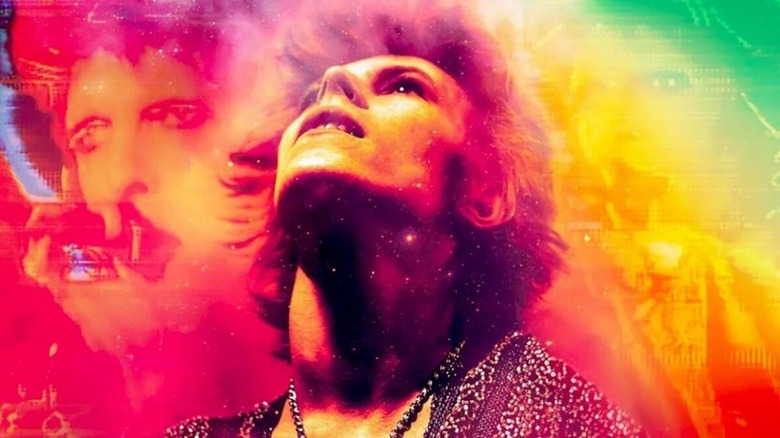
I never really got into David Bowie. Apart from the odd standout — "Heroes," "Space Oddity," "Rebel, Rebel," etc. — his albums just didn't speak to me. I'd put them on occasionally (I had his complete discography on my iPod Nano, an ancient device teens used back when cell phones were less commonplace and looked a bit like TV remotes), but the music never really grabbed me. I'd think it was good, just not great.
The 2022 documentary "Moonage Daydream" taught me something: it's not that I never got into David Bowie, I never got David Bowie. His music isn't meant to be the background soundtrack to every day. It's visual, it's performative, and it demands to be seen. His art is daring, expressive, and — weirdly — kind. There's an inclusivity to his work that I didn't appreciate until now.
Written, directed, and produced by Brett Morgen, "Moonage Daydream" is a trippy, vivid, and vibrant story of who David Bowie was, told through clips of old interviews, performances, and more. But unlike last year's "Get Back," "Moonage Daydream" is more than just pure historical footage: Morgen artfully combines music, interview audio, and archival footage with original video imagery — some of which is very abstract — to communicate ideas. We the audience are not passive observers — we're being told Bowie's story told through his own words, but like we've never seen before. An extra-sensory montage that is highly effective and endlessly compelling.
It's about the best posthumous tribute imaginable, but my God — I am devastated every time I reflect on how this bright, beautiful human being was taken from the world too soon.
Fire Of Love

I've never seen a film quite like "Fire of Love" before. The National Geographic documentary is the story of Katia and Maurice Krafft, two volcanologists who fell in love and dedicated their lives to pursuing their shared passion: the science of volcanoes. These bold French researchers chased volcanic activity around the world, getting up-close-and-personal footage of eruptions, lava flows, and other related phenomena. It was a pursuit that contributed to our understanding of the natural world, but one that would ultimately cost them their lives.
Throughout their careers, Katia and Maurice Krafft became minor celebrities in the relatively small world of volcanology, thanks to the somewhat unorthodox nature of their partnership and their undeniable onscreen chemistry. The two were able to fund their expeditions through selling their findings in the form of documentaries, books, lectures, etc. — which means that Katia and Maurice left behind not only a rich archive of on-site materials, but also footage of themselves doing publicity circuit interviews. Director Sara Dosa uses these various resources to celebrate the volcanologists, using the material to investigate who they were as scientists, explorers, and lovers.
"Fire of Live" makes best use of the visual medium, combining various strategies to engage audiences. The documentary uses subtle tricks to meld the contemporary elements with the 4:3 screen ratio footage, giving the film a retro quality throughout. There's a playfulness to the couple that is echoed in the Dosa's direction, which is frank, dignified, and respectful. Dosa does not manipulate the couple's image but rather attempts to show them as fully realized human beings, warts and all. The narration provides much-needed context — and at times, is reading directly from personal writings, providing an audience a glimpse at Katia and Maurice's inner lives. It's a deeply personal documentary and a truly magnificent entry in the genre.
Read this next: The Best Movies Of 2022 So Far
The post The Best Documentaries of 2022, Ranked appeared first on /Film.
Critically Panned Horror Movies That Are Worth A Watch
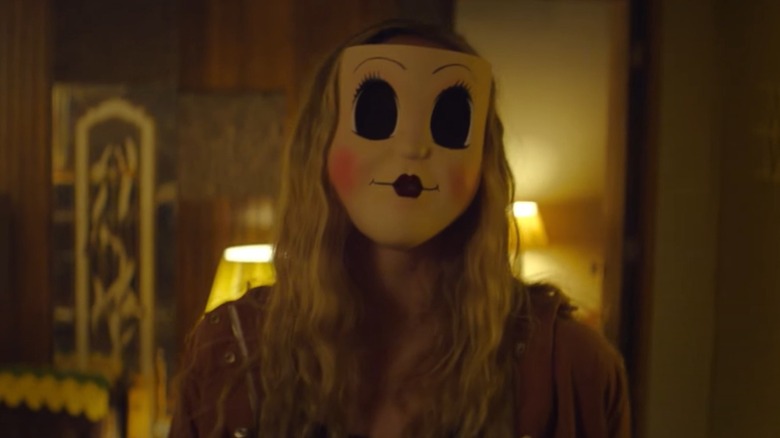
People like horror movies for a variety of reasons. Many people like to be scared, but what that means varies from person to person. Some people are frightened when horror movies make them jump in their seats. Others prefer a feeling of dread and suspense. There are horror fans who love gore, but there are others who think buckets of blood are cheap, and they prefer atmospheric horror films instead.
People dislike horror movies for many reasons, too. Horror is full of remakes and sequels, and audiences may approach a film from the perspective that sequels and remakes are inherently less worthwhile than original stories. Some people think that a remake or a sequel needs to be as good or better than the original to be worth watching. That's certainly a valid way to approach moviegoing, though it's one that often leads to disappointment.
That's not how I like to approach it, though, and it's especially not how I approach the horror genre. I don't think a movie has to be "better" to be worthwhile, interesting, or thought-provoking. After all, it's never more apparent than in the horror genre that "good" means something different to every viewer. With that all in mind, I've chosen 12 horror movies that critics didn't particularly like. Here's why they're worth watching anyway.
Friday The 13th Part VIII: Jason Takes Manhattan (1989)
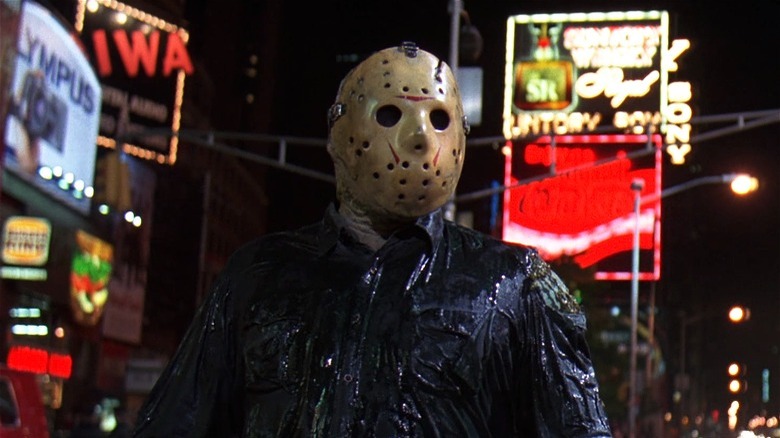
The eighth installment in a horror franchise that was never particularly well-loved by critics was always going to fight an uphill battle for respectability. That being said, people really, really disliked "Friday the 13th Part VIII: Jason Takes Manhattan." It has the unfortunate distinction of being the second-lowest-rated "Friday the 13th" entry on Rotten Tomatoes, scoring a paltry 11 percent fresh rating. Although the film promises the hockey-masked slasher stalking the streets of the Big Apple, the majority of the film takes place on a ship headed to New York. It's more like "Jason Takes a Boat to Manhattan."
That's a valid complaint, but it's been over than 30 years. Now that we know most of the film doesn't take place in Manhattan, it's time to admit that the film is incredibly fun! Kane Hodder makes a great Jason. He's hulking and wet, looking swollen and grotesque from his years underwater. From a neon-lit disco chase scene to a grimy, goofy number with a rocker chick ending up on the wrong end of her guitar, the kills that take place on the boat are awesome.
Once Jason does get to Manhattan, the movie's vision of New York is an ultra-'80s delight. Punks roam the streets. Graffiti covers the subways. Barrels of toxic waste fill the alleys. Jason punches someone's head clean off their body. You know ... classic New York.
The Ruins (2008)
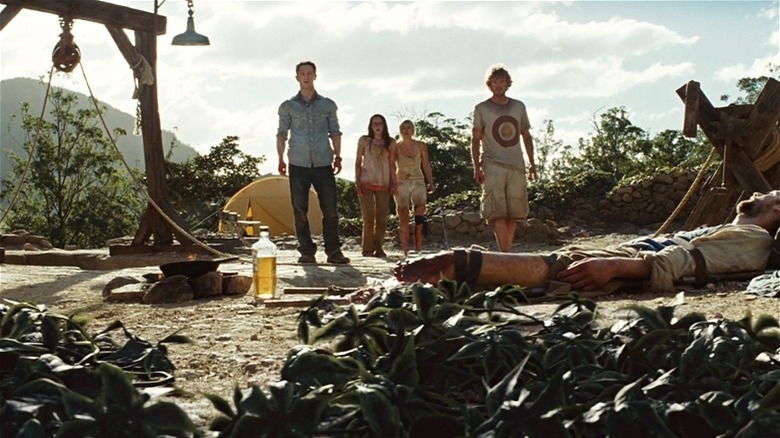
Horror got mean in the 2000s, with torture porn films like the "Saw" franchise pushing the limits of cinematic gore. Many critics weren't on board with the boom. Critic Roger Ebert published a letter from a reader who wrote that torture porn films "don't seem to stimulate the artistic part of the brain." In the years since, some critics have re-evaluated the subgenre, situating it in a post-9/11 culture curious about what torture looked like. After all, we were embroiled in a national conversation about the morality of "enhanced interrogation techniques." What if someone did to us what we were doing to others?
One film that deserves a reappraisal is Carter Smith's 2008 shocker "The Ruins." The film sits at only 49 percent fresh on Rotten Tomatoes, but for me, it's the best of the bunch. Yes, the gore is over-the-top, but to call it "gratuitous" suggests that it's without purpose. Instead, the gore — and the discomfort it inspires — is the point.
The film involves a group of ignorant Americans (an excellent ensemble including Jena Malone and Jonathan Tucker) who visit ruins they were warned away from. They find themselves trapped by an eerie, sentient species of vine that mimics sound — and crawls inside them while they sleep. Their only recourse is to operate on one another, slicing the vine from beneath their skin. Equal parts gross and deeply unsettling, it's a perfect metaphor for an America tearing itself apart to root out terrorism.
Black Christmas (2006)
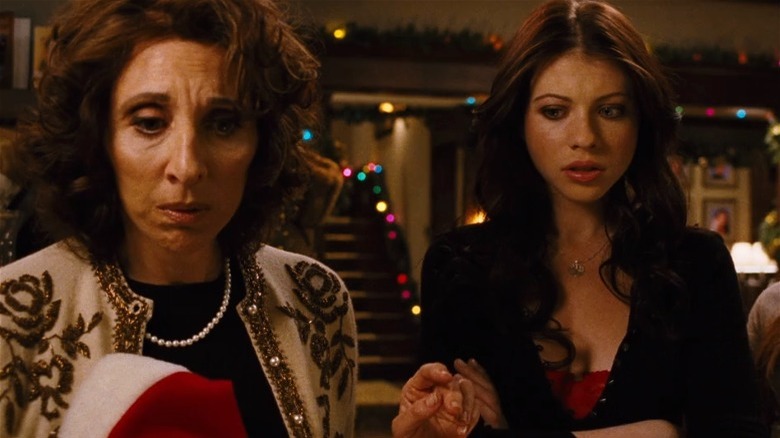
Bob Clark's classic slasher "Black Christmas" predated "Halloween" by several years, and it may have even directly inspired the latter film. It's about a killer named Billy who terrorizes a group of girls stuck at a sorority house over the holidays. The movie received mixed reviews when it was first released, but by the time it was remade in 2006, during the aughts remake boom, its influence on the genre was widely accepted.
Critics tend to look down on remakes, and "Black Christmas" only managed to scrounge up a paltry 16 percent fresh rating on Rotten Tomatoes. Sure, it's not the original, which is atmospheric and weird. Once we get past that, though, 2006's "Black Christmas" is worth a watch for anyone willing to accept that a remake in a gritty 2000s style should be allowed to do its own thing. A veritable who's-who of promising aughts actors, the cast is excellent. Michelle Trachtenberg, Lacey Chabert, Katie Cassidy, and Mary Elizabeth Winstead star alongside Andrea Martin, who was also in the original. They all know what kind of movie they're in, and they dig in with relish.
The remake is also grimy in a way that works. Cinematographer Robert McLachlan manages to shoot Christmas lights in such a way that they look as sleazy as the neon lights of a Times Square porno shop. The effect makes "Black Christmas" a deliciously dirty slice of holiday horror.
Hell Fest (2018)
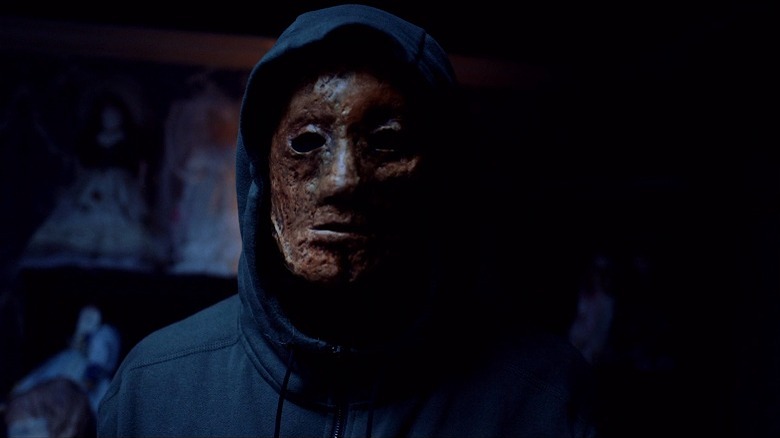
The slasher film seems to be making a comeback thanks to recent hits like "Freaky" and "X," not to mention new installments of classic franchises like "Halloween," "Hellraiser," and "Scream," to name a few. Just a few years ago, however, the idea of a new, original R-rated slasher felt like an oddity. Released in 2018, "Hell Fest" seems like a movie from a different time when studios pumped out dozens of these things a year. Audiences didn't particularly care. It barely cracked $5 million in its opening weekend, and it sits at 39 percent fresh on Rotten Tomatoes.
Many critics pointed out that "Hell Fest" doesn't offer anything new to the slasher genre, which at that time felt played out and outdated. However, that's not necessarily a bad thing! For a certain audience, a competently executed slasher is satisfying. In fact, after decades of self-aware, self-referential slashers like "Scream," it's downright refreshing to see a movie like "Hell Fest" that's content to simply deliver the kills and the scares.
The story takes place in an amusement park on Halloween. Real-world theme park "horror nights" like this require a suspension of disbelief, a willingness to wonder what it'd be like if that's not a park employee with a chainsaw but an actual killer intent on slicing and dicing his way through the masses. "Hell Fest" leans into that fear. It's nothing sophisticated or groundbreaking, but it's a fun movie.
Don't Hang Up (2016)
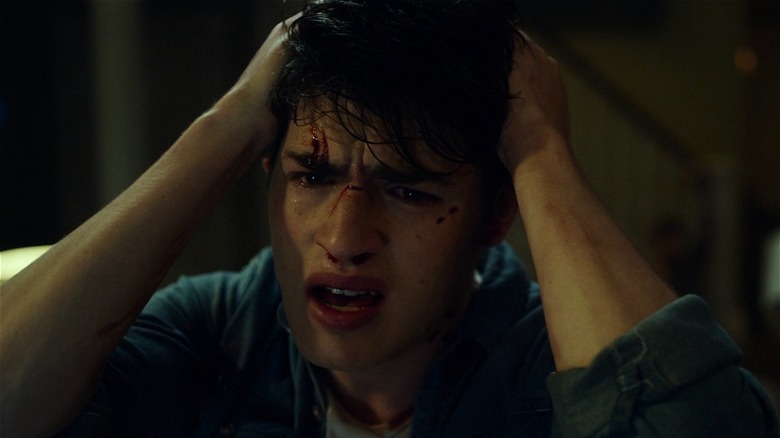
The 2016 horror film "Don't Hang Up" wasn't necessarily critically-panned so much as it was critically ignored. Out of the 17 reviews of the low-budget thriller that are on Rotten Tomatoes, only 29 percent are positive. Most seem to agree that the characters are unlikable and that the film's killer seems to have unexplained powers over the situation. Those are both true, but it strikes me that the unlikability of the main characters is what makes the movie so effective.
"Don't Hang Up" is about two friends, Sam (Gregg Sulkin) and Brady (Garrett Clayton), who do pranks for their YouTube channel. By "pranks," I mean "cruel practical jokes." They call people on the phone and give them horrific news, like pretending that someone's wife has died in a terrible car accident. As the person on the other end of the line understandably has a meltdown, they film the conversation, cackling over their anguish. One person, however, warns them, "Don't hang up." He calls himself "Mr. Lee" (Parker Sawyers), and he has kidnapped their families. And if they don't do what he says, their families will die.
The movie is full of simmering, homoerotic tension between the two lead characters, playing into the way straight men can act out violently as a way to release other urges. Yeah, they're awful people, which makes it supremely satisfying to watch justice be served — even if it's in the form of a psychopathic killer terrorizing them in their home.
Texas Chainsaw Massacre (2022)
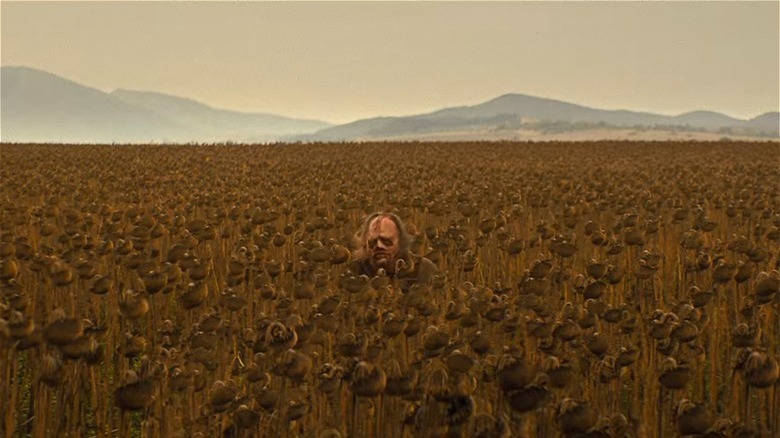
Released in the wake of the Vietnam War, the Manson Family murders, and the Kent State Massacre, Tobe Hooper's "The Texas Chain Saw Massacre," reflects an America headed down a dark path. Serving as a direct follow-up to the original, Netflix's legacy sequel ditches the franchise's convoluted continuity. In this one, we've reached the end of the road. I mean that quite literally. "Texas Chainsaw Massacre" takes place on a dead-end street that serves as the only main road in a dusty, forgotten ghost town. This is Americana reduced to a shell of itself. Sally Hardesty and her brother once walked through a vibrant field of sunflowers, but now they're all wilted, scorched under a Southern sky that's only going to keep getting warmer.
As many critics noted, some attempts at modernizing the franchise land with a thud. A bit where someone threatens to "cancel" Leatherface is particularly embarrassing. Still, this film is in conversation with who we are now as opposed to who we were then. Our young people aren't necessarily being sent to die in a war on the other side of the world. Instead, the main character (Elsie Fisher) is a school shooting survivor. Who is Leatherface in a world like this?
Plus, some of the kills are incredible! Directly following that line about "cancellation" is one of the goriest over-the-top scenes of chainsaw mayhem in the entire franchise. As messy as it is, it's hard not to respect "Texas Chainsaw Massacre."
Cold Skin (2017)
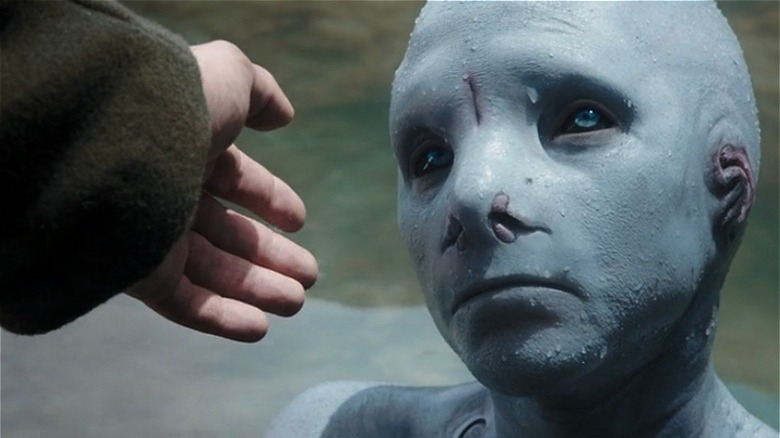
"Cold Skin" seems to have no idea what kind of movie it wants to be, and it's all the better for it. Simultaneously a horror movie, an action thriller, and a weird interspecies romance (think "The Shape of Water"), "Cold Skin" offers a bit of something for everyone, and in doing so, wound up polarizing critics. The movie is about two men on an island in the Antarctic Circle, stuck in a lighthouse where they are besieged nightly by creatures from the sea. Blue humanoid monsters swarm the building in the darkness and must be beaten back, and the fight might just be driving the men insane. One day, one of the men (David Oakes) learns that his fellow lighthouse caretaker (Ray Stevenson) has befriended one of the creatures. She's oddly beautiful. Her bright shining eyes and lithe body are utterly captivating to the men. Soon enough, they begin to compete for her attention.
Many critics felt that the film didn't necessarily have a point of view or anything interesting to say about its subject matter. That's okay, though. It feels at times like a hangout movie, just an excuse to spend some time in a gorgeous yet frightening location with some intriguing personalities. It's a creature feature as a tone poem and a chilly, eerie meditation on place and time and beauty rather than a film focused merely on plot. Go in expecting that, and you may find yourself swept away.
Urban Legends: Final Cut (2000)
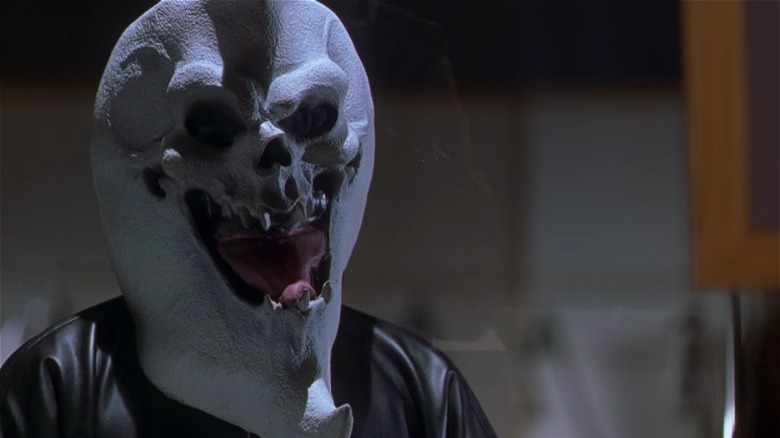
The self-referential 1998 slasher "Urban Legend" boasted a cast full of '90s icons like Tara Reid, Joshua Jackson, and Jared Leto. The plot involved a killer acting out classic urban legends, but in a post-"Scream" world, critics weren't feeling it. The film has a 24 percent fresh rating on Rotten Tomatoes, which is pretty bad. Still, it managed to spawn two sequels. "Urban Legends: Final Cut" fared even worse. That one currently sits at only 9 percent fresh.
Nevertheless, with the right mindset, "Urban Legends: Final Cut" can be a worthwhile watch. I won't claim the movie is "good," exactly, but it's certainly interesting. This time around, the action takes place at a film school, and the killer isn't recreating urban legends as much as he is restaging murders from classic horror scenes. After all, as the film quite didactically lays out, horror movies are our modern urban legends. Have you heard the one about the woman at the motel who was killed in the shower? "Urban Legends: Final Cut" has, and it apes the classic "Psycho" scene in one of its most memorable sequences. Sure, the result is unquestionably worse, but it's interesting to see a familiar scene filtered through the aesthetics of late-'90s teen horror, if only because sometimes a bad thing can make its good counterpart look even better. Leaning into bad horror sequels is part of the fun of being a fan of the genre, and at least "Urban Legends: Final Cut" tries something new.
The Hitcher (2007)
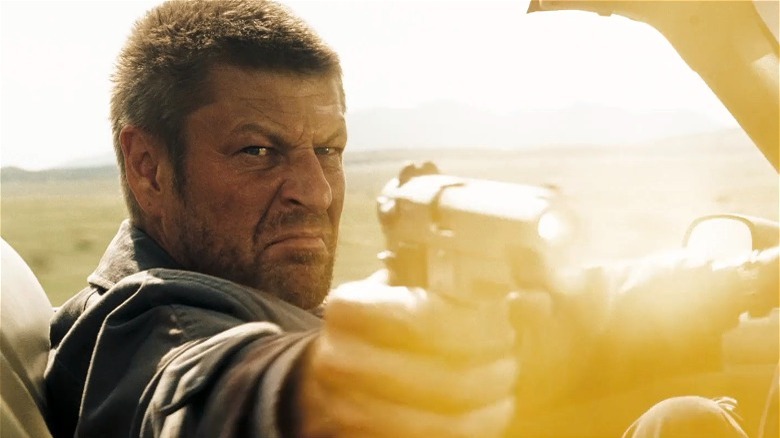
Criticism of remakes tends to fall into similar patterns. "It's not as good as the original," everyone says. "It's unnecessary when the original exists." That's pretty much how people felt about the 2007 update of "The Hitcher," starring Sean Bean as an evil hitchhiker first played by Rutger Hauer. Those observations aren't wrong, exactly. The 1986 original still holds up, and it's probably better.
On its own, though, the "Hitcher" remake is a solid, nasty little thriller still worth your time. The movie is about a couple (Zachary Knighton and Sophia Bush, who have more believable chemistry than the original's C. Thomas Howell and Jennifer Jason Leigh) on a road trip across the West. One night they nearly hit a man (Bean) standing in the middle of the road, and instead of stopping to make sure he's okay, they continue on. They later stop at a gas station and are approached by the man, who asks for a ride. He attacks them, and they escape by kicking the door open while flying down the highway. For the rest of the film, they are pursued by the vengeful hitchhiker.
Hauer's hitcher seemed like an evil guy. That was scary enough. Bean offers a different take on the character, making him frighteningly blank. The movie is tense and action-packed in that gritty, mid-aughts Platinum Dunes way. If we're going to look back and reclaim that aesthetic, let's start here.
House Of Wax (2005)
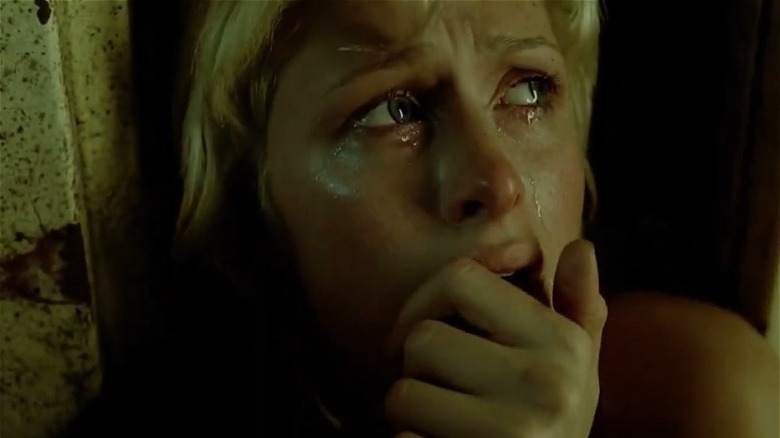
If we're reclaiming 2000s remakes, let's start with Jaume Collet-Serra's version of "House of Wax." The movie shares its title with the 1953 Vincent Price film, but other than the basics of an evil wax museum where people get trapped inside wax figures, the two have little to do with one another. Instead, this one is about a group of teens headed to a football game and wind up trapped in a small town that features the titular house of wax. By aughts standards, the cast is stellar. In addition to stars like Chad Michael Murray, Elisha Cuthbert, and Jared Padalecki, Paris Hilton appeared at the height of her tabloid fame, and her presence provides the film with an iconic marketing campaign: "See Paris Die."
Many critics at the time faulted the film for being cruel and vicious. However, if we come at "House of Wax" from the basic premise that those are good qualities in a horror film, the movie easily succeeds. The kills are deranged, the performances are as solid as you could want from a teen slasher like this, and the whole thing is stylishly directed by Collet-Serra, who would go on to helm modern horror classics like "Orphan" and "The Shallows." See Paris die, but stick around for everything else, too.
The Strangers: Prey At Night (2018)
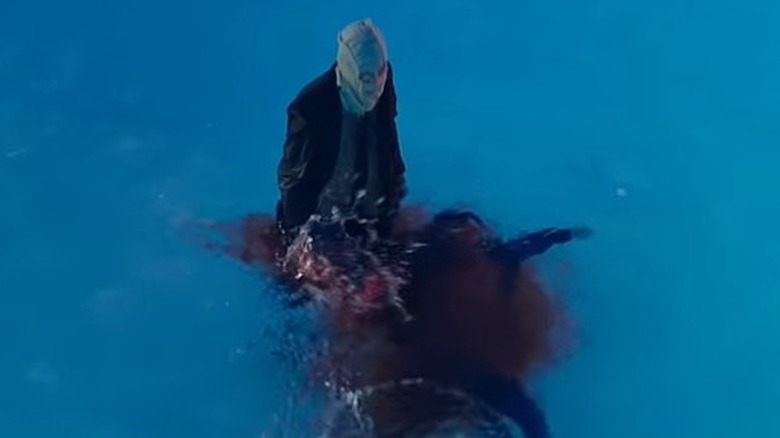
Bryan Bertino's 2008 chiller, "The Strangers," is a movie concerned mostly with atmosphere. It tells the story of a couple at home alone who realize that there are people in masks outside their house, watching them. It's a supremely spooky endeavor that generated its thrills not necessarily from shocking violence but from the creepiness of noticing a shadow down a hallway.
"The Strangers: Prey At Night" arrived a full decade later, and it has little interest in trying to recapture the tone of the original. Unsurprisingly, many critics were disappointed by that. The movie stands at 39 percent Fresh on Rotten Tomatoes, with many complaining the series traded atmosphere for action. That's all true, and if you're looking for the experience of watching "The Strangers" again, you're welcome to watch "The Strangers" again. "The Strangers: Prey at Night," though, is a ton of fun anyway.
This time, the masked strangers stalk a family at an RV campground. The movie goes for pure '80s slasher thrills, and it more than delivers. One sequence at a public pool ringed with neon palm trees and gleaming in the night is the best scene in both movies. Director Johannes Roberts, who helmed "47 Meters Down" and its sequel, knows how cool blood looks against too-blue water, and the whole chase is set to Bonnie Tyler's "Total Eclipse of the Heart." If this is what the sequel wants to be, I'm more than happy to let it.
Blair Witch (2016)
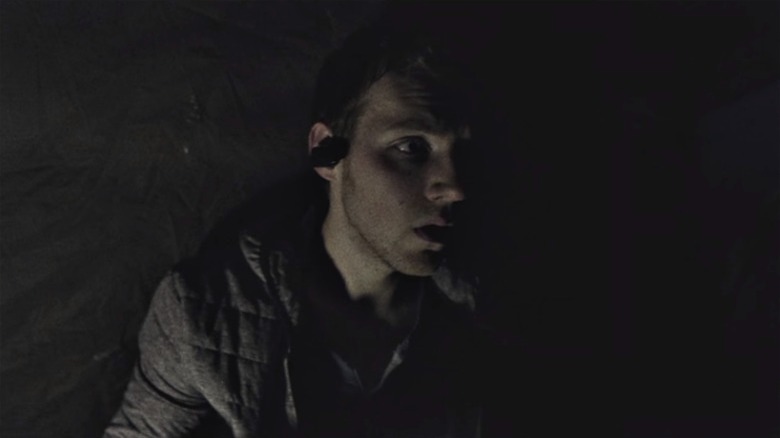
One of the first "found footage" movies. "The Blair Witch Project" burst into theaters in 1999. Ingeniously, the filmmakers were part of the story, as the movie billed itself as the recovered footage from a documentary crew who were attempting to make a movie about a local legend. Its handheld cameras created an immediacy between the viewers and the creepy action on screen. Consequently, many people weren't sure whether what they were seeing was real or not.
By the time the legacy sequel "Blair Witch" hit theaters in 2016, audiences were more savvy. The found-footage genre boom had come and gone. The "Paranormal Activity" franchise went dormant the year before. Consequently, many critics weren't willing to engage with the film, as they considered found footage passé. However, there might just be more going on here than a lot of people were willing to give it credit for. "Blair Witch" was directed by Adam Wingard, who had just helmed "You're Next" and "The Guest." As in those films, the director uses the familiar tropes of the genre to subvert and surprise audience expectations.
This time around, a group of YouTubers is attempting to retrace the footsteps of the cast of the original film. By the third act, the film twists in on itself, and time and space become blurred. It's a wacky ride well worth taking — once you allow that found footage can be worthwhile.
Read this next: Horror Remakes That Are Better Than The Originals
The post Critically Panned Horror Movies That Are Worth A Watch appeared first on /Film.
FBI Recommends Ad Blockers as Cybercriminals Impersonate Brands in Search Engine Ads
The Federal Bureau of Investigation (FBI) this week raised the alarm on cybercriminals impersonating brands in advertisements that appear in search engine results. The agency has advised consumers to use ad blockers to protect themselves from such threats.
RTX Remix Hacks Will Now Be Easier After NVIDIA’s Helpful Intervention on Portal RTX

We've published multiple articles on the many RTX Remix' hacks' attempted by modders ever since the release of Portal RTX. Games like Half-Life 2, Max Payne, SWAT 4, Unreal Tournament 2004, and Battlefield 1942 all received shiny, albeit work-in-progress, showcases of the impressive remastering tool developed by NVIDIA.
However, many more just don't work. Luckily, the community effort impressed NVIDIA to the point where the latest Portal RTX update also introduced some tweaks to improve RTX Remix compatibility with other games. Tech Lead Alex Dunn shared the following message on the dedicated Discord channel:
We've just updated the live Portal with RTX build with some critical bug fixes and other minor improvements (including the much requested low and medium graphics presets).
Here at NVIDIA, we're super impressed with all the amazing work this community has been doing on RTX Remix title compatibility, and as such we decided to include some general compatibility fixes in this patch to help further this great work!!
We looked at some of the common issues the community are running into and compiled a handful of fixes we think are low risk enough to include in the Portal with RTX patch. Unfortunately this doesn't mean we've fixed every issue with general RTX Remix compatibility reported by the community. That said, we think this will help address some of the crashing and otherwise compatibility blocking issues you've discovered.
Of course, the Portal RTX update released today doesn't just improve RTX Remix compatibility with other games. The team at Lightspeed Studios also introduced several new graphical settings and optimized graphics presets, with the expectation of improved performance for most RTX GPUs. Default settings are now set to "Ultra" for RTX 40 Series GPUs, "High" for RTX 30 Series GPUs, and "Low" for RTX 20 Series GPUs. Here's the full changelog for update 1.5:
- Fixed some issues that could cause a crash on startup
- Improved stability for lower resolutions
- Changed "Fullscreen" mode to non-exclusive, which will improve stability; True fullscreen exclusive mode can still be enabled in the developer settings if desired (found in the Remix graphics menu via Alt-X)
- Added Medium and Low graphical setting presets to improve performance on lower spec GPUs. Tuned up the High setting preset to include better volumetric lighting and particle lighting.
- Presets now influence DLSS quality level when DLSS is set to "Auto"; custom DLSS quality levels can still be set, same as before
As a reminder, RTX Remix is not officially available yet. We'll let you know as soon as NVIDIA makes it publically available.
The post RTX Remix Hacks Will Now Be Easier After NVIDIA’s Helpful Intervention on Portal RTX by Alessio Palumbo appeared first on Wccftech.
Portal with RTX is a flawed diamond of a ray traced remaster
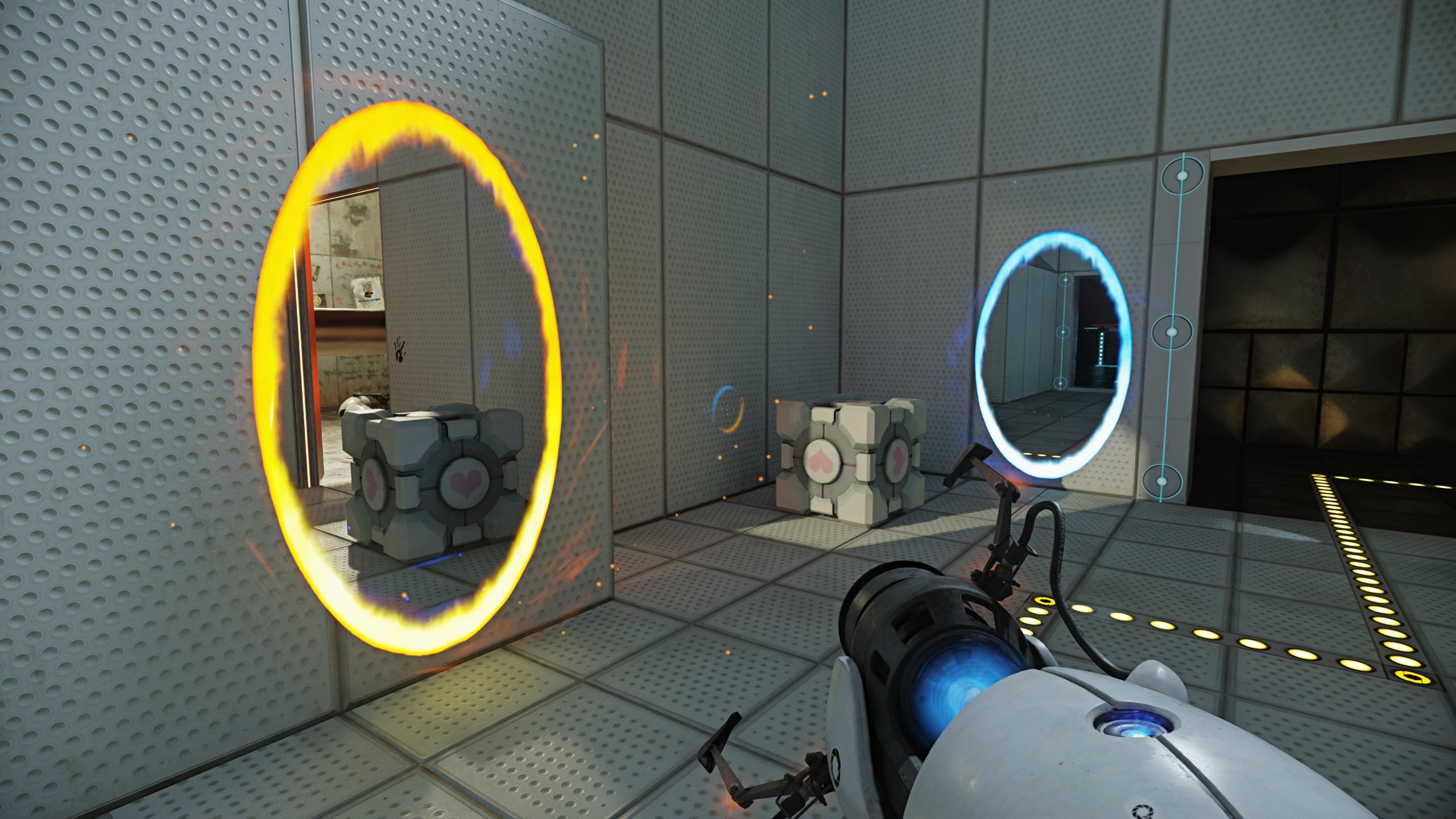
If I were a PC graphics bigwig, choosing which aged game to spruce up with ray tracing as an elaborate mod tools advert, I wouldn’t have gone for one with as timeless an aesthetic as Portal's. Maybe that’s why I’m not one – Portal with RTX is a gorgeous return to Aperture Science, a borderline must-play for anyone with a premium GeForce RTX GPU, and a mightily impressive demonstration of the Nvidia RTX Remix tools that built it.
Admittedly, that’s in spite of some shortcomings, including utterly broken performance on even the strongest Radeon RX graphics cards. Equip yourself with RTX hardware, however, and this free mod is a real Christmas treat.
Here Comes a Bomb Cyclone to Ruin Christmas
Why Quentin Tarantino Decided To Center The Hateful Eight Around Jennifer Jason Leigh
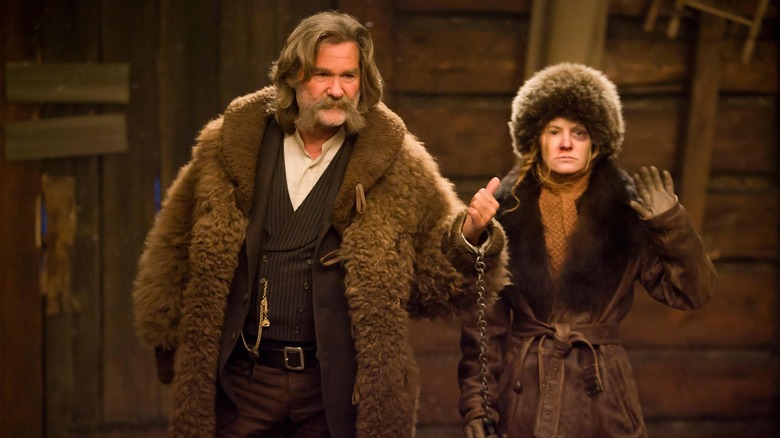
Casting is a subtle art, and though casting directors are the backbone of the industry in a lot of ways, directors are more deeply involved in the process than even most people realize. So much of making Quentin Tarantino's stories work hinges on casting, and for his ninth film, "The Hateful Eight," it was a crucial element. In a 2015 interview with Entertainment Weekly, Tarantino explained that he couldn't cast the role of Daisy Domergue, played by Jennifer Jason Leigh, as he normally would with any other project.
"It was almost an impossible role to cast in a conventional way," he explained. "I.E., an actress coming in the room and knocking our socks off, and us saying, 'Oh wow, that's Daisy.' Because if you've seen the movie, you know that the way she is in the last chapter is not necessarily the way she is in the chapters building up to it. So, with that in mind, I wasn't necessarily looking for someone to nail her speech in that final chapter."
The filmmaker revealed at the time that he looked at several different actresses for the role who had prominent careers in their youth in the 1990s. That yellow brick road of sorts led him to Leigh.
The Jennifer Jason Leigh Film Festival
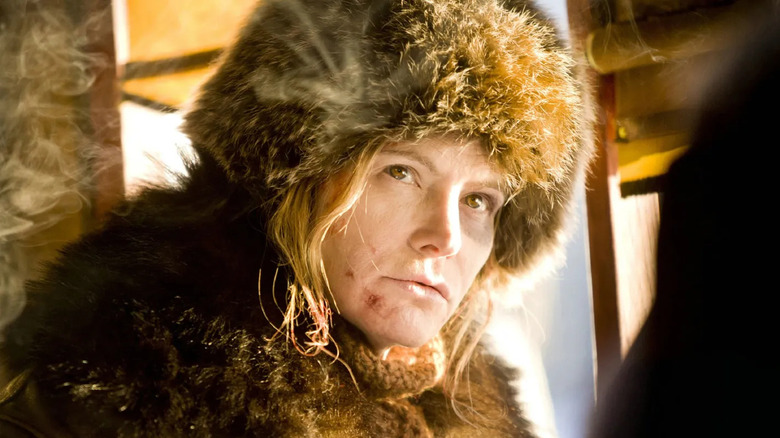
"That's the era that most of my actors made their bones, and that's the era when I made my bones," Tarantino added. "There was a throwback to 'Reservoir Dogs' quality to this whole [movie] so there was this kind of full circle quality going on. So I was like, the actress should be from that same boat as the [other] actors, and there were about three actresses from that period that really kind of made an indelible mark on me. I started going on little film festivals of the three, and frankly, it was the Jennifer Jason Leigh film festival that I enjoyed the most."
He went on to explain that he watched films of hers like "Single White Female," "Heart of Midnight," "The Men's Club," and "Fast Times at Ridgemont High" while sussing out if he wanted her for the "The Hateful Eight" role. "But it was more kind of the combination of 'Mrs. Parker and the Vicious Circle' and 'Georgia' and 'Miami Blues' and 'The Hitcher,'" the director said of what struck him in Leigh's career highlights. "Another big one that helped was a Paul Verhoeven movie she did, 'Flesh+Blood,' with Rutger Hauer. She's terrific in it."
An exploration of these titles and what kind of opportunities they afforded Leigh as a performer enticed Tarantino and got him thinking about her in the Daisy Domergue part. Plus, he knew she was the kind of actress he wanted in the role.
Gratuitous Gender Violence In The Hateful Eight
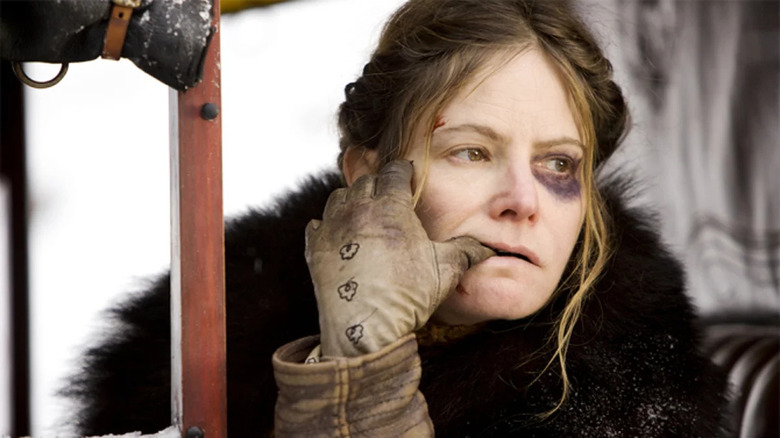
Tarantino added:
"I literally was just having a ball with this Jennifer Jason Leigh film festival. It was a nice little reminder that in the '90s, she was like a female Sean Penn. You didn't just cast her in girlfriend roles; you cast her in movies where the whole movie was about her performance. So it got me very, very excited about seeing a performance-dominated Jennifer Jason-Leigh movie."
Leigh is undoubtedly on point in Tarantino's weakest feature — yeah, that might just be my take, but I stand by it — but even her great casting can't save the torturously misogynistic chore the film is as a whole. That entire perspective stems from how her character is treated from the very beginning of the film onward, and yes, it is evident that the director is putting that treatment on display to prove a point. That doesn't make the treatment any easier to sit through or give us grounds to forgive the actions, as outlandishly used as they are, in service of the story. Usually, when gratuitous violence attached to a bias is used, there are ways to get the same tonal or emotional effect that doesn't subject the audience to the harsh realities of that bias (you know, unless the central thesis of the film hinges on that experience in a way that is actively exploring bias).
I grew up on Tarantino and am a major fan of his work. Still, he's known for pushing the envelope in this way — he's long since garnered criticism over his use of racially-motivated language in his films as well as the way he treats female characters despite a track record of power and agency within their stories. For all the good Leigh does in her performance, especially in the film's opening which introduces her character, he arguably does her a disservice straight from the start.
Read this next: The Best Movies Of 2022 So Far
The post Why Quentin Tarantino Decided To Center The Hateful Eight Around Jennifer Jason Leigh appeared first on /Film.
Heroes of Might and Magic II game engine remake fheroes2 hits 1.0
Okta had another security incident, this time involving stolen source code
Okta is responding to a major security incident for the second time this year. As first reported by BleepingComputer, Okta began notifying customers earlier today via email of an event that saw an unnamed party steal the company’s source code. In early December, Okta was notified by GitHub of possible suspicious access to its online code repositories. Following an investigation, Okta determined someone had used that access to copy over its source code but that they had subsequently not gained unauthorized access to its identity and access management systems.
In a statement Okta shared with Engadget, the company confirmed it was notifying customers of a recent security incident, and pointed to a blog post it published moments ago. "In early December 2022, GitHub alerted Okta about possible suspicious access to Okta code repositories. We have confirmed no customer data was impacted, nor was there any other customer impact. No customer action is required and the Okta service remains fully operational and secure," an Okta spokesperson told Engadget. "Okta does not rely on the confidentiality of its source code for the security of its services. This event does not impact any other Okta products, and we have been in communication with our customers."
While the damage from the GitHub incident appears minimal, the event was still a significant test of Okta. Following the Lapsus$ breach that saw hackers from the ransomware gang access two active customer accounts, the company admitted it “made a mistake” in handling the disclosure of that data breach. You may recall it took Okta two months to notify customers of what had happened, and one of the things it promised to do in the aftermath of the incident was “communicate more rapidly with customers.” That pledge was put to the test.
Update 4:27PM ET: Added confirmation and comment from Okta.
The Rise of the Rookie Hacker - A New Trend to Reckon With
Li’l Taffer Is A Free Thief-like Game
Li'l Taffer was made for 7dfps 2022, a game jam that challenges designers to create a fully functional FPS game in a week. That explains the look of the game, as well…
Why Jonathan Kasdan Wanted A 20-Year Time Gap Between Willow And Its Sequel Series
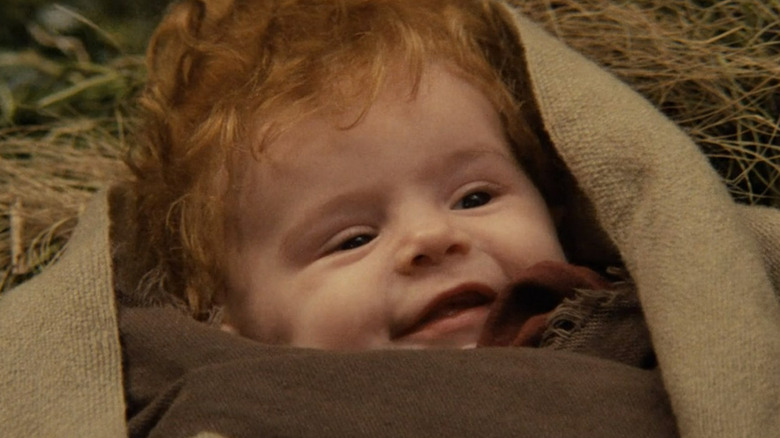
"Willow" is one of the latest episodic adventures to release on Disney+ and it follows a band of heroes as they embark upon an epic quest to rescue a princely dude in distress. There's, uh, not really a male equivalent to that particular traditional phrase, so "dude in distress" is just going to have to be enough until we make something better. Sorry. The series serves to continue the tale which began in the 1988 film, "Willow." Yes, the original film and the Disney+ series share their name, so while it makes differentiation a bit difficult, at least the story has solid branding.
A notable feature of the Disney+ series is that it takes place several years after the original story. 20 years, in fact. According to Jonathan Kasdan, the showrunner for the latest addition to George Lucas' fantasy, that time jump stemmed from narrative demand. More specifically, it stemmed from the desire to tell stories about Elora Danan, the child of prophecy, because infants aren't particularly experienced in the art of filmmaking. Okay, that's sort of a joke, but only sort of. Here's why Kasdan's continuation of "Willow" saw Elora hidden away from her fate for so many long years.
A Gap Born Out Of Narrative Necessity
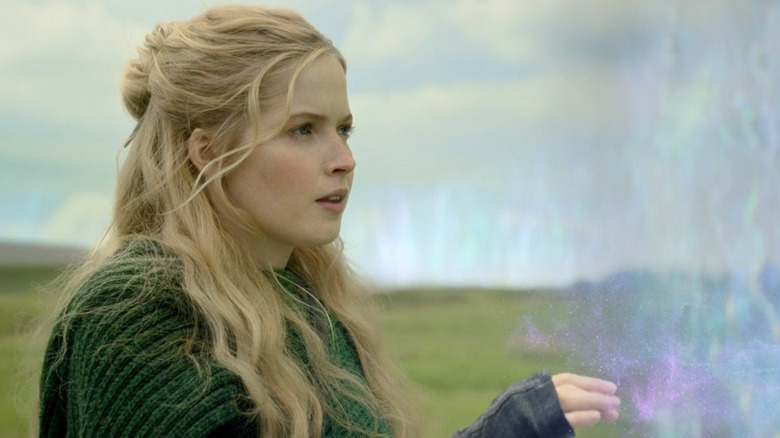
In an interview with Collider, Jonathan Kasdan shared that a narrative-based time gap between the original "Willow" and the Disney+ series, one that broadly (although by no means exactly) matches the real-time gap between the two releases, was born out of the necessity to supplement the story that Kasdan wanted to tell. Kasdan told Collider that:
"I'm someone who came out of seeing [the feature] thinking, 'Well, I expect one of these every three years [...] I'm supposed to see Elora at seven, and then at 12, and then at 15,' and all these things. And because the realities of the industry, and the world, created a dynamic where this was the moment when we could make a story about these characters and follow it up, I knew that in story terms, at least, there was going to be a good 20-year gap between the movie and when we picked up. [...] The story I wanted to tell was [always] about Elora learning about magic. So it sort of organically just arose, that the way to tell that story and experience her whole journey was to hide that information from her for that period of time and to let it be something that she discovers along with the audience."
The gap did more than offer Elora a chance at adulthood, however. Jumping forward in time allowed all of the original actors that were able to return to "Willow" to do so. Otherwise, Warwick Davis would have been forced to pretend that 30 years worth of aging all came down to the inherent exhaustion of parenthood. Come to think of it, that would have been pretty damn funny, actually.
The "Willow" series is now streaming on Disney+.
Read this next: The 14 Best Moments In Willow, Ranked
The post Why Jonathan Kasdan Wanted A 20-Year Time Gap Between Willow And Its Sequel Series appeared first on /Film.
Fallout 76 is still alive and kicking, based on this infographic
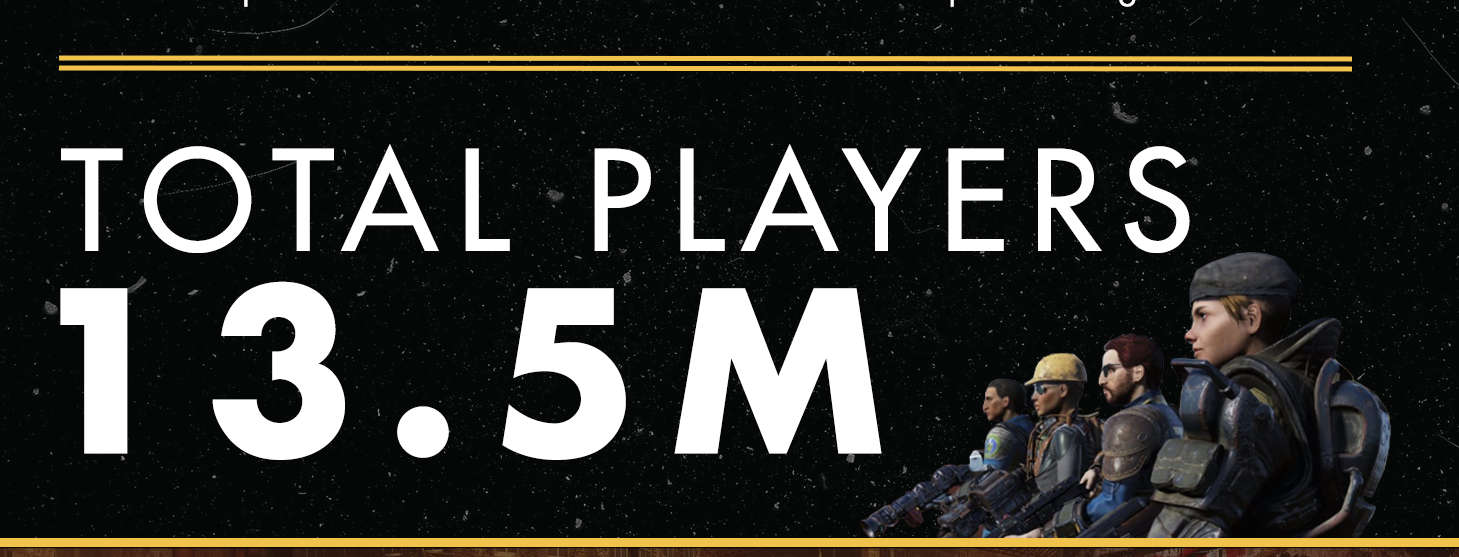
13.5 million total players is the main stat
Fallout 76 has had a wild ride since its release...wow, over four years ago?! It's crazy to think how many things have changed since then, Fallout 76 included! It's gone from one of the biggest AAA disasters in recent memory to a respectable main/side game for many. This week, Bethesda released a "2022 retrospective" of sorts, complete with an infographic.
As is usually the case with these things, the info therein ranges from useful to silly. The main stat is that 13.5 million players engaged with the game in 2022 (keep in mind it's on Game Pass, and was offered for free several times): and from there, it gets a little more inside baseball.
If you play the game, you might find some of the other useless stats humorous, like the thumbs up taking the crown as the most popular emote, or the fact that there's been 2.9 million nukes dropped. Oh, and that folks prefer forest locations for setting up their camps/home base. "Boiled water" taking the top spot as the most prepared food/drink (combined!) is also funny to me.
With the massive Pitt update in the rear view and the new season afoot, folks are wondering what 2023 has in store for Fallout 76. Hopefully it still includes some combination of free access via Game Pass, as well as a healthy mix of smaller/bigger patches.
A great big Fallout 76 2022 recap:

The post Fallout 76 is still alive and kicking, based on this infographic appeared first on Destructoid.
The Real Reason Why YouTube Removed Dislikes on All Videos
In November 2021, YouTube removed the public dislike count from all of its videos. While creators can still see the number of dislikes within YouTube Studio, viewers can only see how many likes a video has received.
Ransomware Hackers Using New Way to Bypass MS Exchange ProxyNotShell Mitigations
Gamers are trying to sue Microsoft over the Activision Blizzard deal
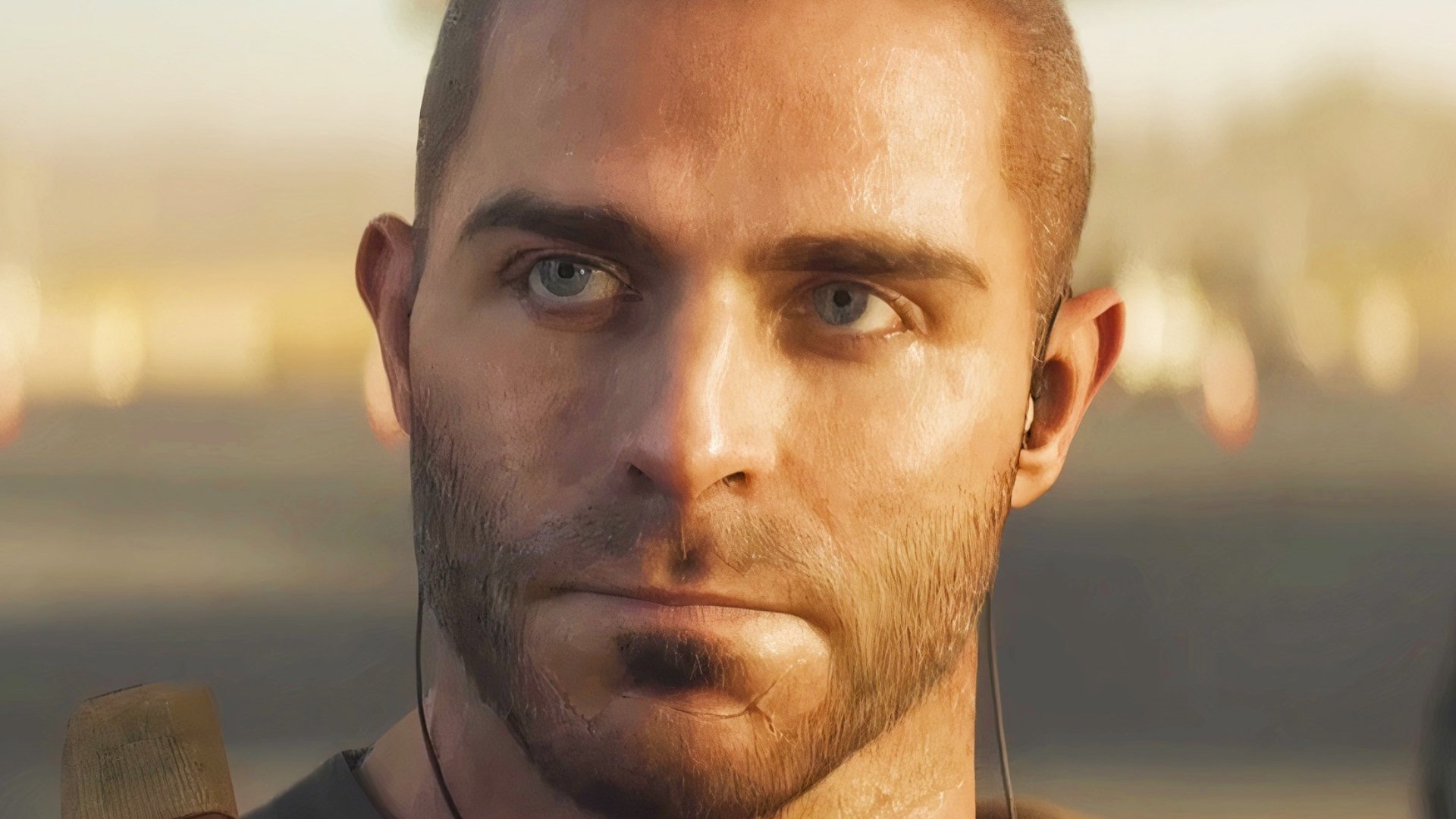
The Microsoft Activision Blizzard deal has come up against a fresh obstacle as a group of proclaimed “videogamers” has filed a civil antitrust suit against the Game Pass creator, claiming that the merger would lead to “less innovation” and “less creativity.”
The 10 Best Mario Games of all time, Ranked

It's a me, Mario rankings!
This may sound funny coming from someone who clearly took the time to write this list, but... how do you rank Mario games?
Everything that I said about ranking Zelda games applies here. Except, also, what is a Mario game? I mean, we all know the big ones count, like Super Mario Bros for the NES or Super Mario 64. Yet does Super Mario RPG count as a Mario game? Does Captain Toad's Treasure Tracker? Is Donkey Kong a Mario game? I know I'm not the first person to dive into this question, but it does impact this entire list. Not only are my opinions subject to debate (as they should be), the very qualifications of what belongs on the list can be contested.
For the sake of some consistency, I've limited this list to platformers that most would agree are Mario games. That said, I'd be remiss not to give honorable mentions to Paper Mario, Paper Mario: The Thousand-Year Door, WarioWare Inc., Super Mario Maker 2, and Donkey Kong (1994). Heck, even my honorable mentions could go much longer. Regardless, let's just agree there have been a lot of great Mario games and dive into one of the most hotly debated rankings in gaming history.

10: Super Mario Land 2: 6 Golden Coins (1992)
Super Mario Land 2 is an impressive feat. This GameBoy title stacks up remarkably well to the console counterparts of its time, especially compared to the first Super Mario Land. Yet the thing that makes Super Mario Land 2 so memorable is how weird it is.
Powerups? How about little bunny ears that let Mario glide? Levels? How about a vaguely Halloween themed world and a giant Mario robot that we'll call Mario Zone? Even the title, 6 Golden Coins, implies that the dozens of coins Mario collects in each level are counterfeits. Only a game as weird as this could add Wario to the Mario canon, so honestly, there's no reason anyone should dislike this one.

9: Super Mario Bros. 2 (1988)
Heck yes we're counting Super Mario USA as a real Mario game. Even discounting how this game codified the platforming abilities of Mario, Peach, and Luigi while introducing enemies like Shy Guys, Super Mario Bros. 2 is great game on its own merits. The levels are fun to traverse, the platforming feels great, and chucking vegetables at enemies is just iconic.
Besides, Super Mario Bros 2 is way better than its Japanese counterpart. I Googled "that Doki Doki game" before writing this article and all I got is some girl named Monika who held my computer hostage.

8: Super Mario Sunshine (2002)
Much has been said about Super Mario Sunshine, both good and bad. While it's not as impressive as other major 3D Mario titles, that bar is so high that Sunshine should be appreciated on its own merits. It is also, without question, one of the funniest games I have ever played.
Even briefly revisiting the game for this list, I could not stop laughing at the outlandish moments and awkward dialogue in Sunshine. Even as a young lad, the “Mama Peach” cutscene was so uncomfortable that my friends and I spent weeks unpacking it. To me, Sunshine will always have a place in history for this reason. It captures all the awkwardness of 2002, and it should be preserved long after we leave this mortal coil.

7: Super Mario Bros. (1985)
This is a pretty good game. I hear Chris Pratt is making a movie about it.

6: Super Mario 3D World / Bowser's Fury (2021)
When it comes to Mario games, you'll inevitably find those who prefer the 3D games and those who prefer the 2D games. Super Mario 3D World is a valiant attempt to merge the sensibilities of both by morphing the level-by-level structure of the classic Mario series into a 3D format.
This could have easily been a filler Mario title, but there's a lot of love on display. The aesthetics and music are great, and the level design provides ample exploration while following a straightforward design. This package is particularly elevated on the Switch with Bowser's Fury, a genuinely fantastic title that combines elements of 3D World and Odyssey with its own unique ideas. Though I wish Bowser's Fury could be purchased separately for those who already own 3D World on the Wii U, it's a title every Mario fan should experience.

5: Super Mario 64 (1996)
It is a miracle that the game that first put Mario in a truly 3D world could make it so high on this list. Super Mario 64 isn't just a landmark moment in gaming history, it is a great game. Period.
There is so much here to love. The level variety from the upbeat Bob-omb Battlefield to the frantic Tick Tock Clock is fantastic. The music is memorable, down to the earie jingle you hear when climbing an endless staircase. The atmosphere of the castle that links each level together is evocative, even if it's the limitations of early 3D that accidentally make the whole thing feel like a liminal space. Super Mario 64 can show its age, but anyone who plays video games owes it to themselves to experience it.

4: Super Mario Odyssey (2017)
Before we go any further, let’s get one thing straight: we’re in 10/10 territory here. If I tell someone I like lobster more than fillet mignon, that doesn’t mean I dislike steak. To conclude this questionable analogy, Super Mario Odyssey is an exquisite cut of red meat.
This is the best Mario has ever felt to control in 3D. Possessing other enemies is genius and bouncing off of your own hat is always satisfying. The level design also compliments Mario's capabilities while allowing players numerous choices in how they collect each moon. It's a game that sells itself the minute you look at it, so I probably don't need to explain why this game you already own is fantastic.

3: Super Mario Galaxy 1 & 2 (2007 & 2010)
Many prefer Galaxy 2 over 1 or vice versa, but my memories of them are too close to separate. Maybe if both were included in a theoretical limited-run All-Stars collection of 3D Mario games, I'd have an easier way to distinguish them.
Cheek aside, Super Mario Galaxy 1 & 2 are genuinely special titles. I don't think Mario games need story, but Galaxy's setting meaningfully adds to the experience without stealing the spotlight. The innate melancholy and whimsy here pay homage to Antoine de Saint-Exupéry's The Little Prince, which is the most interesting thing I've ever said about a Mario game. This bleeds into the gameplay too, which places Mario in so many unique gimmicks and environments that play well with his relatively limited movement options. And the music. My goodness the music. If a minute of this game's soundtrack doesn't make you want to play it, I don't know what will.

2: Super Mario World (1990)
The sheer existence of Super Mario World is awe-inspiring. It is an absolute mic-drop game the defined the Super Nintendo/Famicom so definitively that I have to remind myself it was a launch title. Not only does Super Mario World take the established Mario formula to new heights, it brings the joy of discovery from RPGs and distills it into a platforming adventure that anyone can enjoy.
On a basic level, Super Mario World is fun if you just make a straight shot to Bowser. Yet uncovering all the hidden exits and levels adds enough depth for seasoned gamers to enjoy time and time again. I can remember first discovering the Special Zone and feeling amazed that there were still so many levels to complete. Even the background music held a secret I didn't uncover for another 15 years. This is such a wonderful game that I struggled deciding if it should be crowned the best. Yet by the thinnest of margins, I have to give it to the only other game that makes sense by now.

1: Super Mario Bros. 3 (1988)
There is an often-stated belief that lists like this should be objective. Clearly, Super Mario Odyssey has the bigger budget, bigger levels, and better graphics. By this definition, I should discard my memories of huddling together with my cousins in front of a small TV as we took turns playing Super Mario Bros. 3. Or maybe I should forget marathoning this game at the dentist’s office, showing other kids how to get two warp whistles and go to the final world immediately.
Except… why was it Super Mario Bros. 3 in those memories? The first game that myself and countless others remember playing, even if it wasn't the first game we actually played? The truth is, Super Mario Bros. 3 is pure, absolute joy. The sheer acts of moving and jumping are fun. The creative levels that both teach and iterate on gimmicks are masterpieces. The adventure of collecting items and exploring each world captures the imagination. Even as a kid who adored cheat codes, I would full clear Super Mario Bros. 3 over, and over, and over because I knew this game was a treasure. Playing each level and uncovering its secrets was its own reward, and I’ve yet to encounter a person who wasn’t immediately captivated playing this game.
You can point to several games on this list as landmark achievements for video games. Yet for me, Super Mario Bros. 3 is different because it shows why video games themselves are special. Anyone can pick up this game and learn it in a handful of minutes. Yet uncovering its secrets and overcoming its challenges captures the core of why we play video games. Even its stage play aesthetics indicates games should not merely be experienced, but analyzed as a form of art.
Super Mario Bros. 3 is why I’m writing about video games professionally. It is pure fun distilled to its most basic possible form. It is, and always will be, the heart of gaming as we know it. Subjectively speaking, of course.
The post The 10 Best Mario Games of all time, Ranked appeared first on Destructoid.
Val Kilmer's Performance In The Original Willow Was A Guiding Light For The Sequel Series
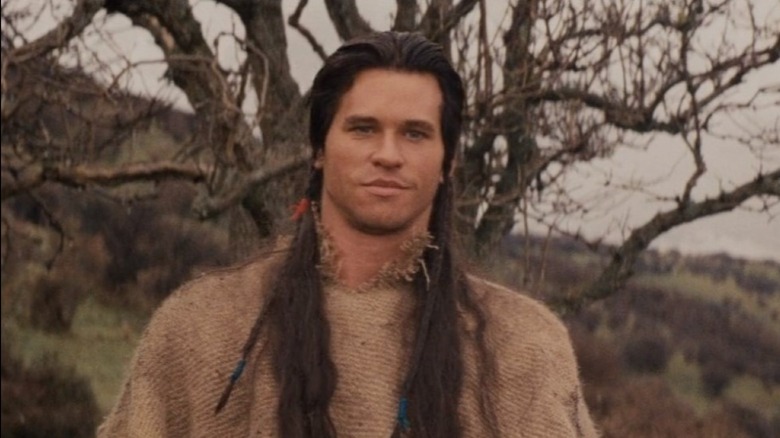
Val Kilmer may not have appeared in the new Disney+ continuation of "Willow", but the spirit of his character, Madmartigan, is all over the delightful adventure series. The rapscallion's cheeky attitude mostly comes through in a character named Boorman (Amar Chadha-Patel), a charming thief who joins Willow Ufgood (Warwick Davis) and the rest of his squad on an adventure early on in the season. Christian Slater is also set to appear later this season as a friend of Madmartigan, but in the meantime, series creator Jonathan Kasdan has found a way to weave the character's essence into the story as a whole.
In an interview with ScreenRant, Kasdan was asked how he stayed true to the 1988 film while still remaining accessible to audience members who may be coming to the series for the first time. His answer? A whole lot of that Madmartigan flair:
"One of the charms of 'Willow' is that it has at its center, this performance by Val Kilmer that's very contemporary and very unusual and surprising and exciting to watch. And I think we wanted to let that too, be something that we continued on in spirit, which was to have contemporary voices, voices that you weren't used to hearing in fantasy, be your guides through it [...]."
The new "Willow" certainly feels contemporary, with episodes that end on modern needle drops, dialogue that drops anachronistic (but hilarious) phrases into the fantasy setting, and characters like Slater's and Chadha-Patel's. All of this feels in sync with Kilmer's performance in the original Ron Howard film, which Chadha-Patel told /Film is "a lot of people's benchmark for the roguish, sword-swinging pain in the ass."
A Fantasy World Populated By Your Friends
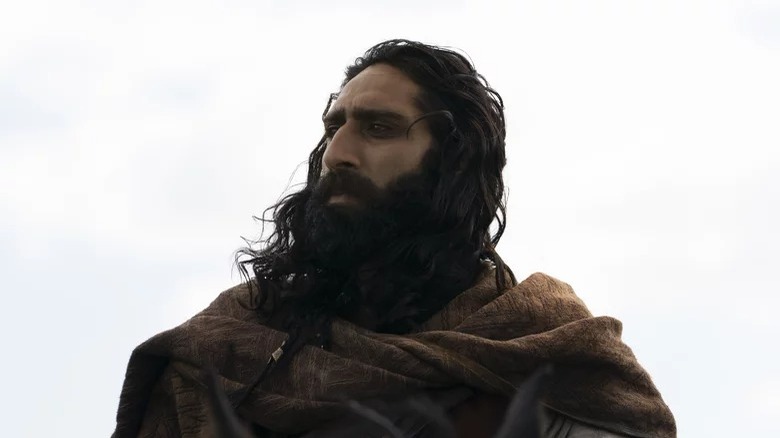
According to Jonathan Kasdan, Val Kilmer's performance opened up the world of "Willow" to audiences. He told ScreenRant that thanks to the contemporary voice of his character in the film, "you get this very unusual and specific experience of going to a fabulous world, but being with people you could imagine were your friends." His vision for a friendly adventure really shines through in the four episodes of the season that are streaming so far. The show is a true ensemble saga, with characters whose dynamics are as endearing and interesting as the quest at the center of the fantasy epic itself. Plus, the show is outright funny, thanks in large part to the scripts' ability to continue the original film's goofy irreverence.
Kilmer himself was originally going to be in the new series, but unfortunately, the cancer survivor reportedly wasn't able to make it to the shoot that took place in Wales during the pandemic. Kasdan has said in the past that he wanted to leave the door open to Kilmer's return, and told Vanity Fair that Madmartigan "comes back by the end of the season" in a meaningful way.
Still, even with Madmartigan's absence, "Willow" is doing its best to keep the spirit of the original film intact, a task that came naturally for a genuine fan of the film like Kasdan. "As a fan of the movie, it's not hard for me to lean into the parts of it that I love," he shared with ScreenRant, "and want to continue the story and build out the world that George [Lucas] and Ron [Howard] so beautifully designed and rendered."
"Willow" is on Disney+, with new episodes streaming on Wednesdays.
Read this next: The 14 Best Moments In Willow, Ranked
The post Val Kilmer's Performance In The Original Willow Was A Guiding Light For The Sequel Series appeared first on /Film.





